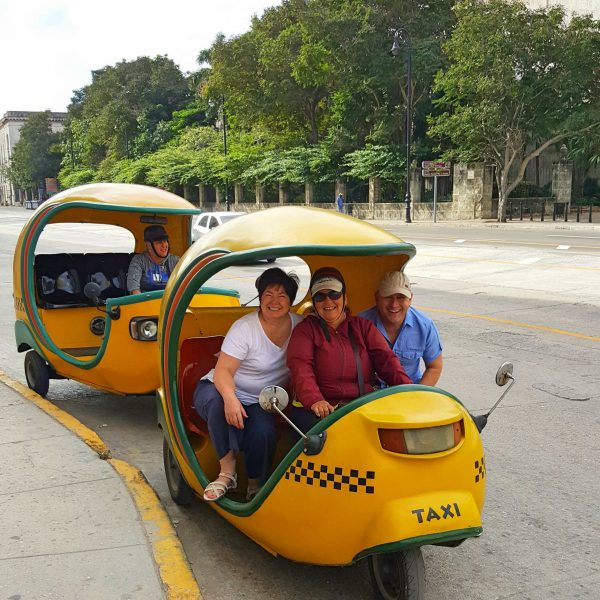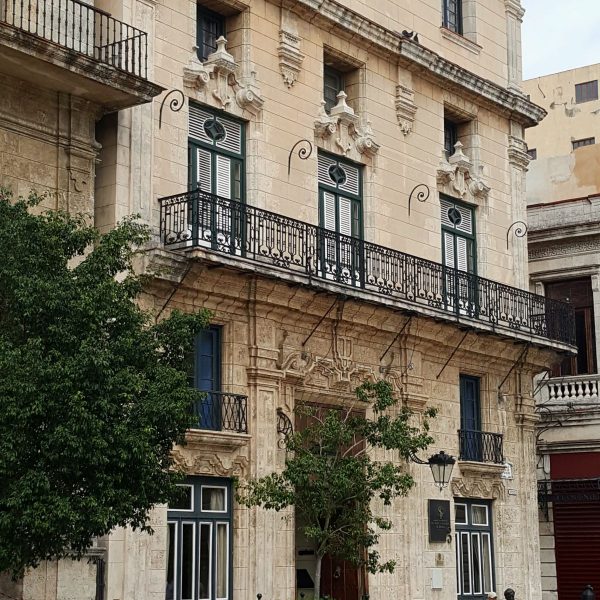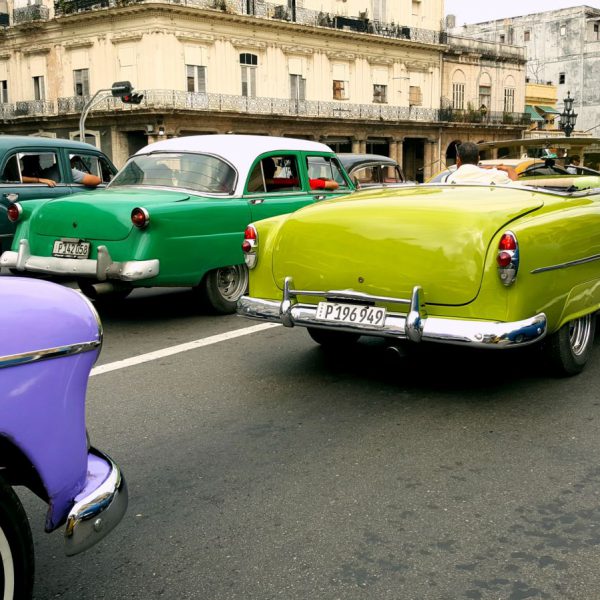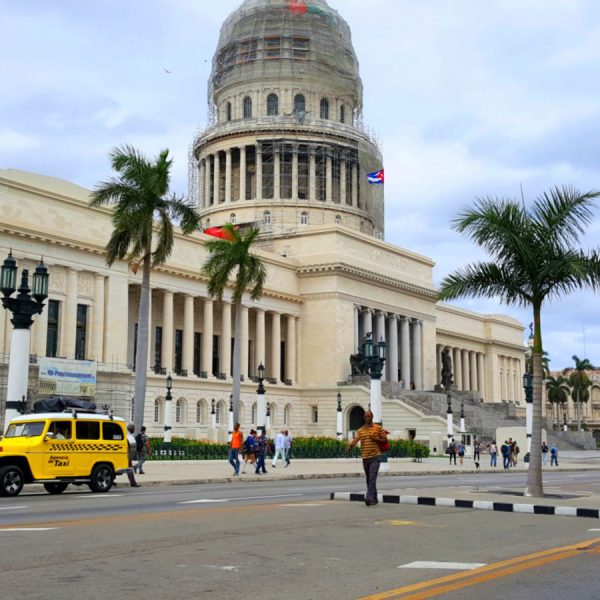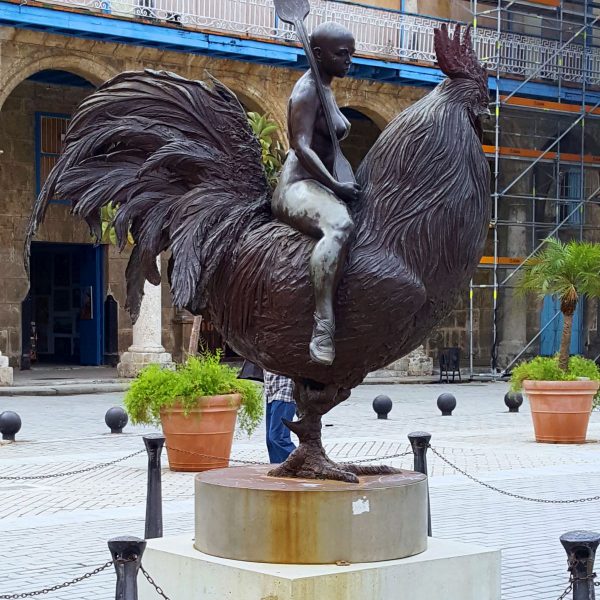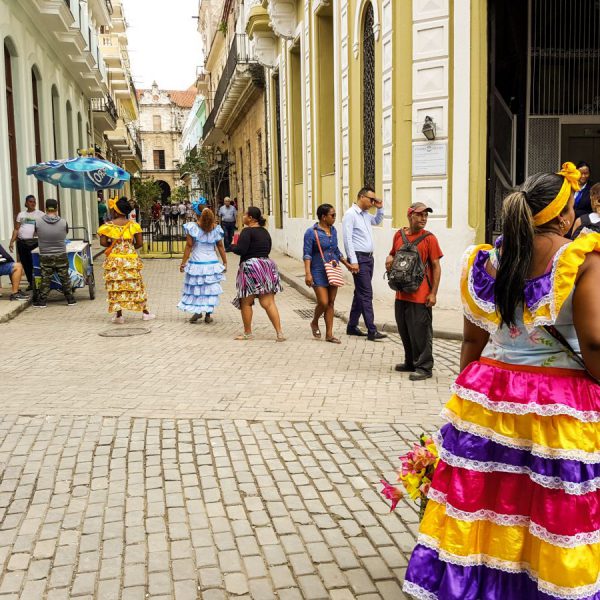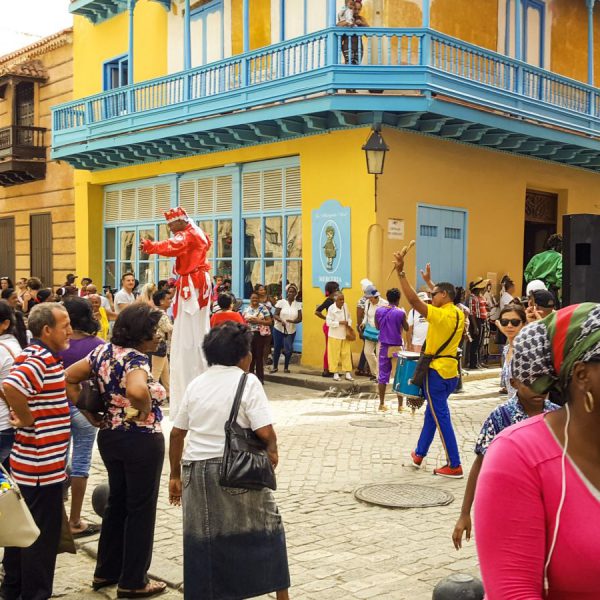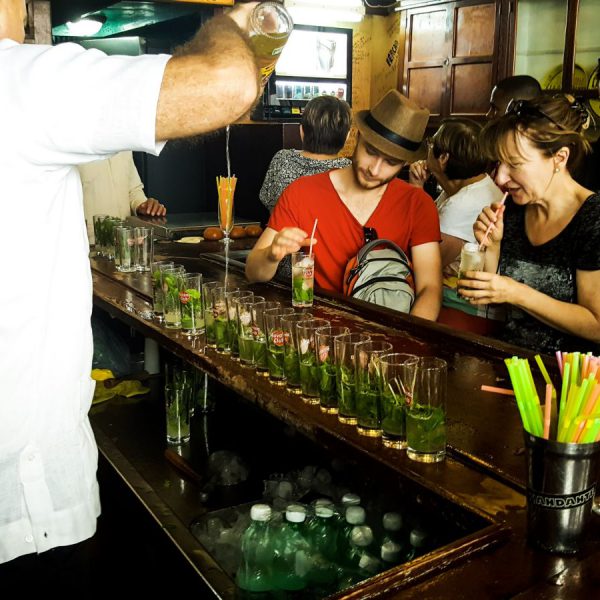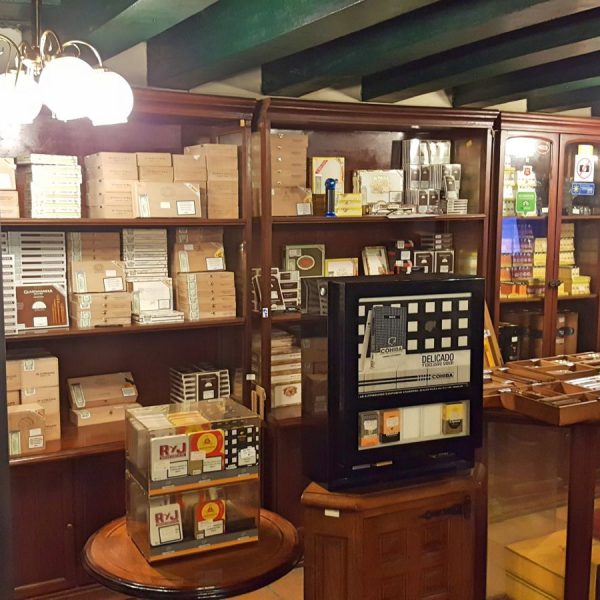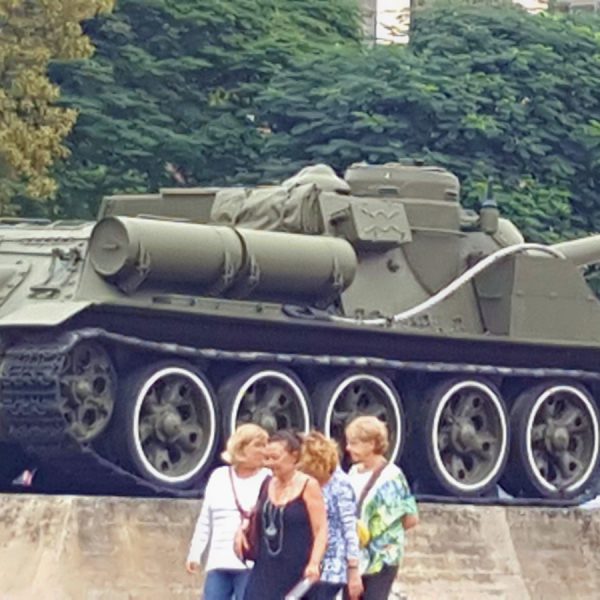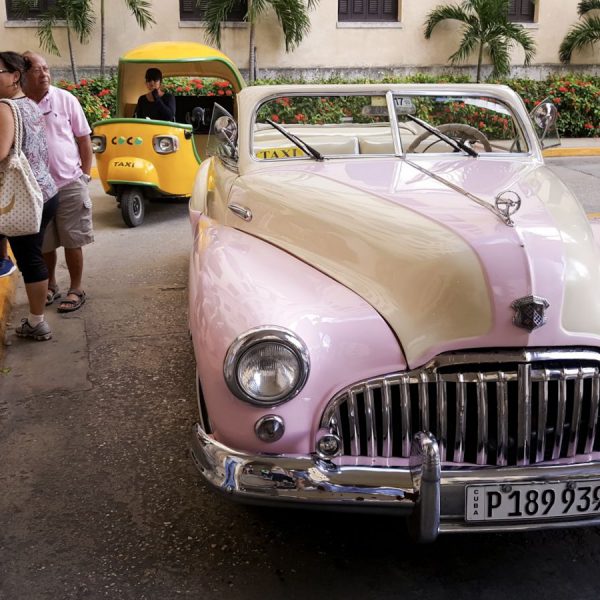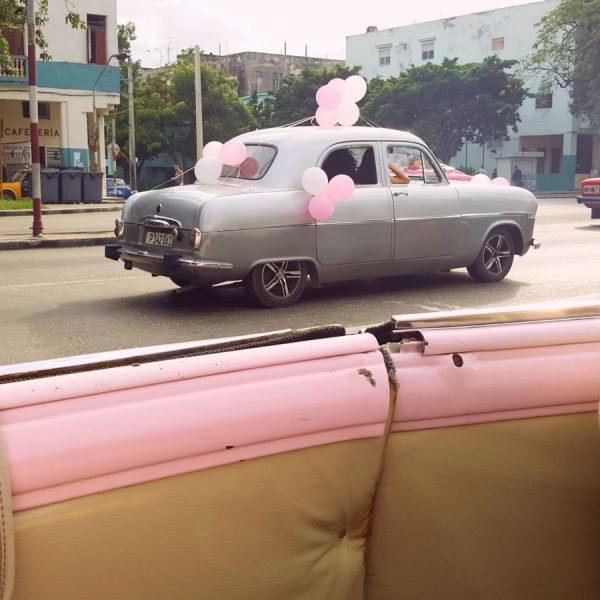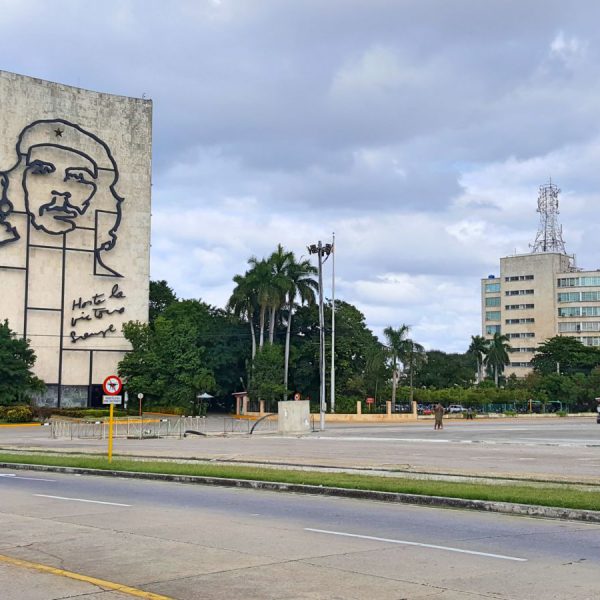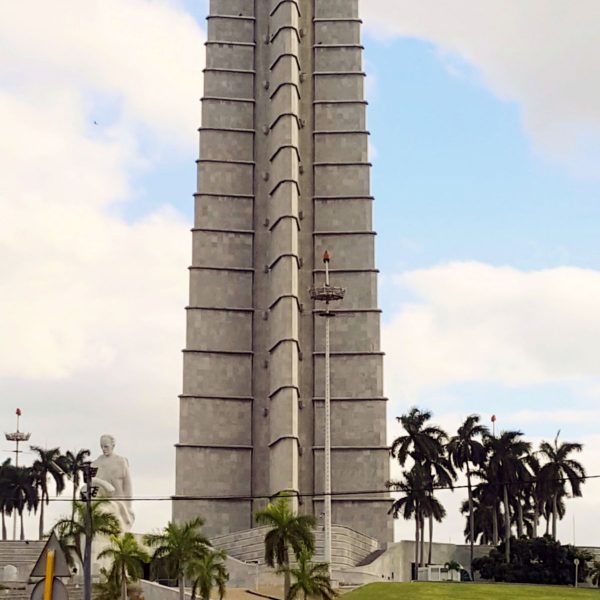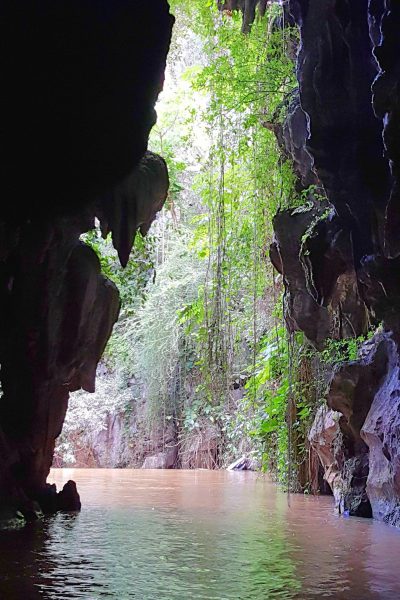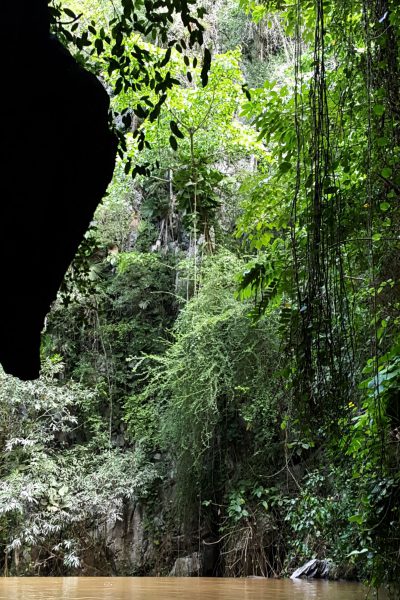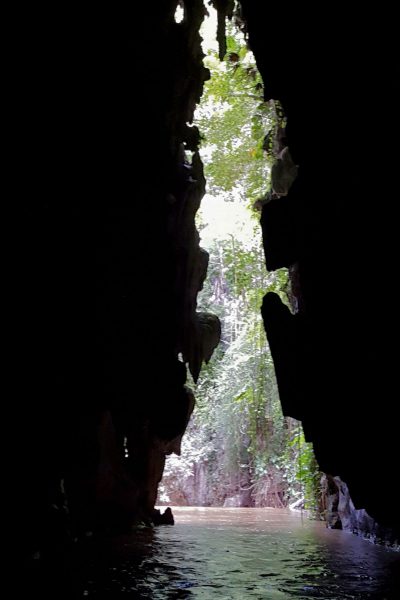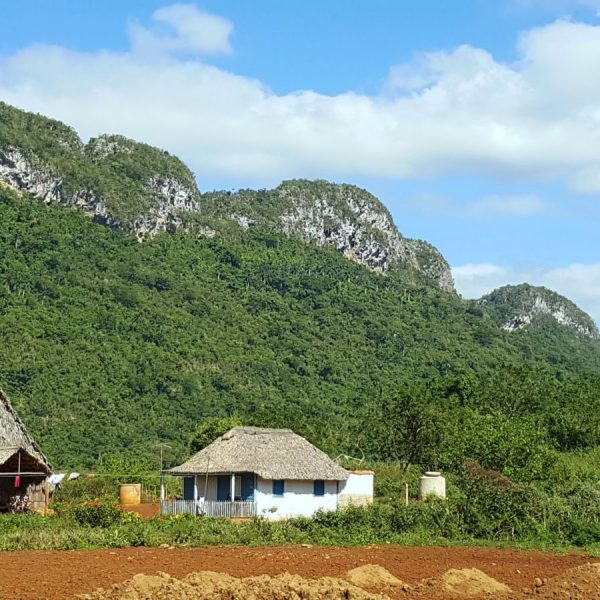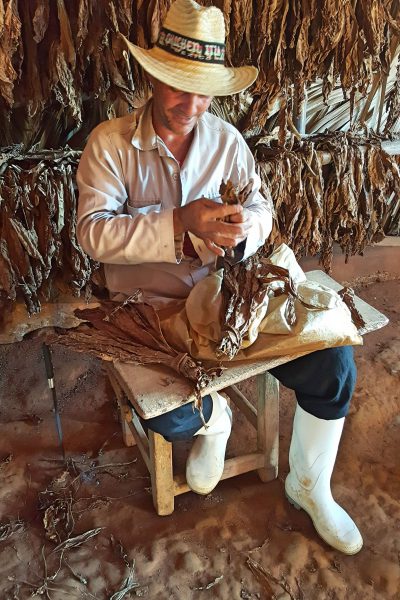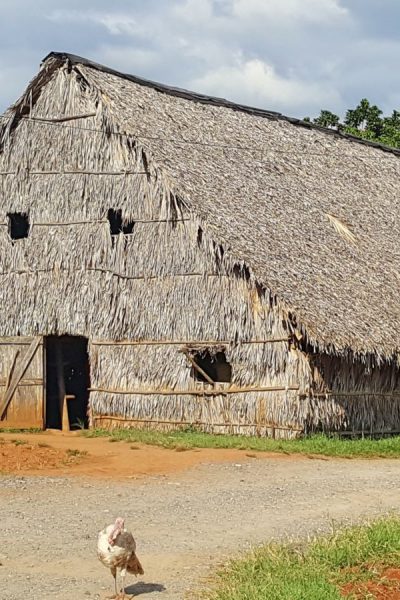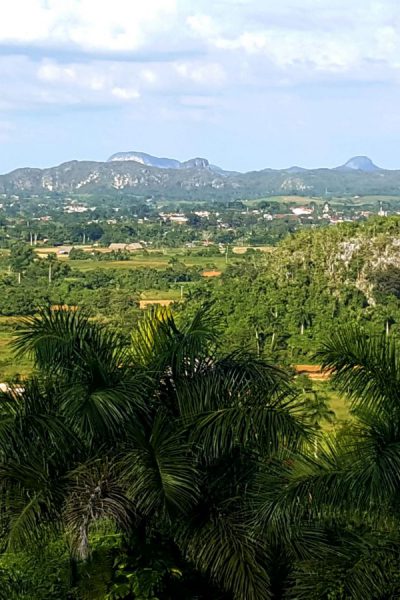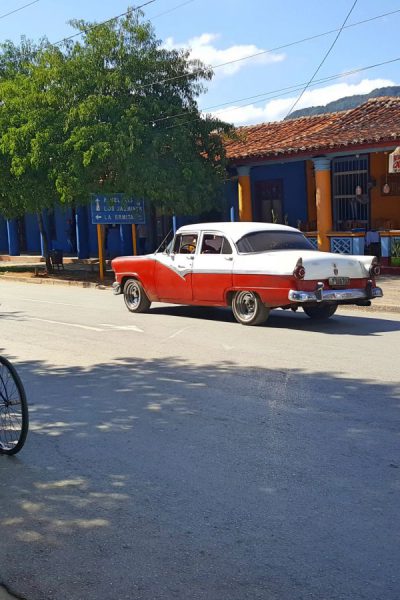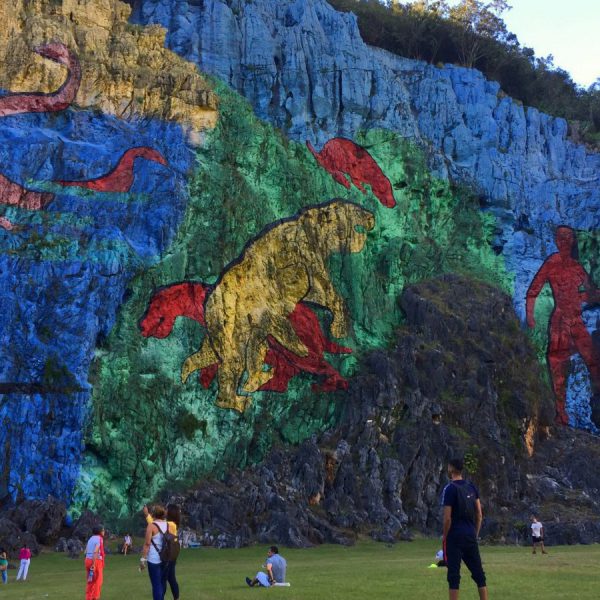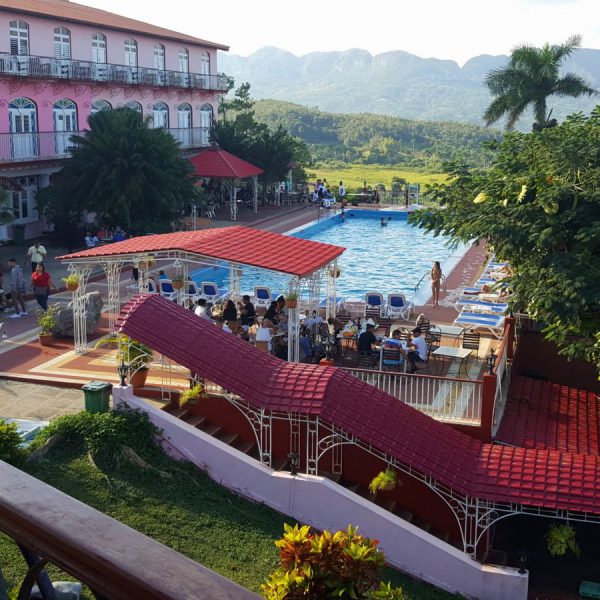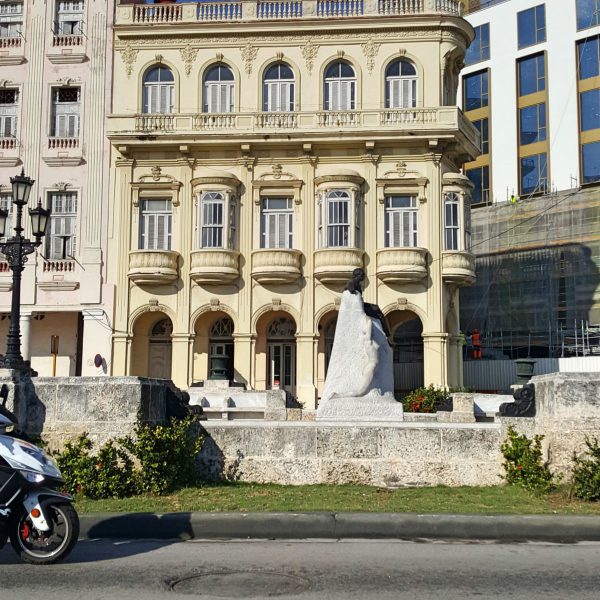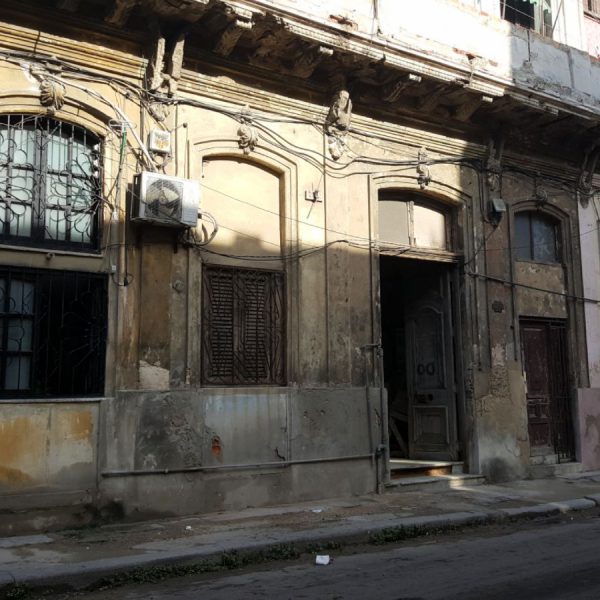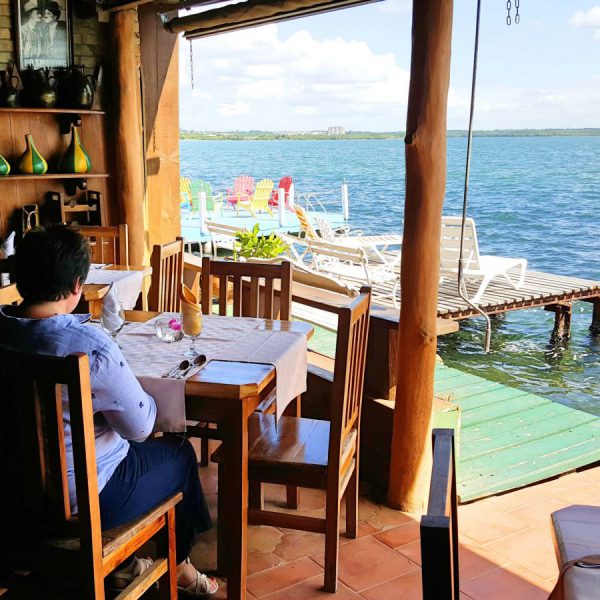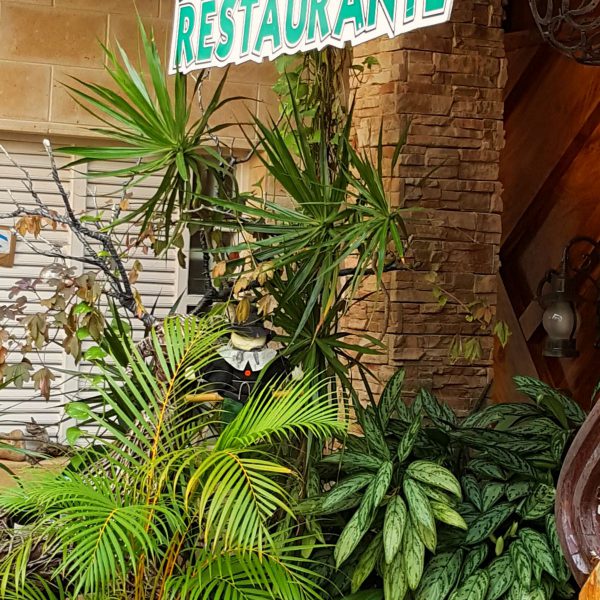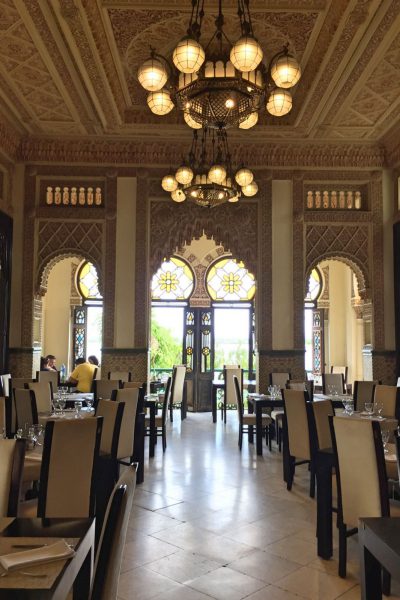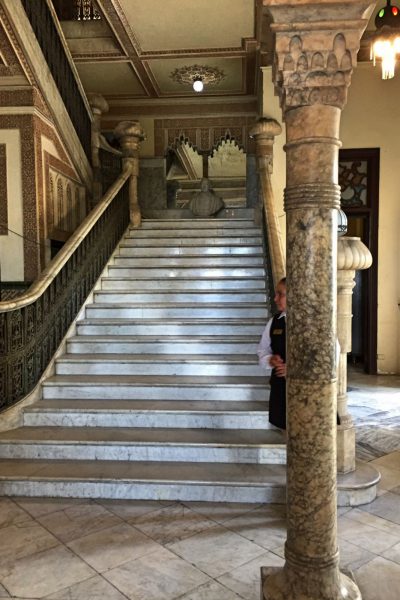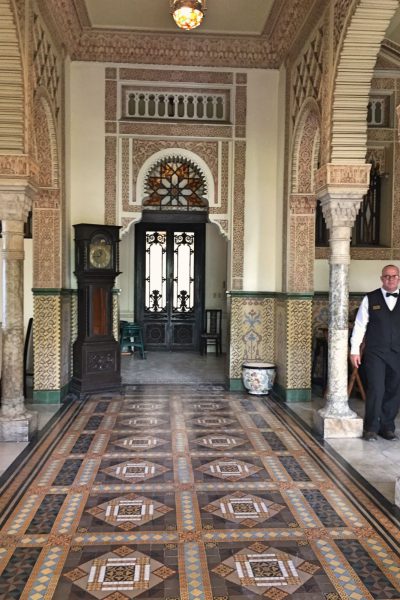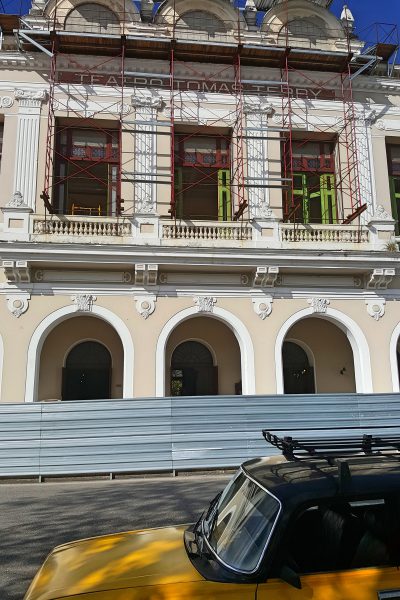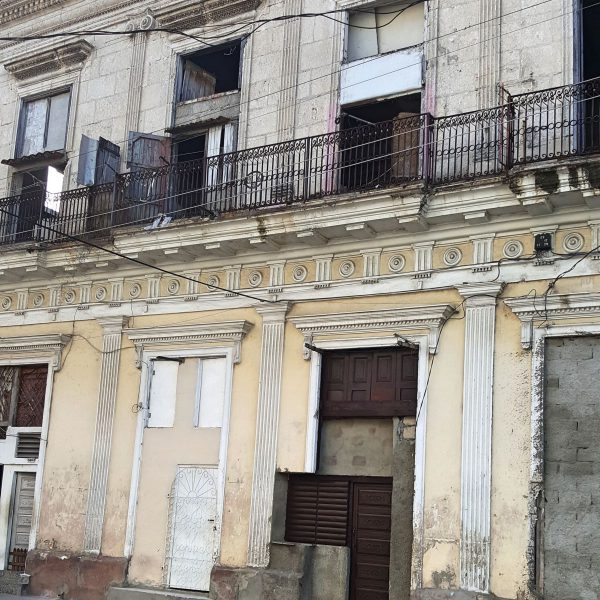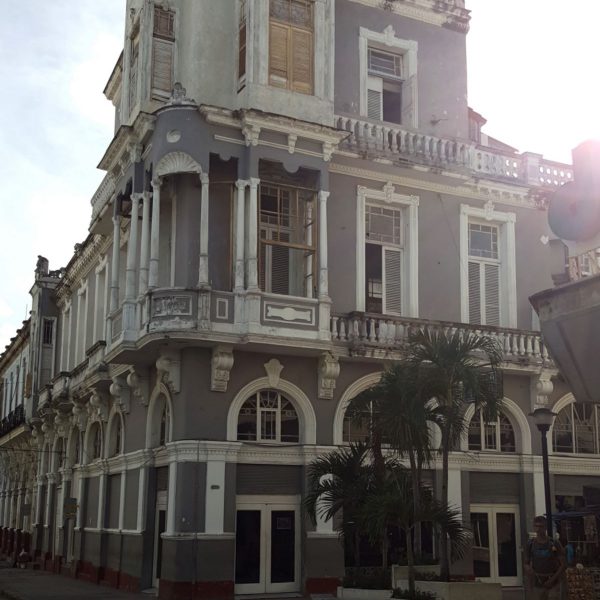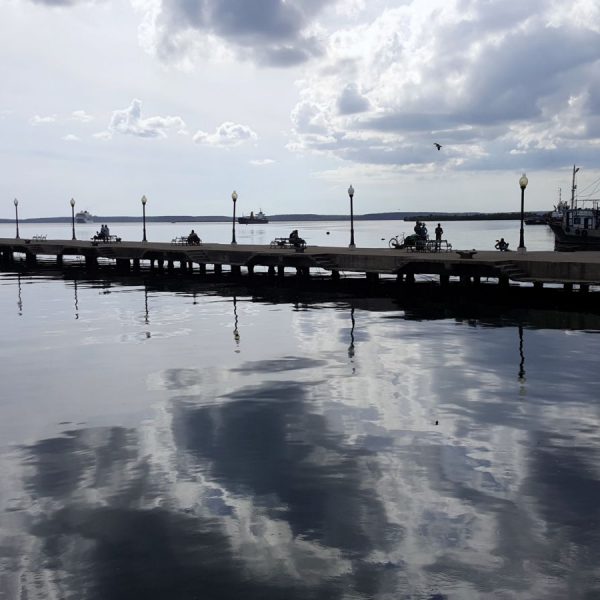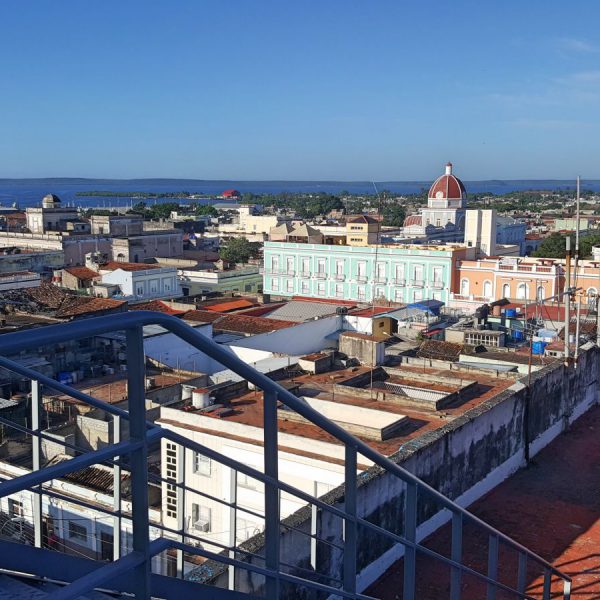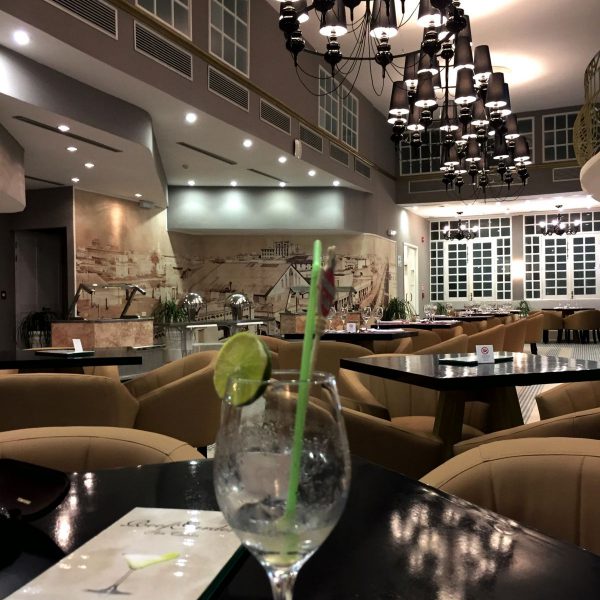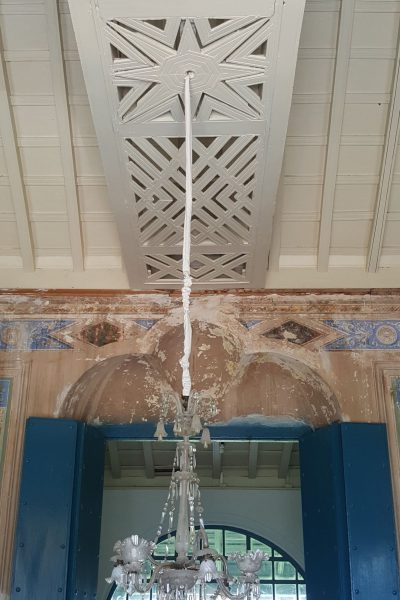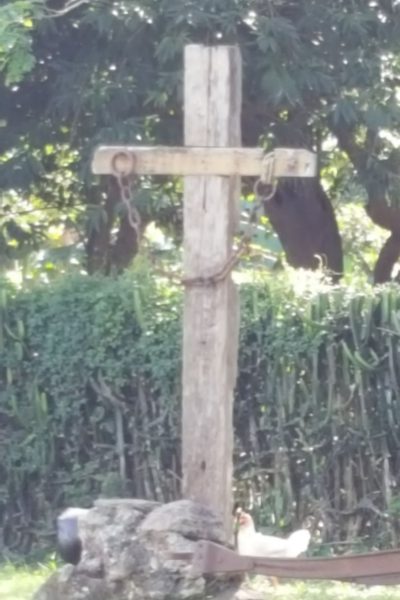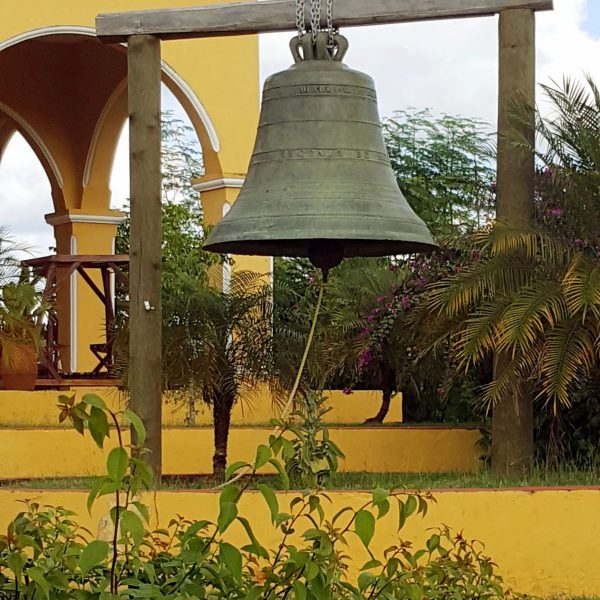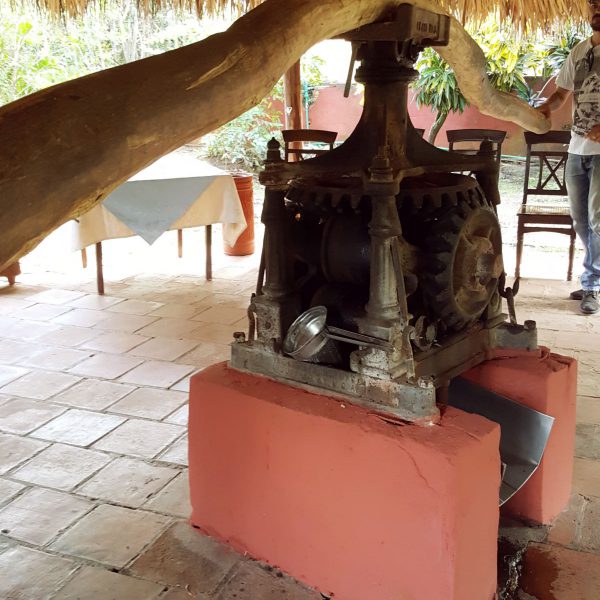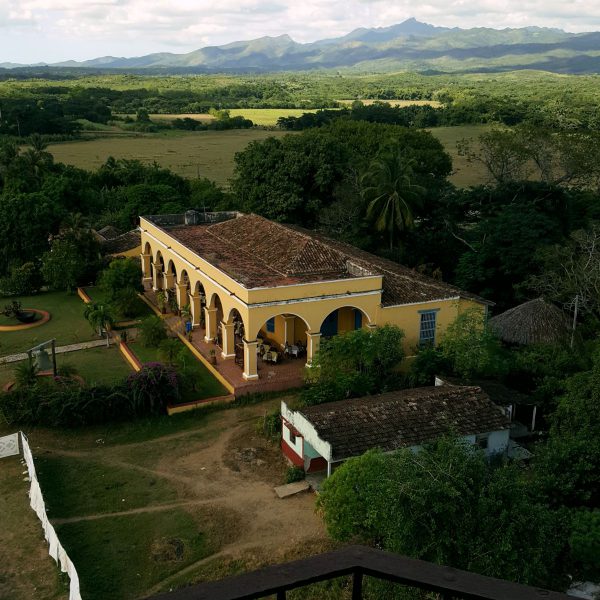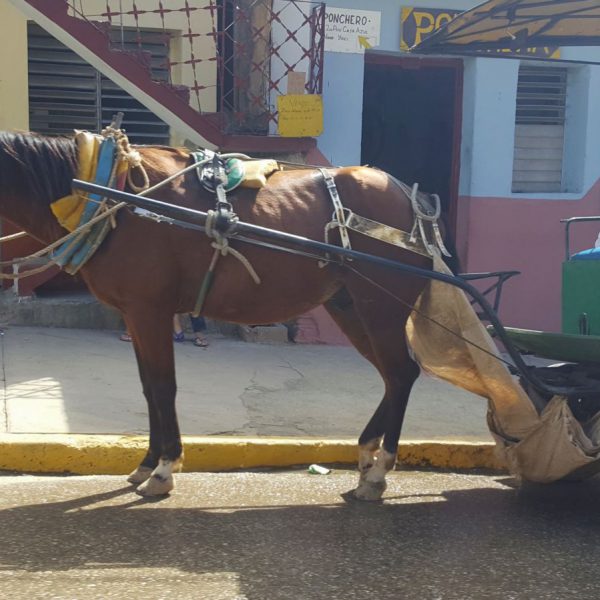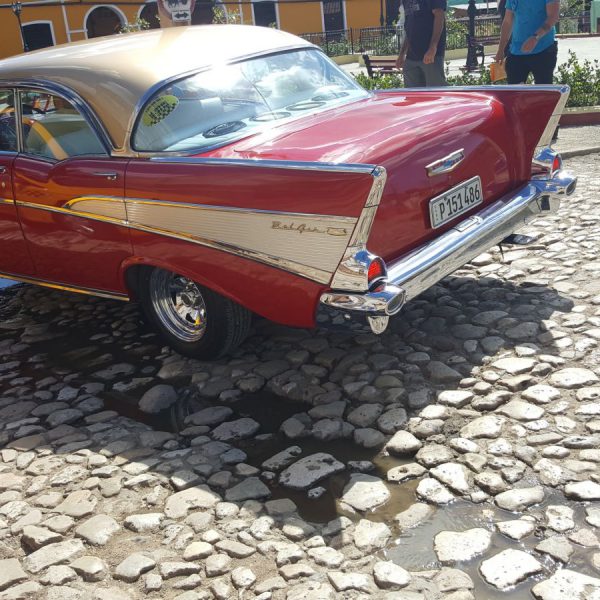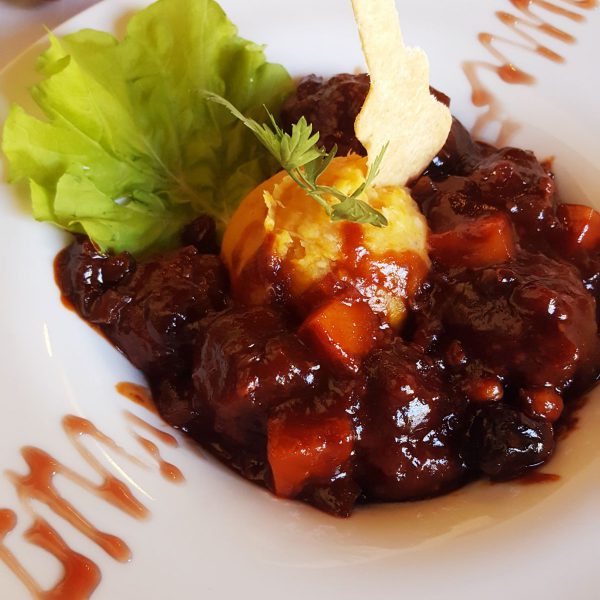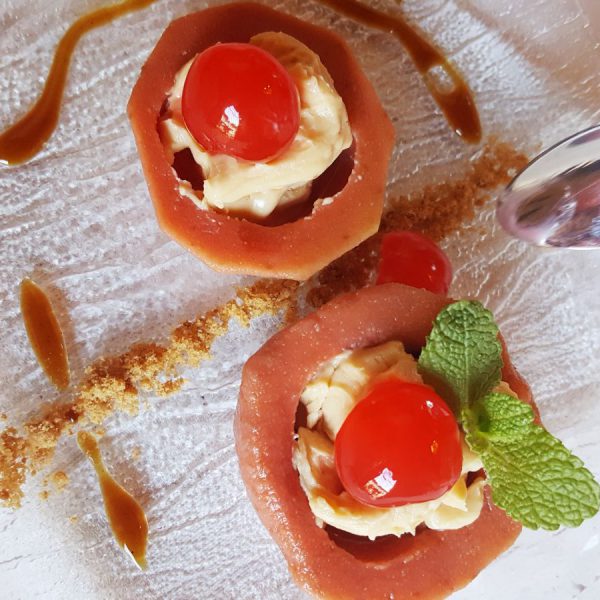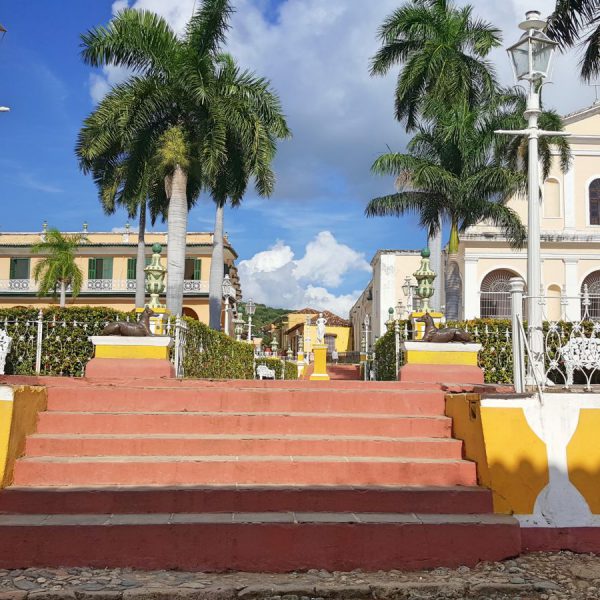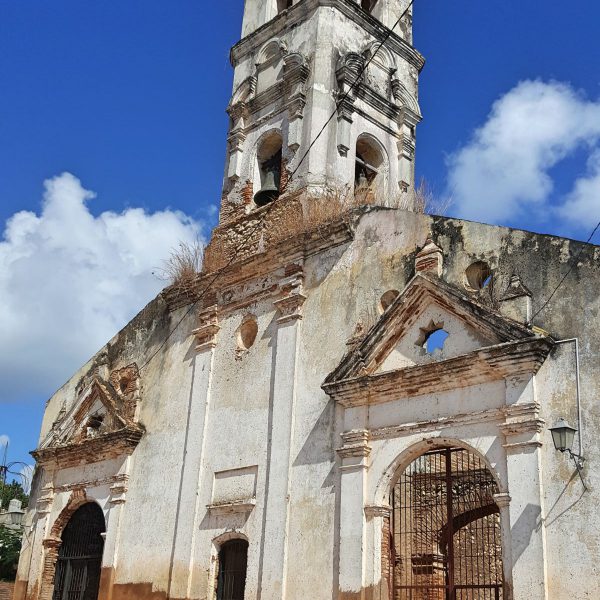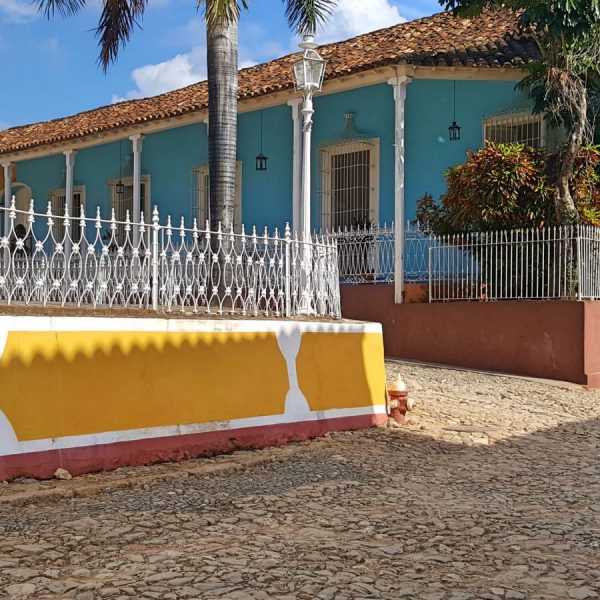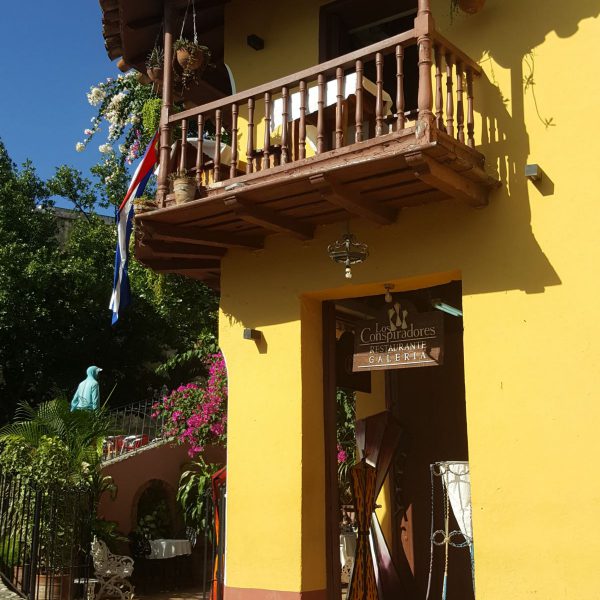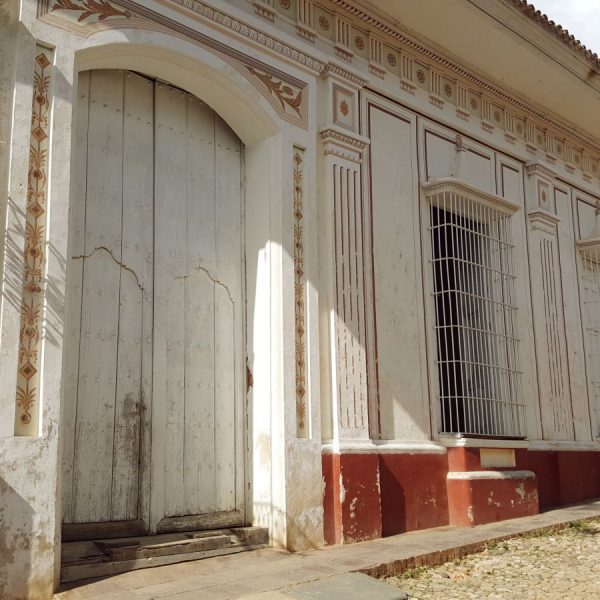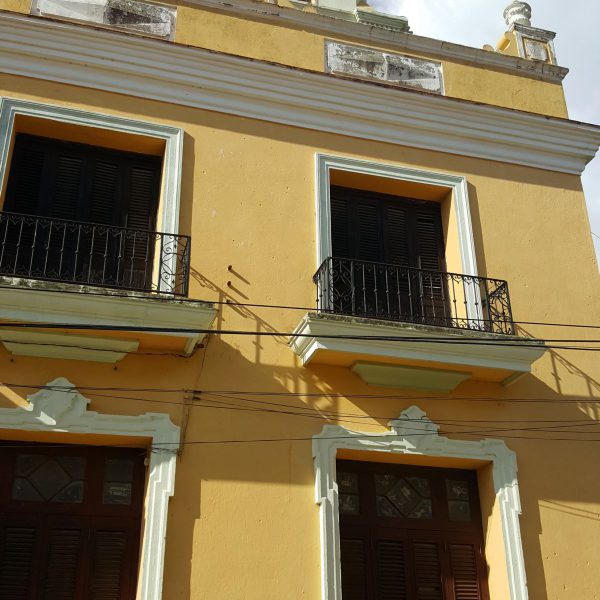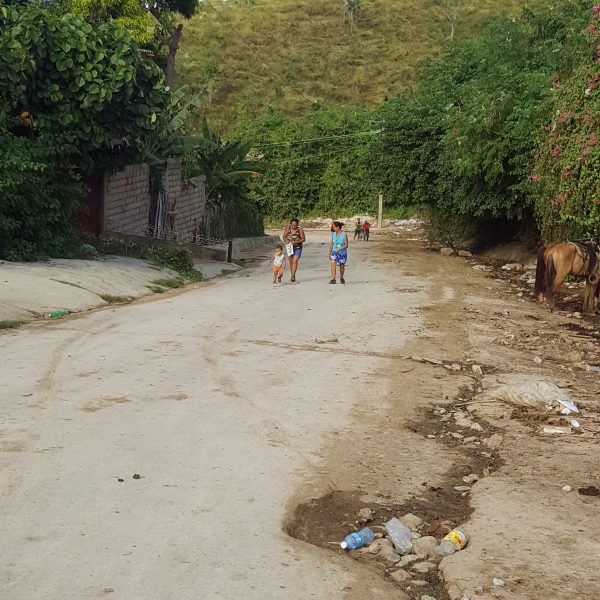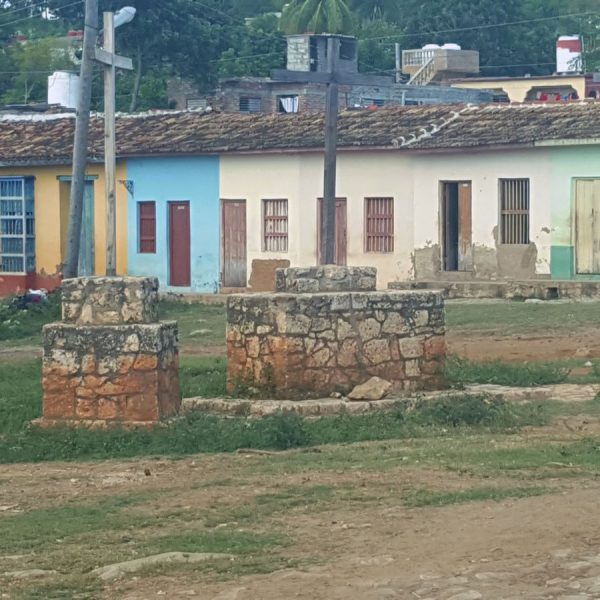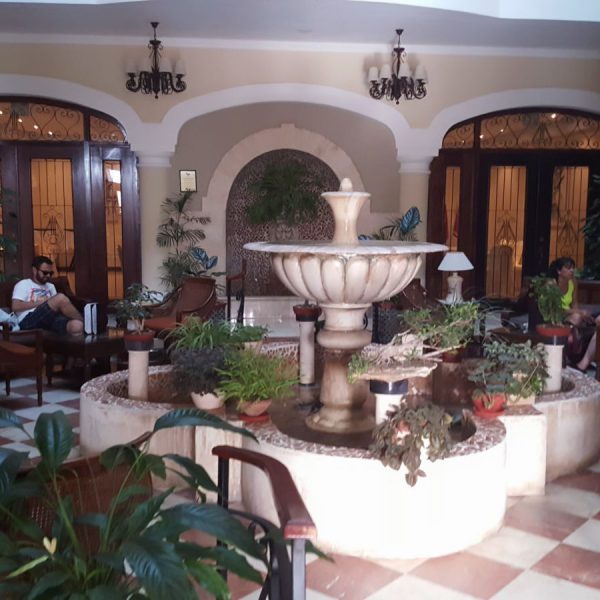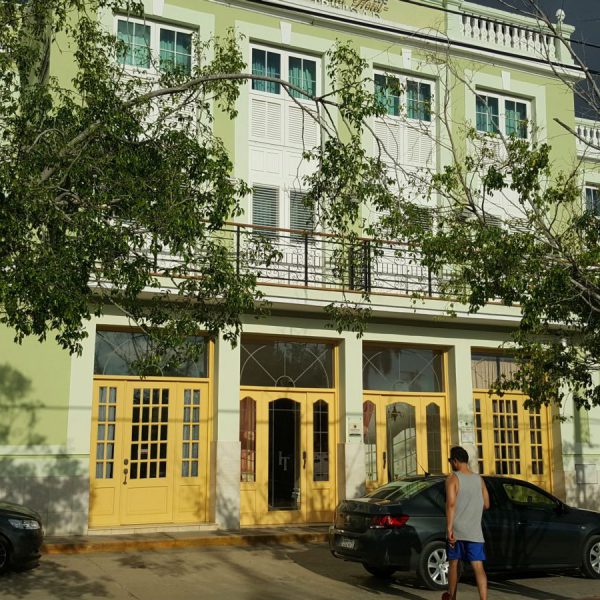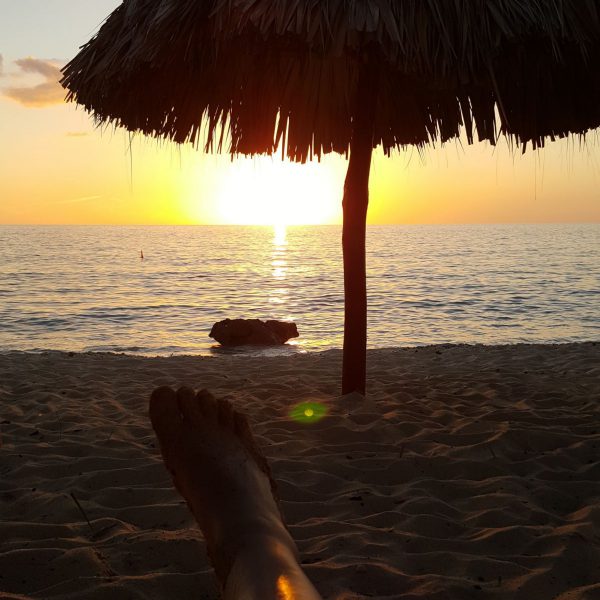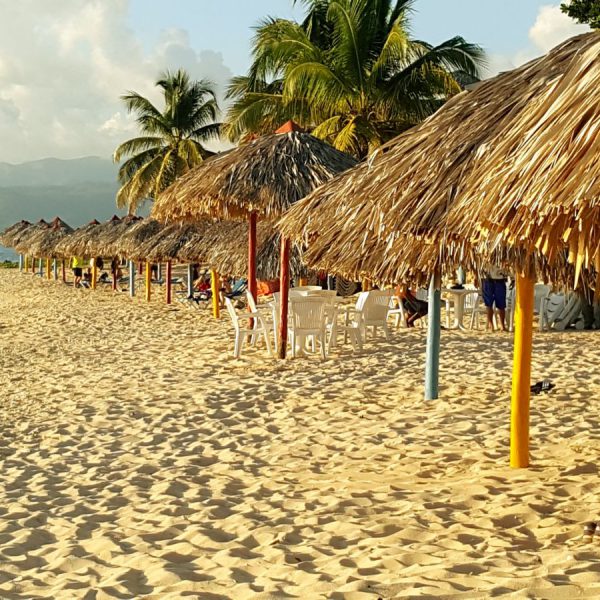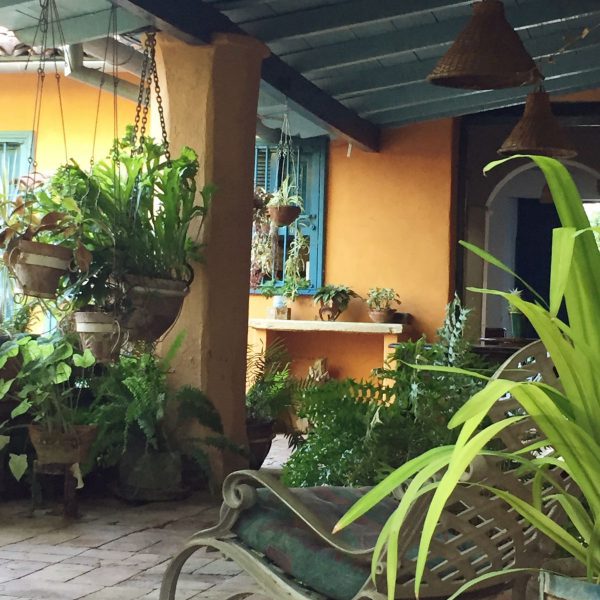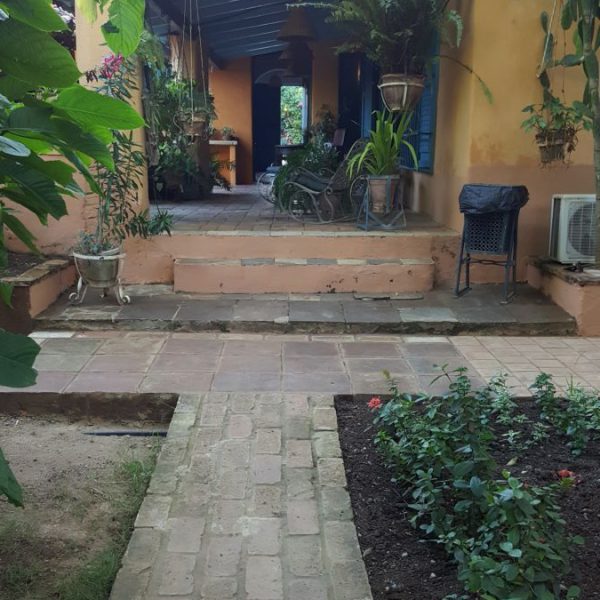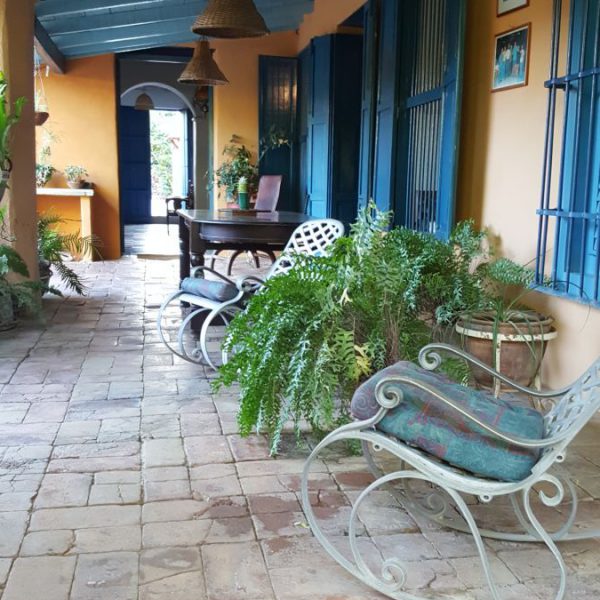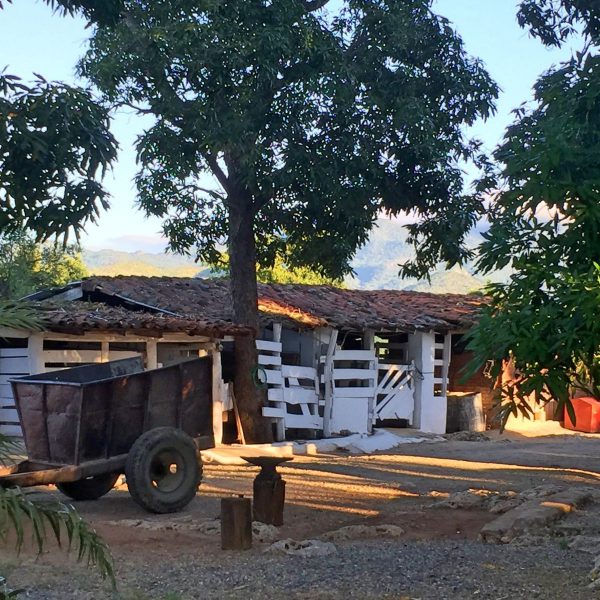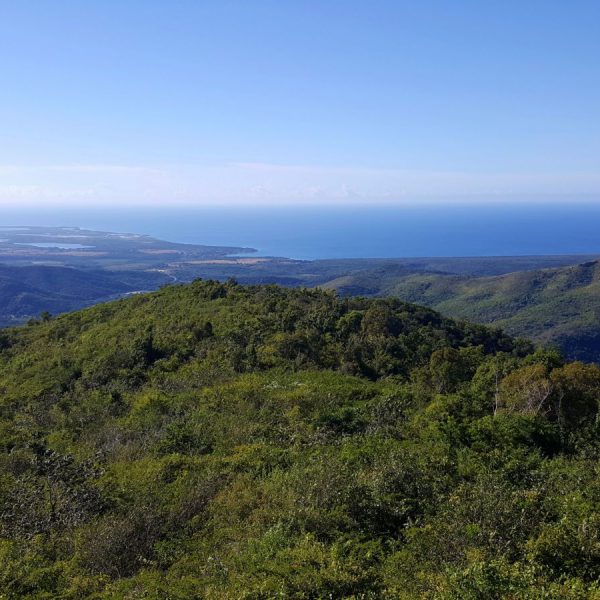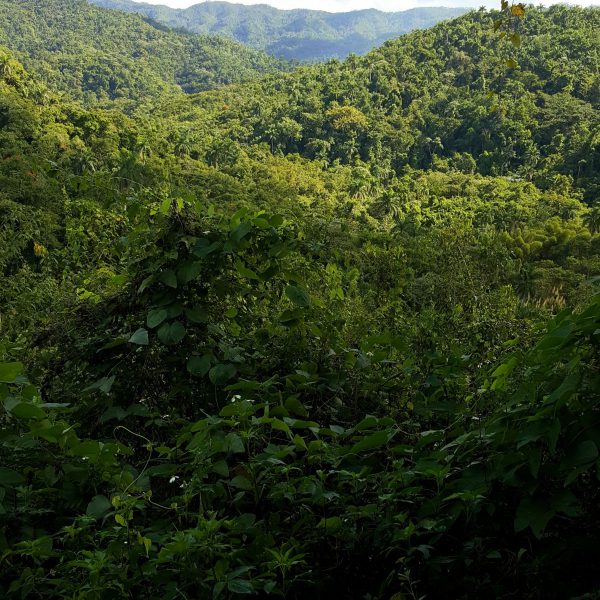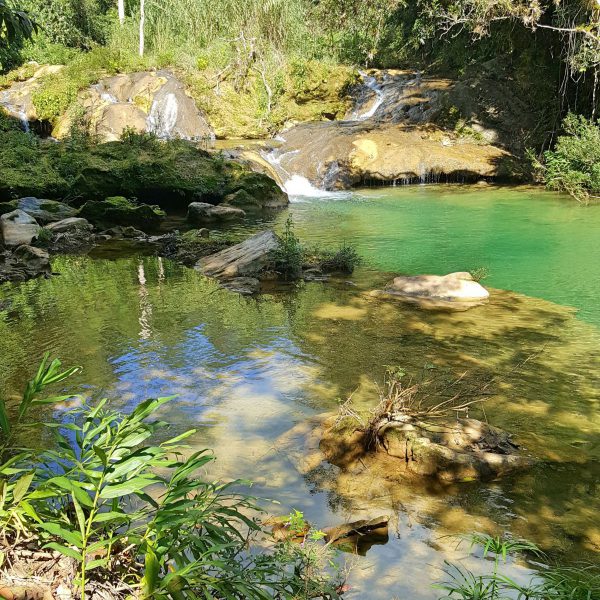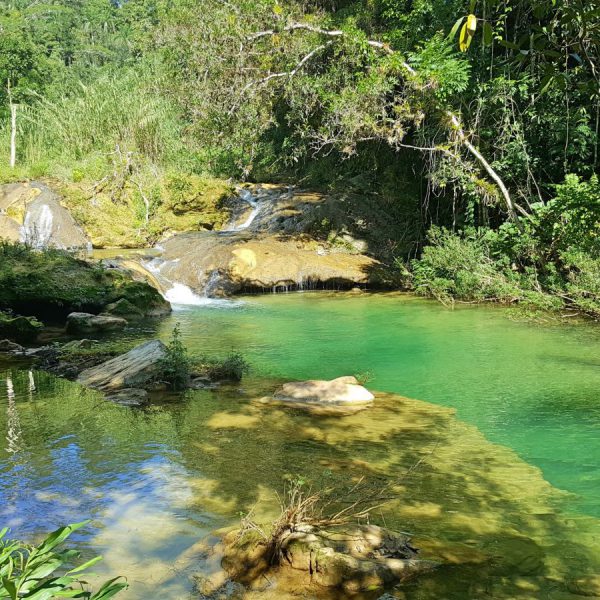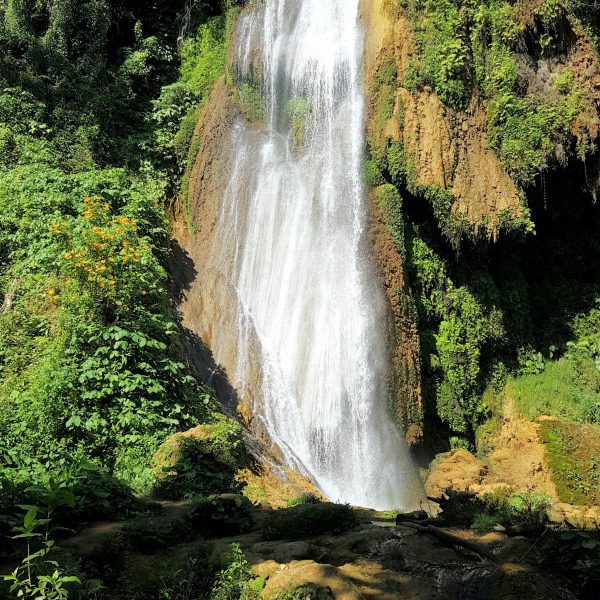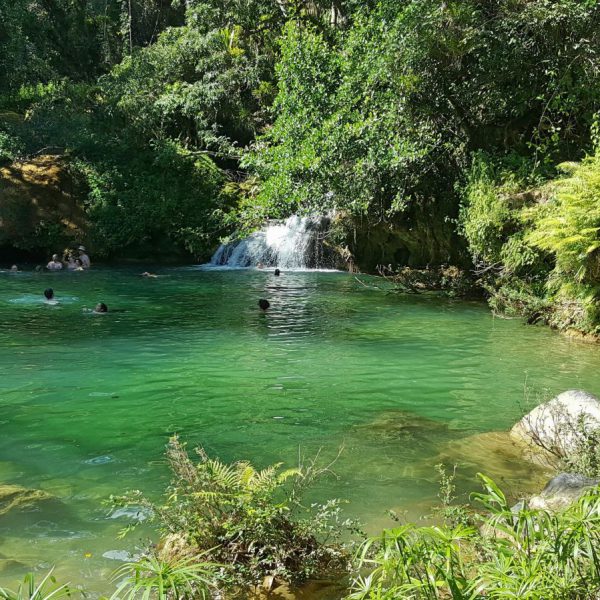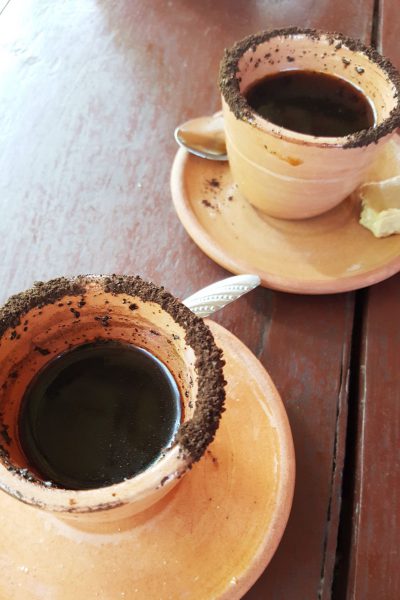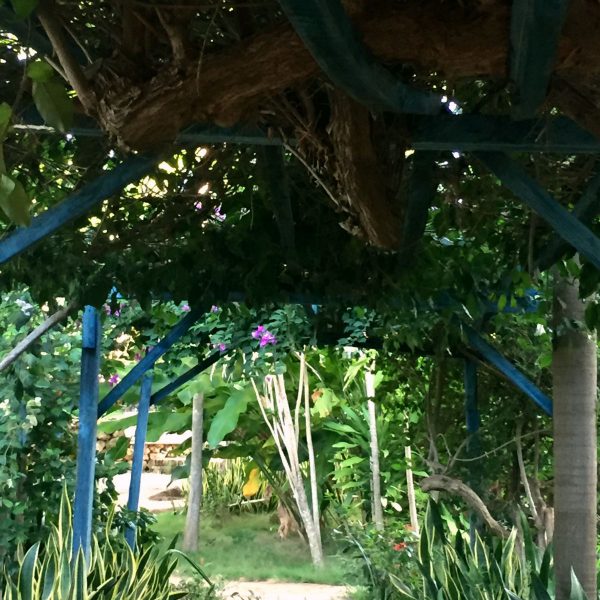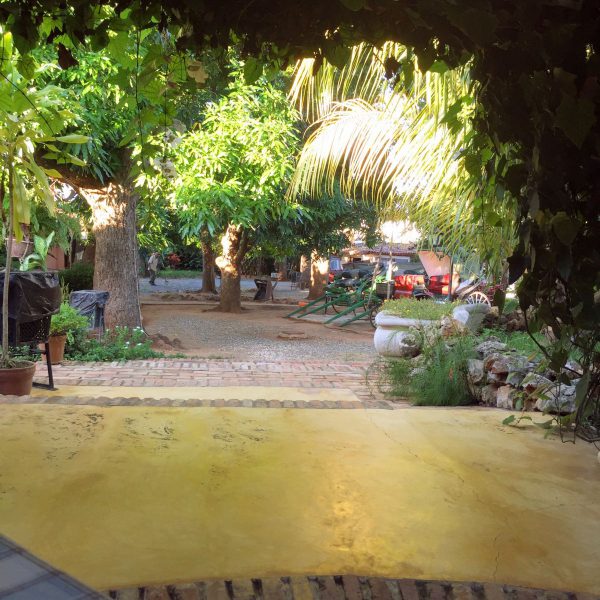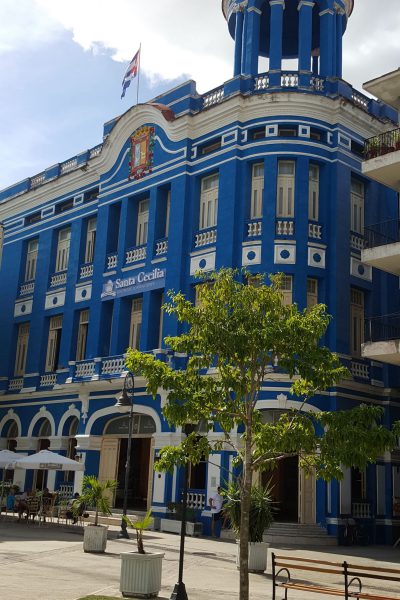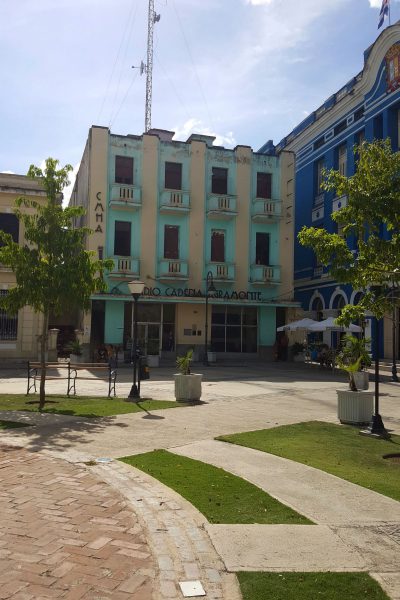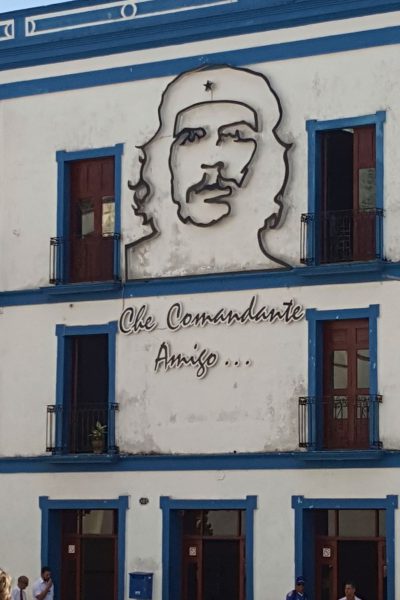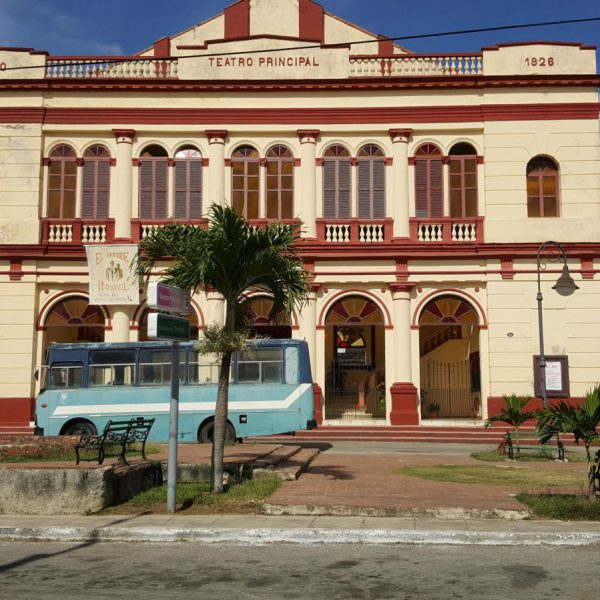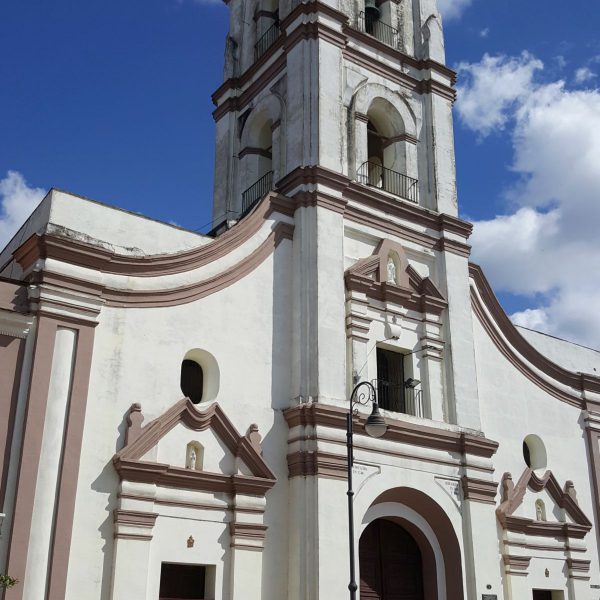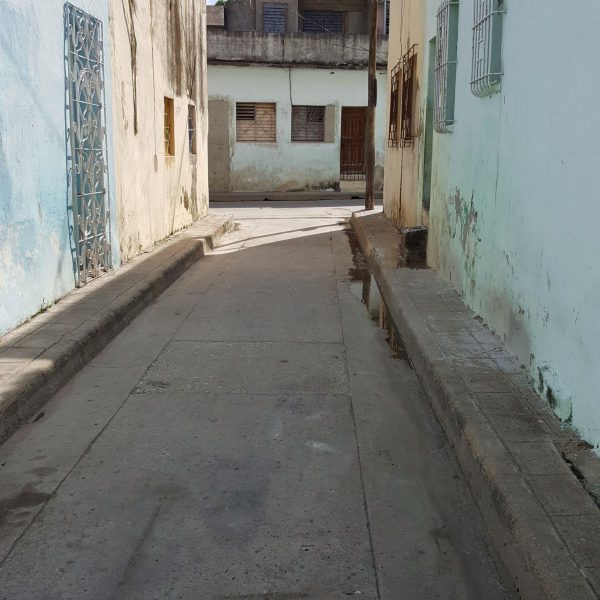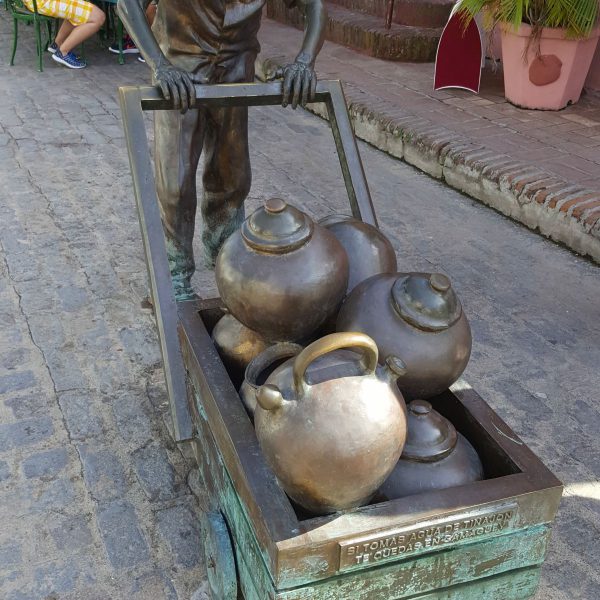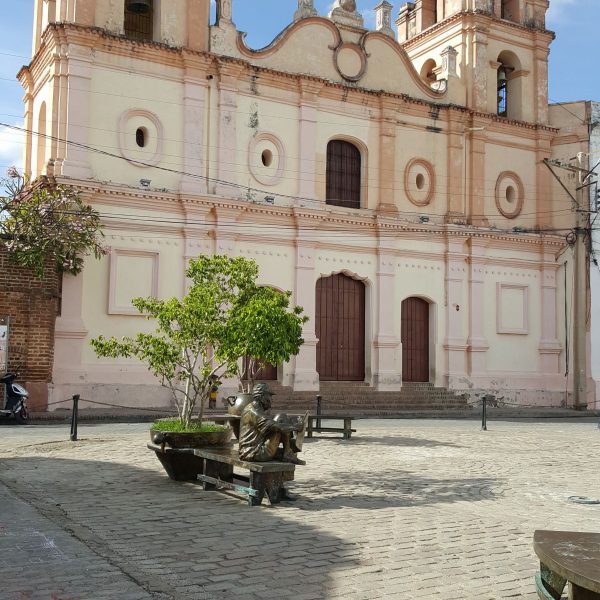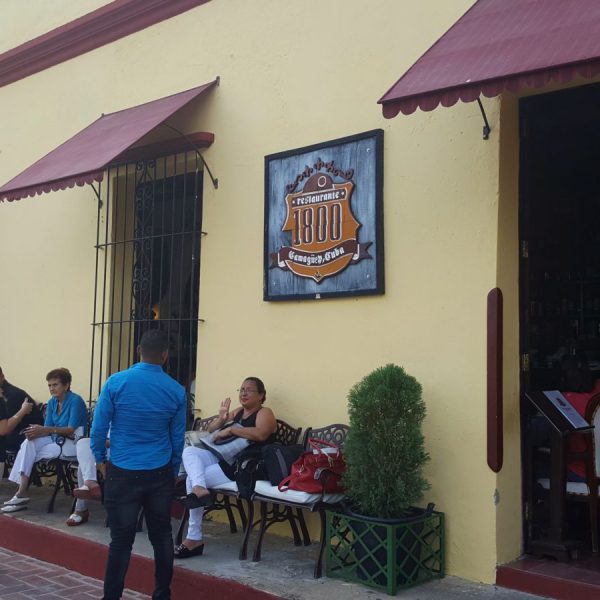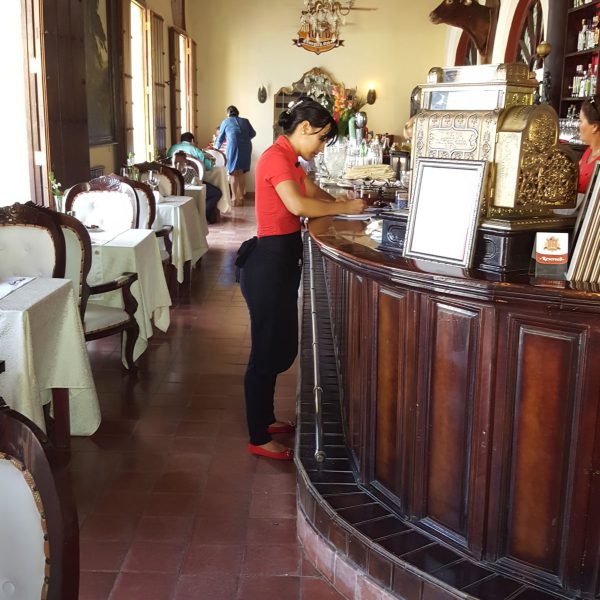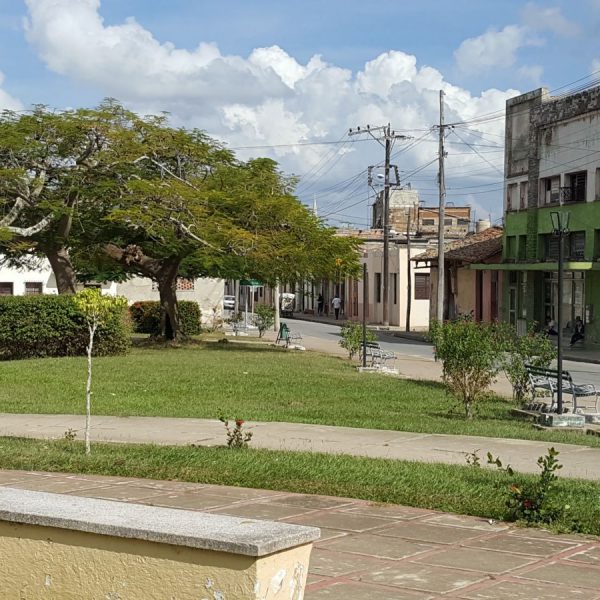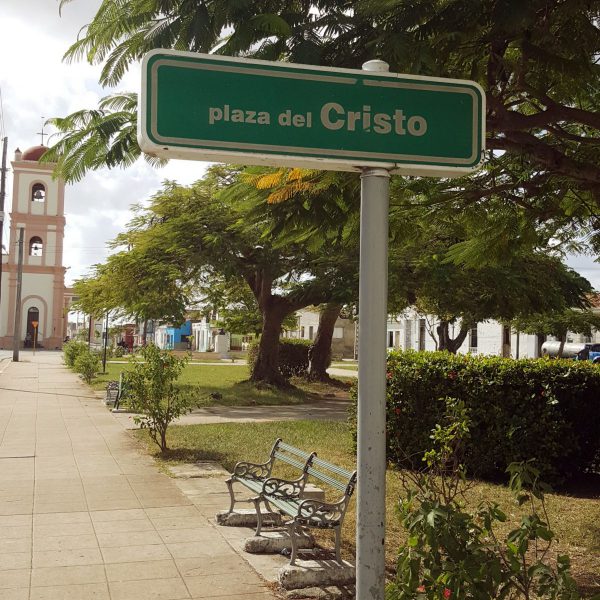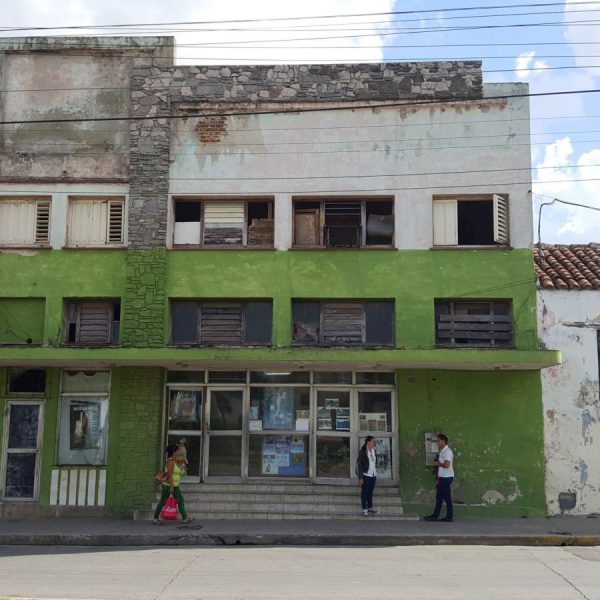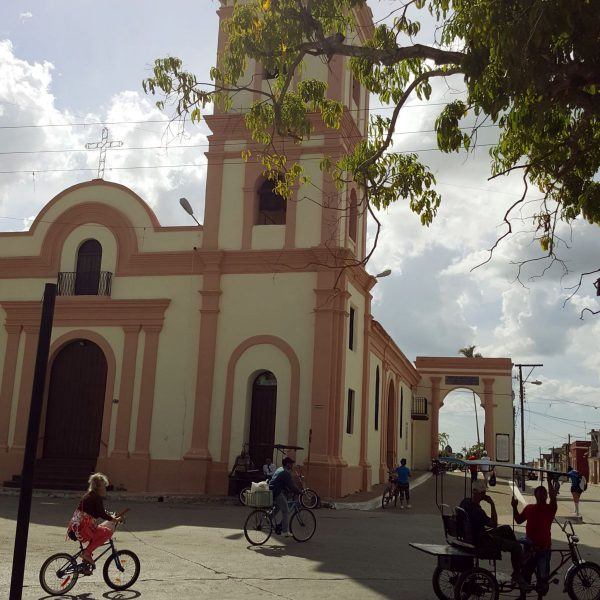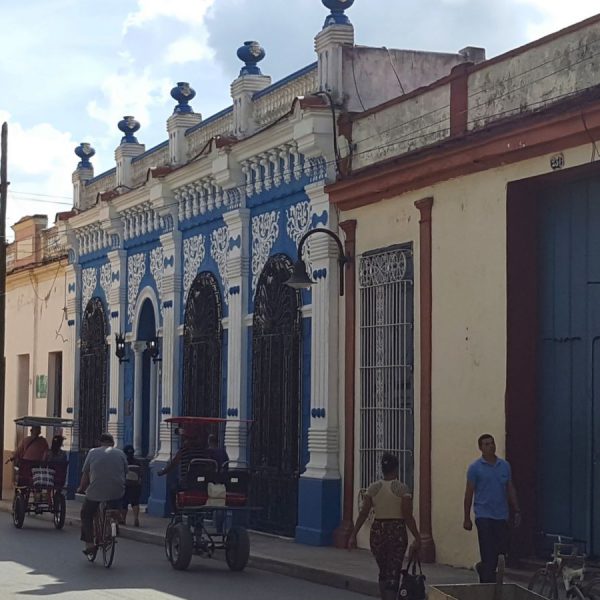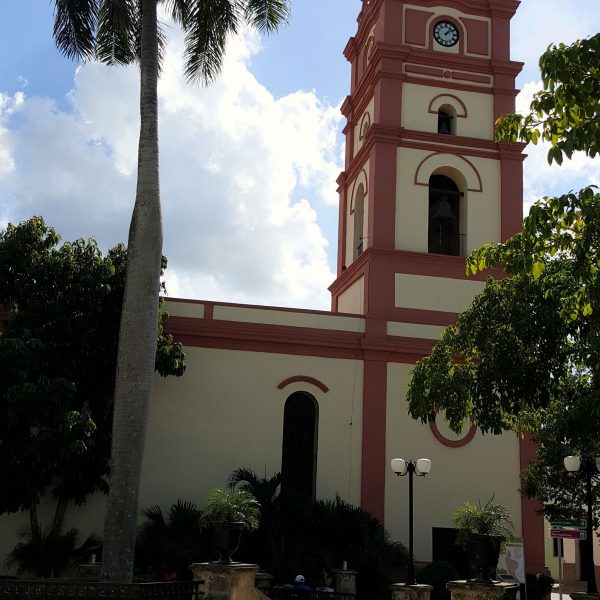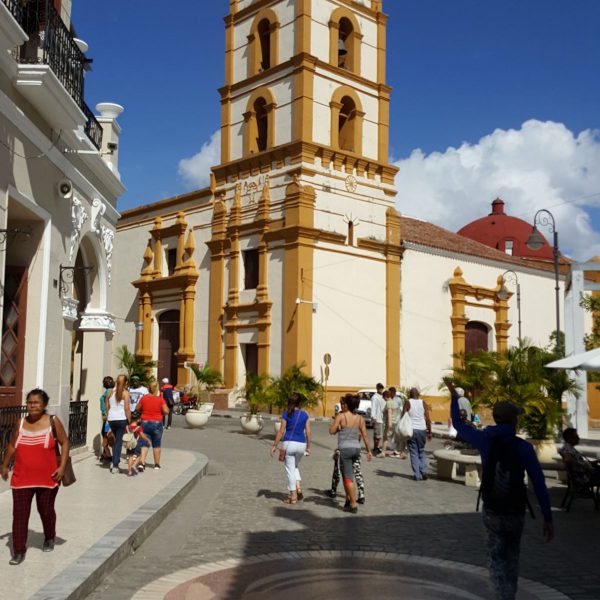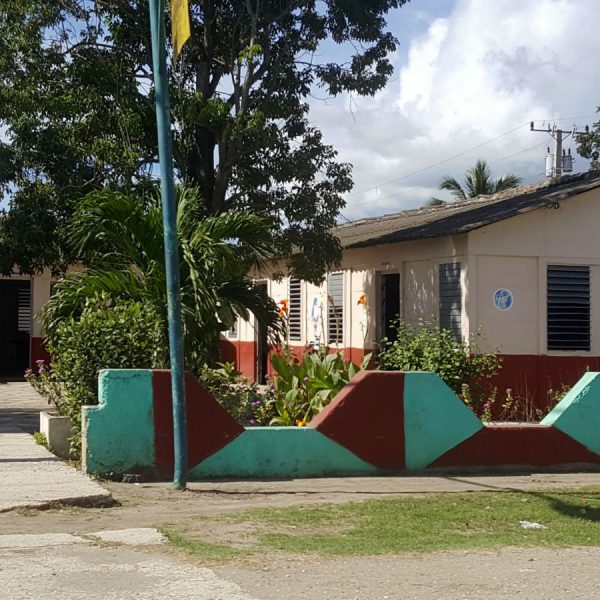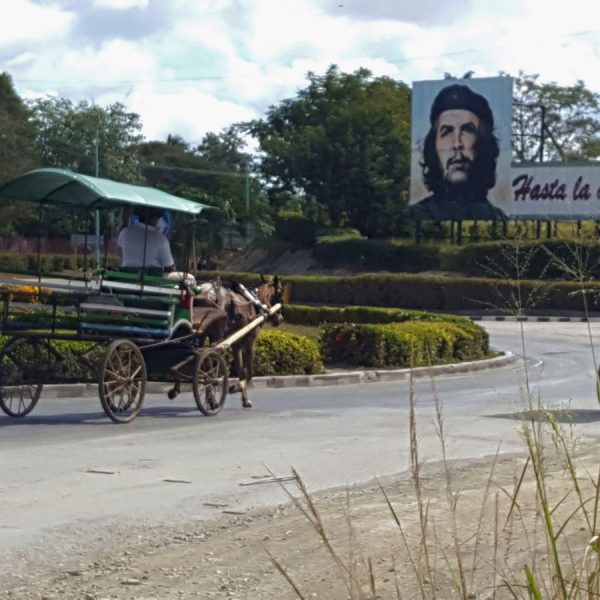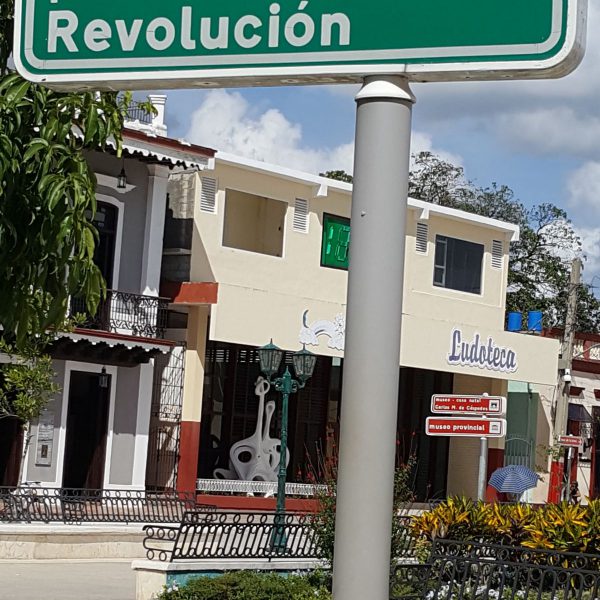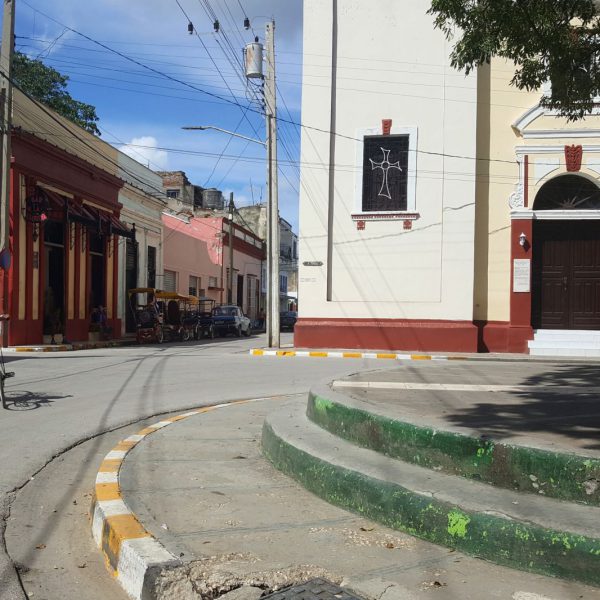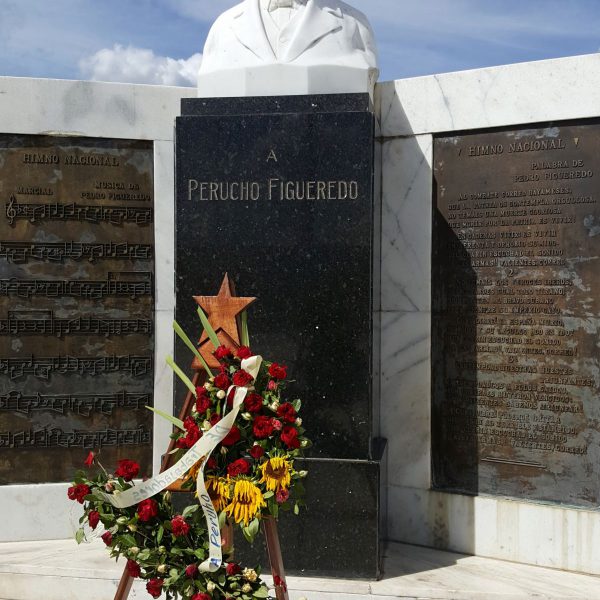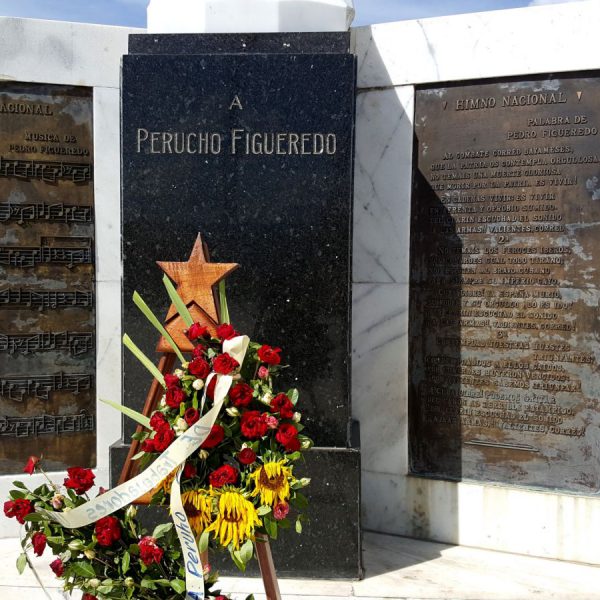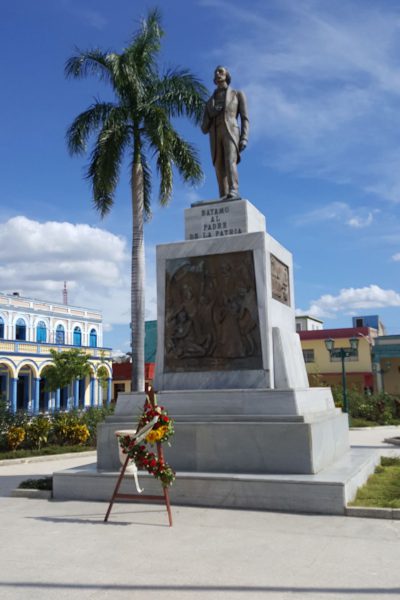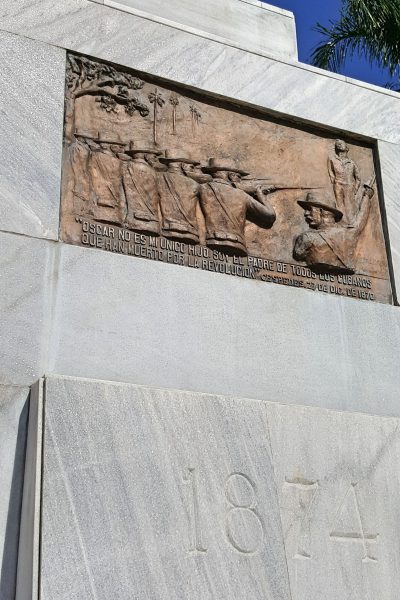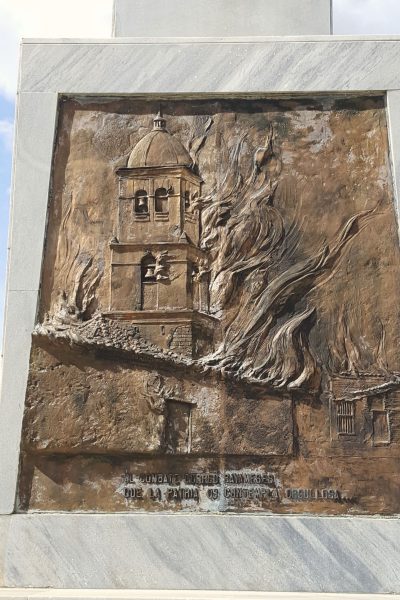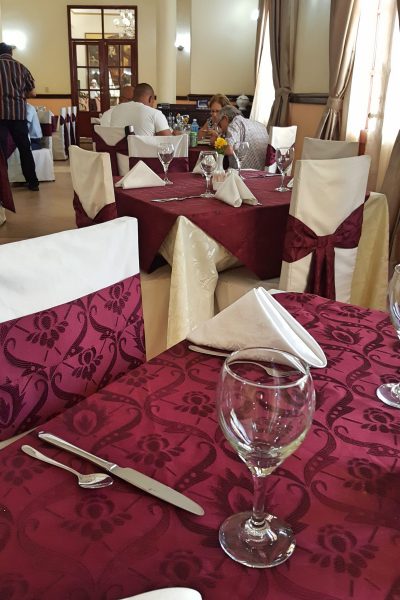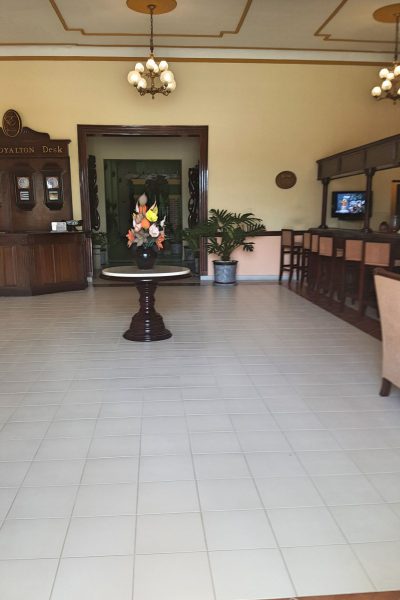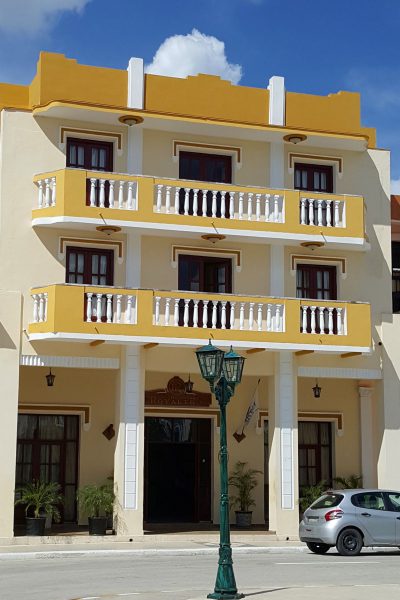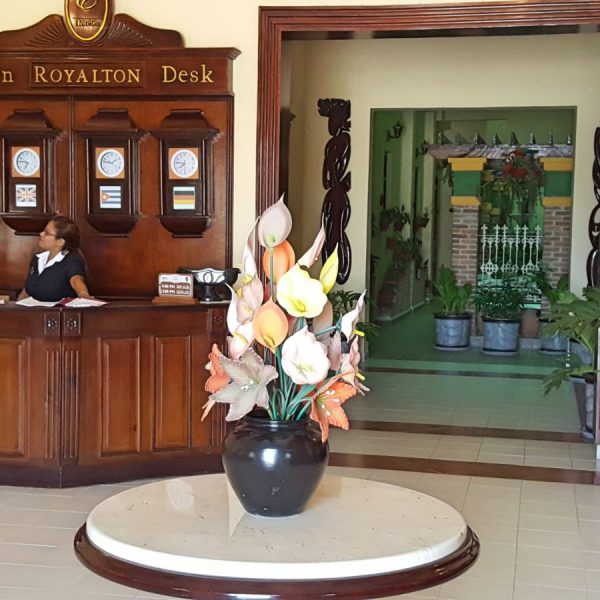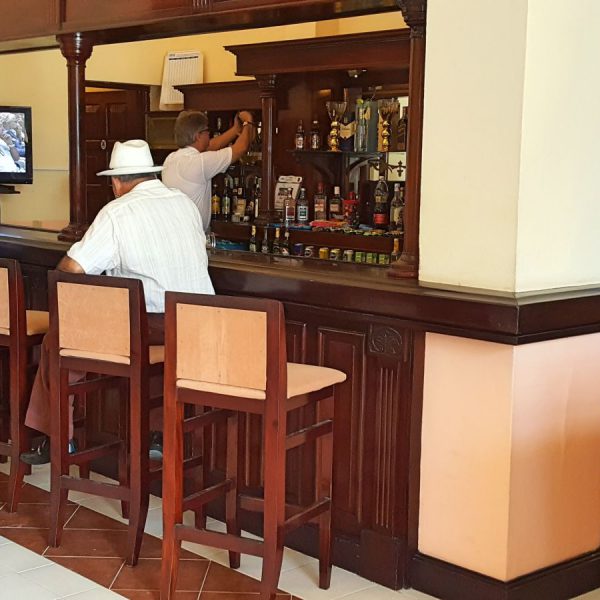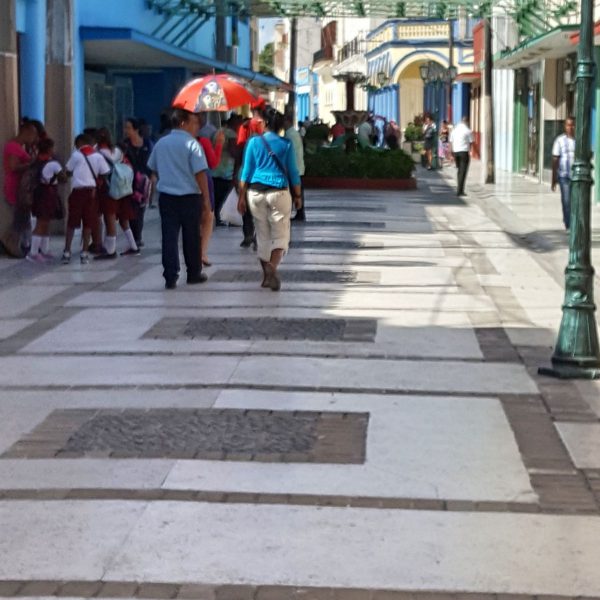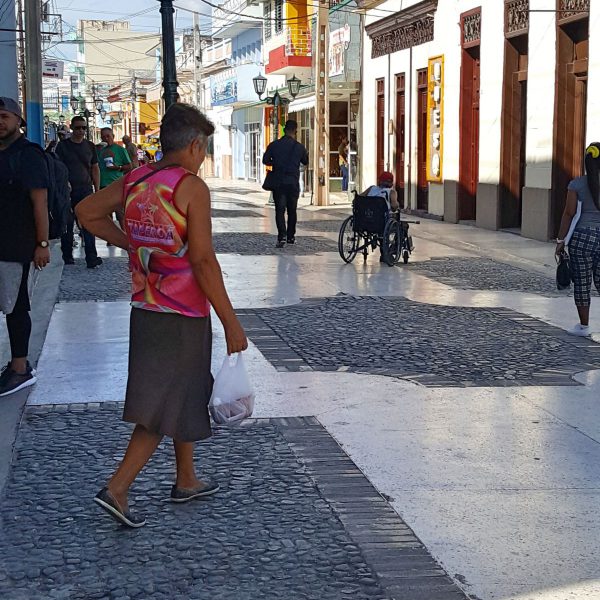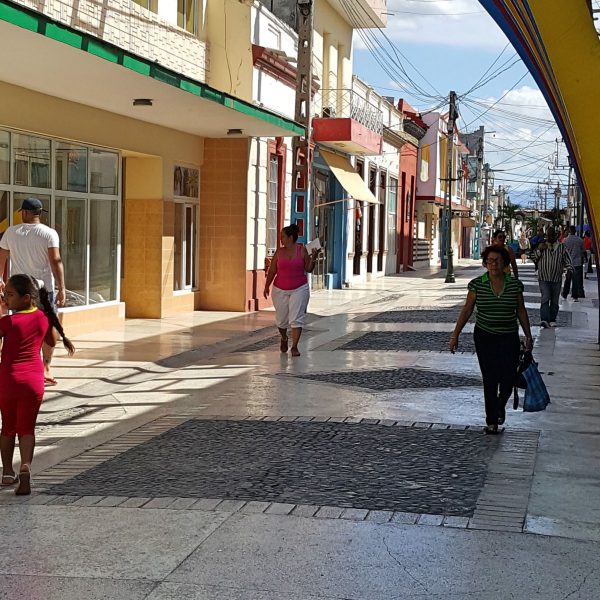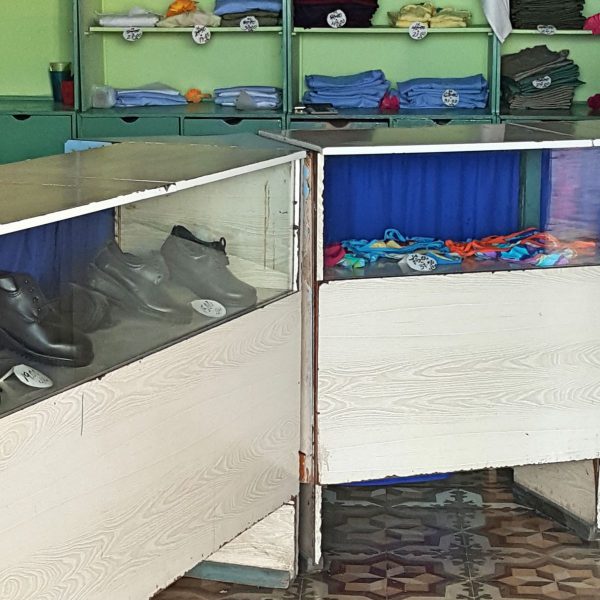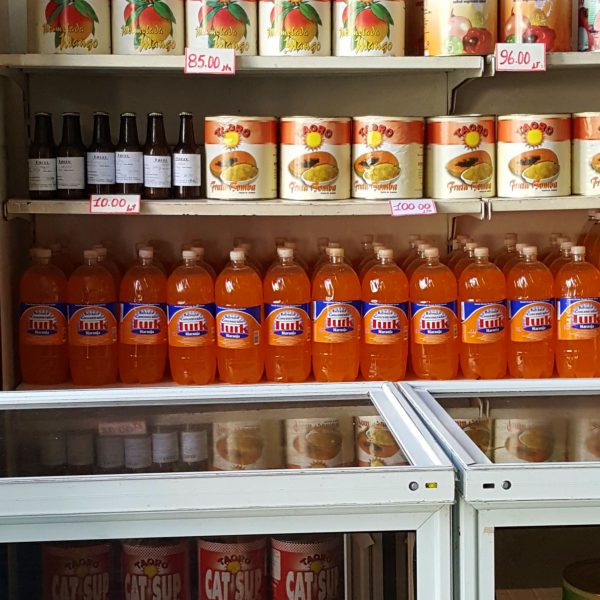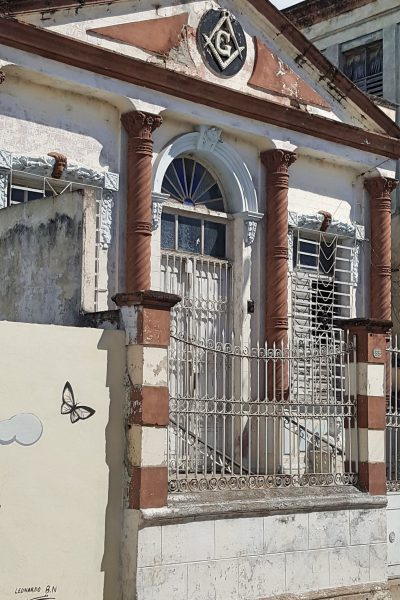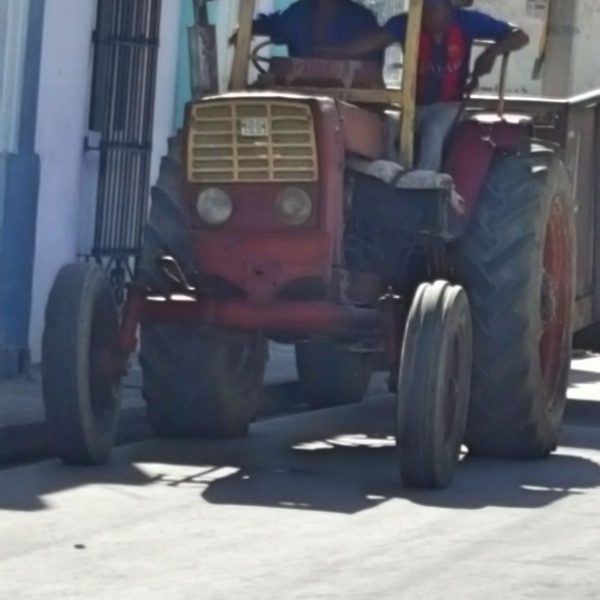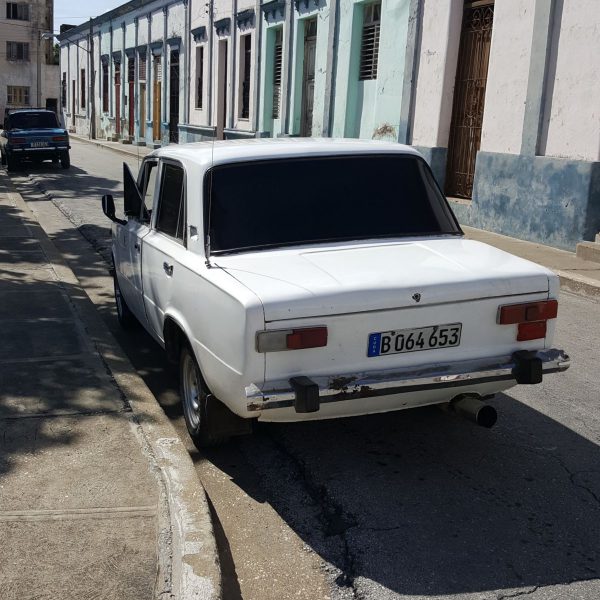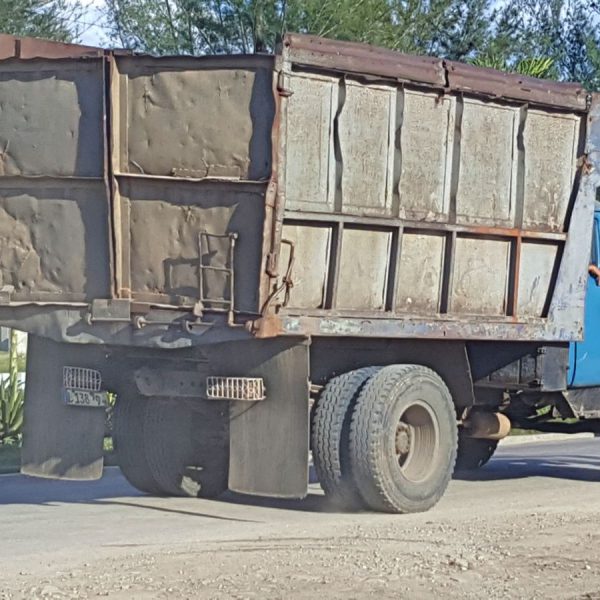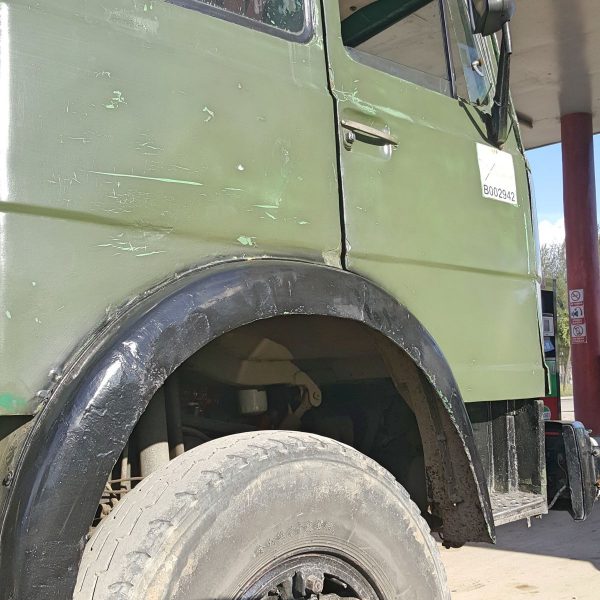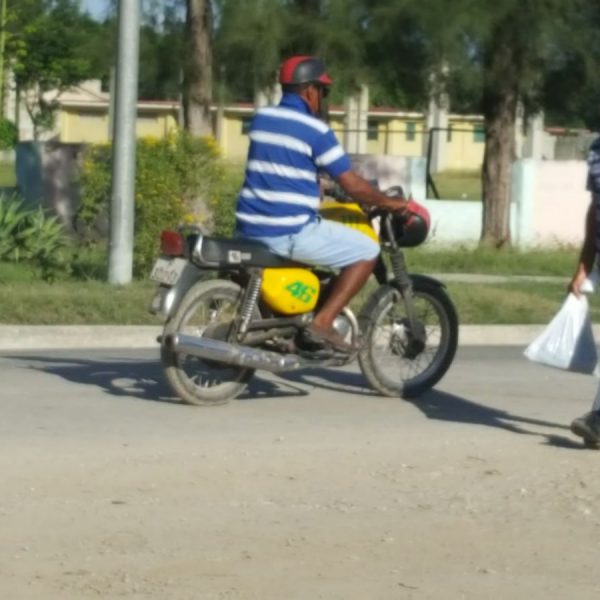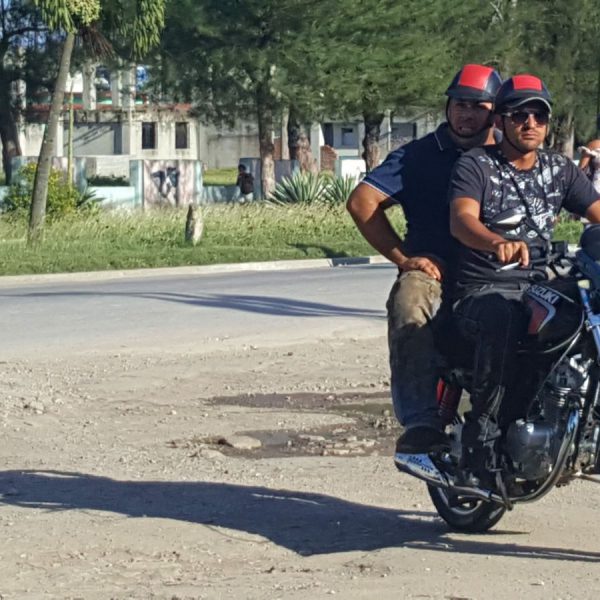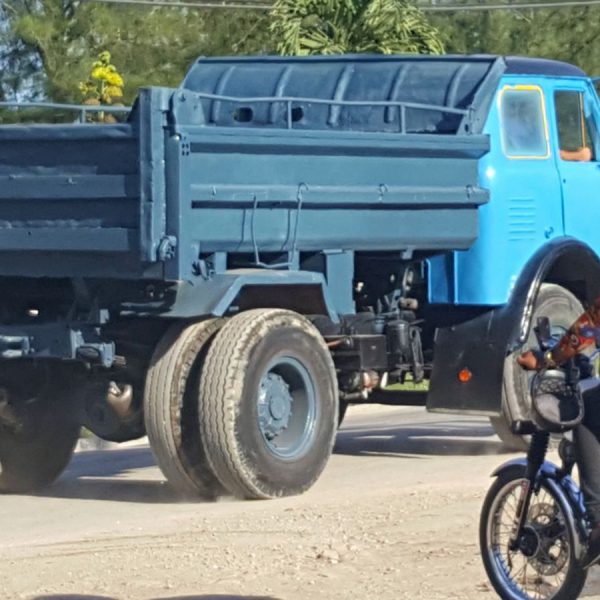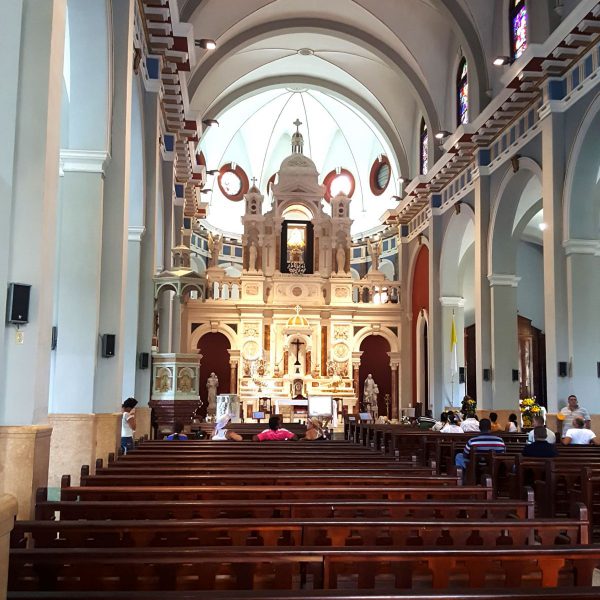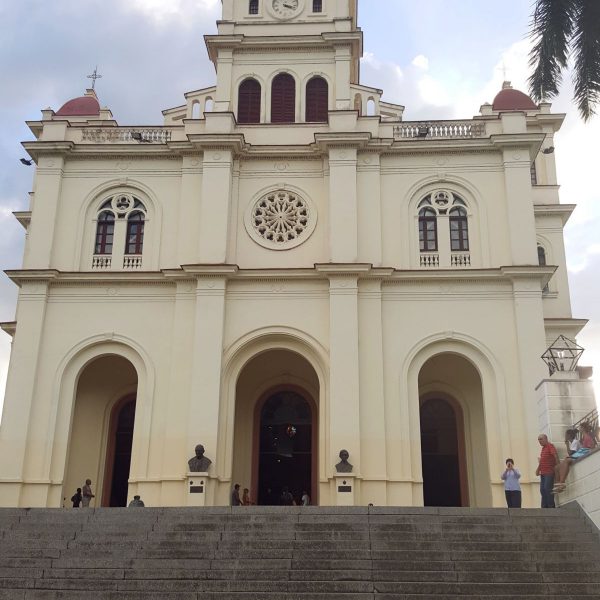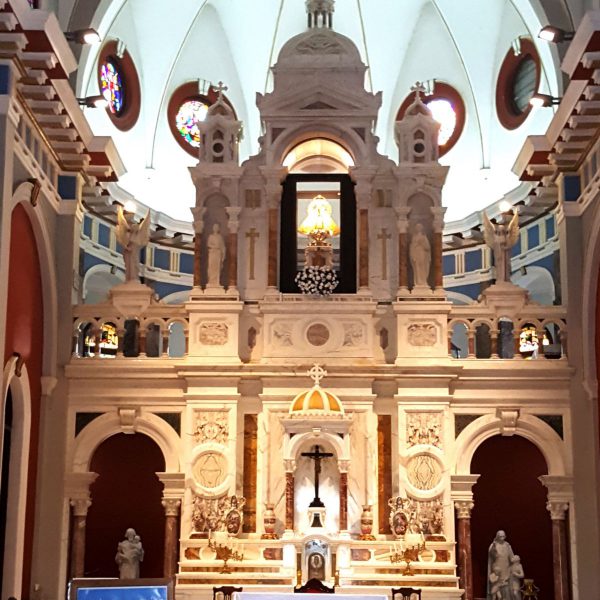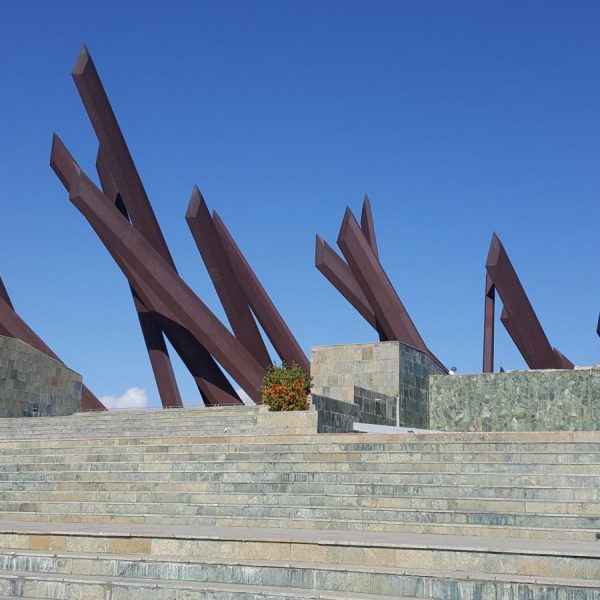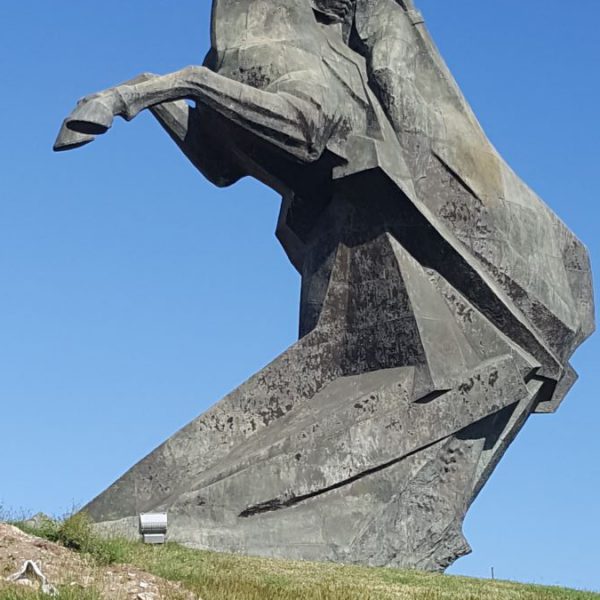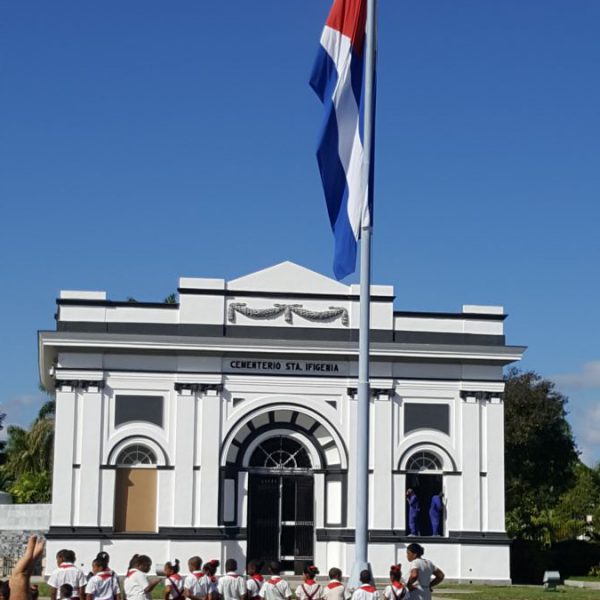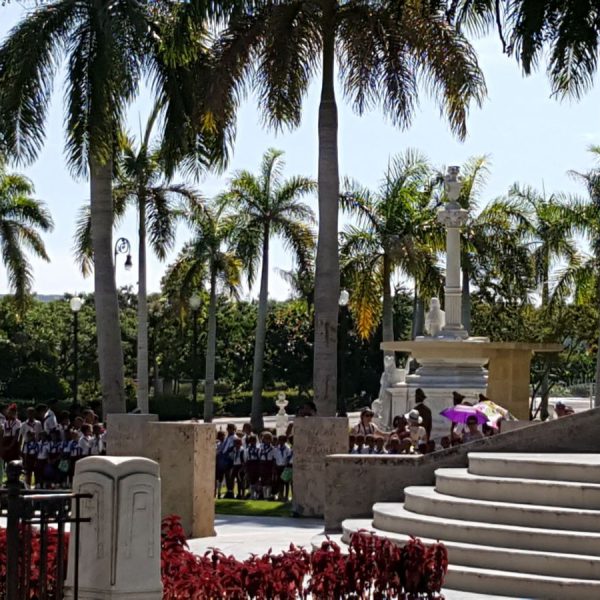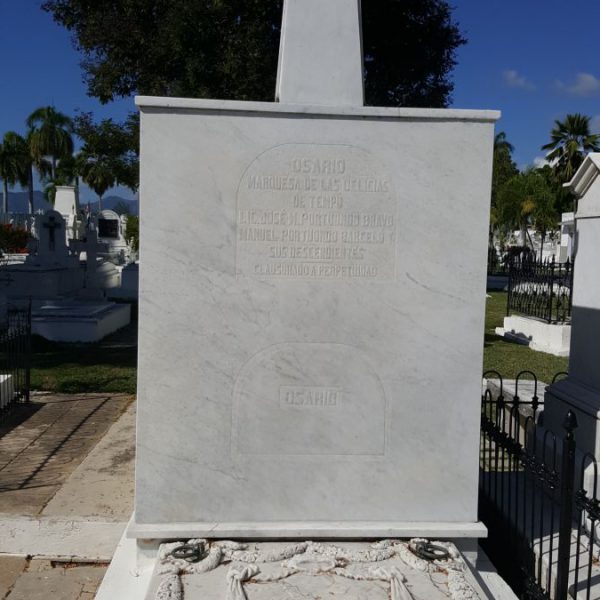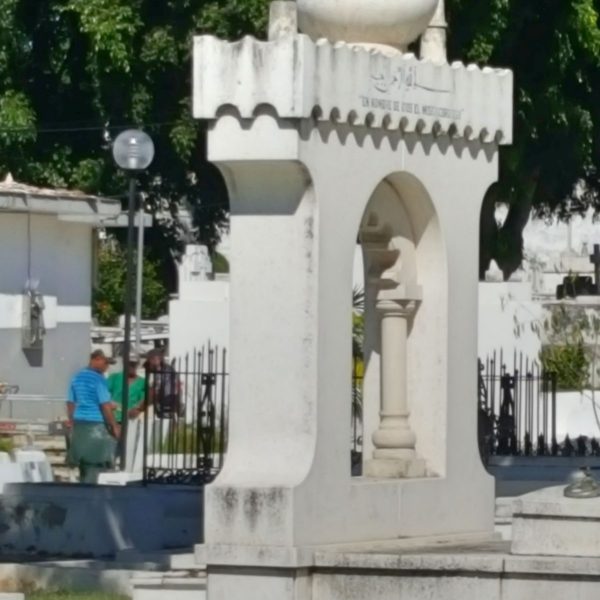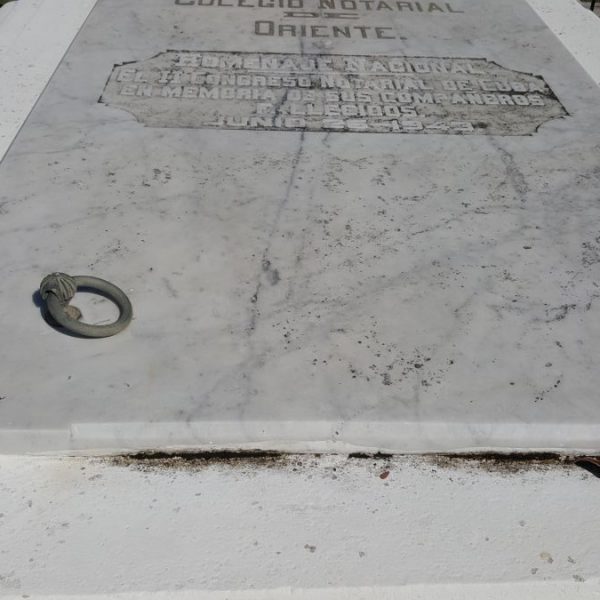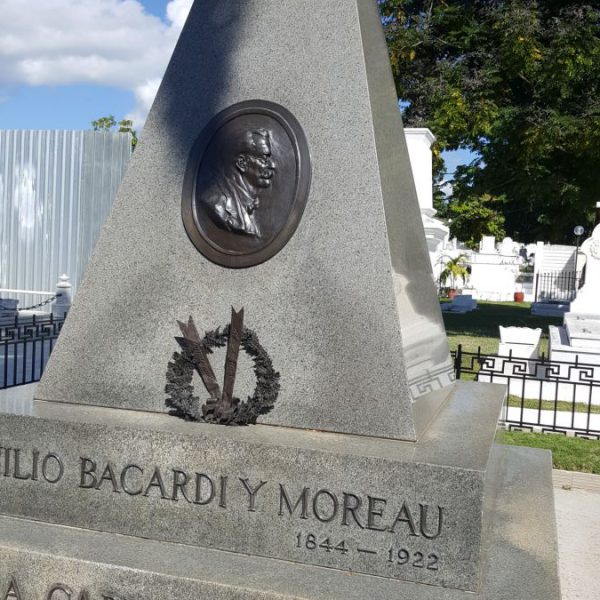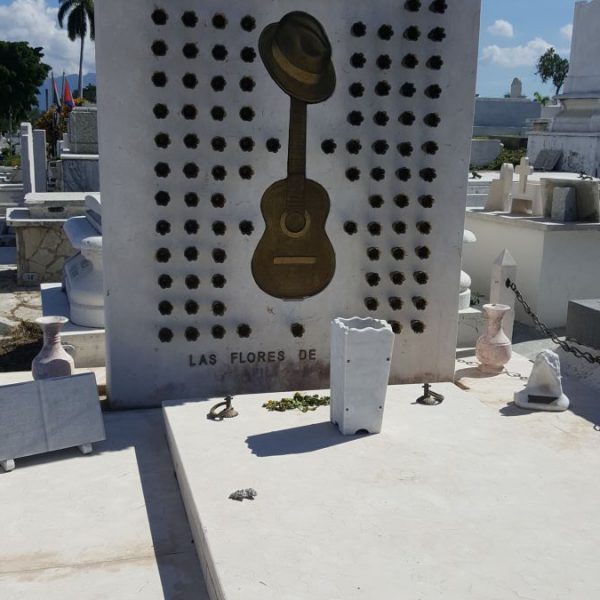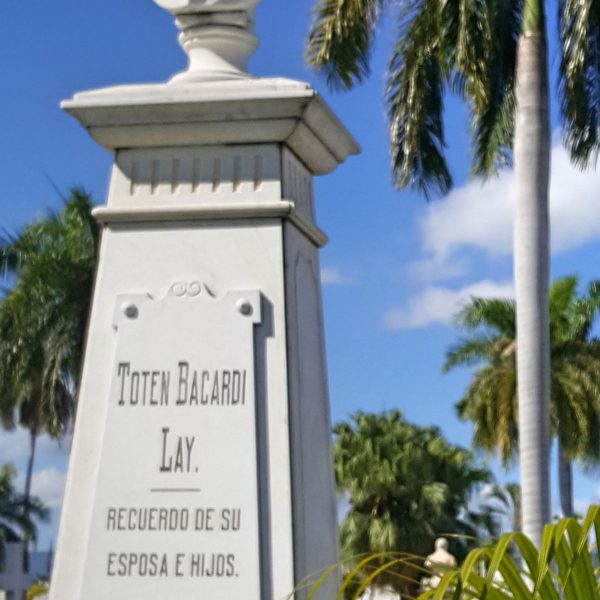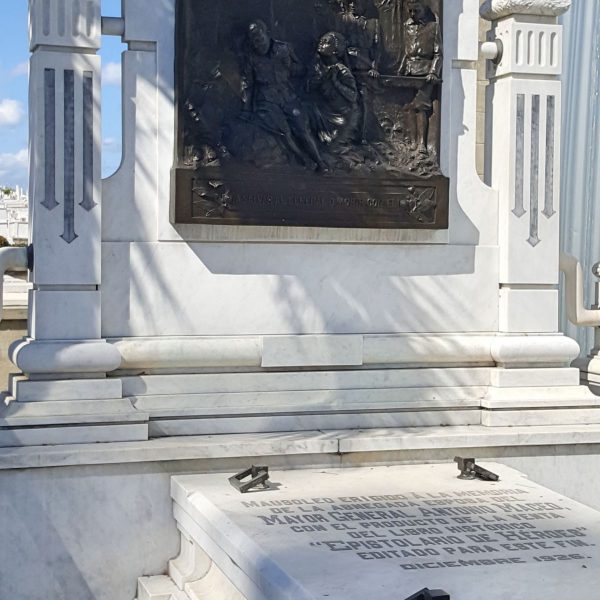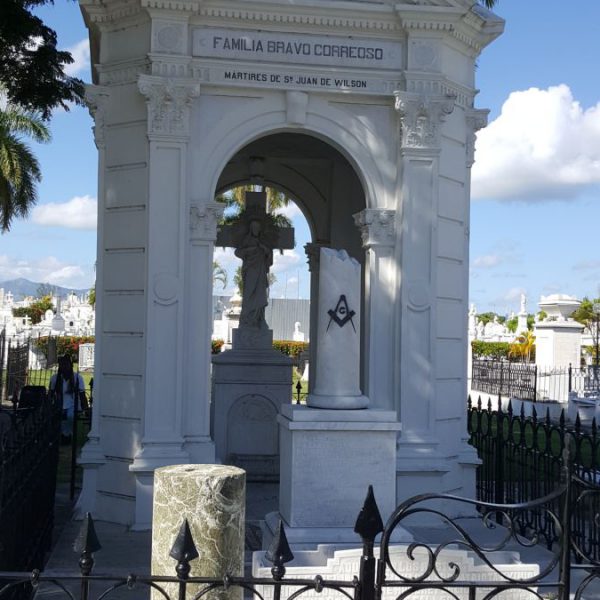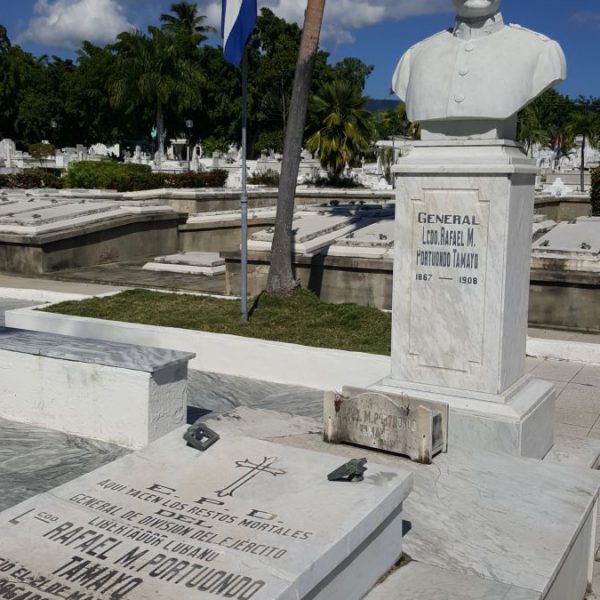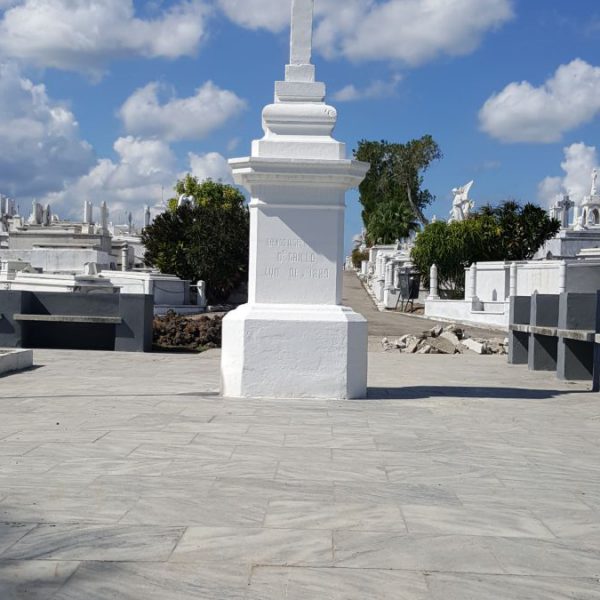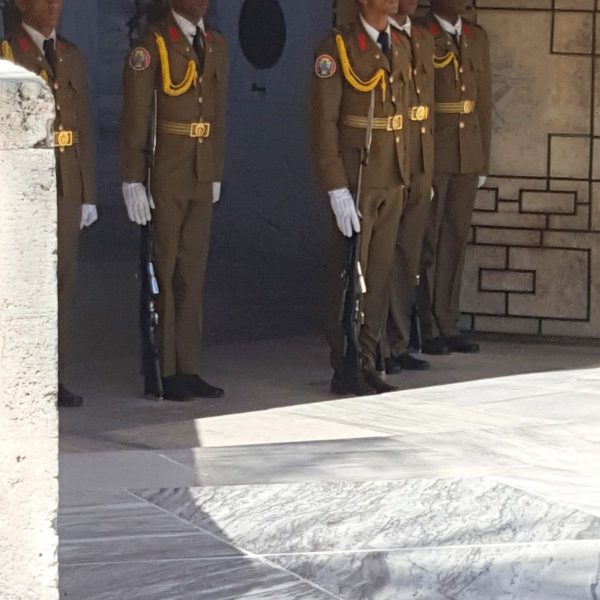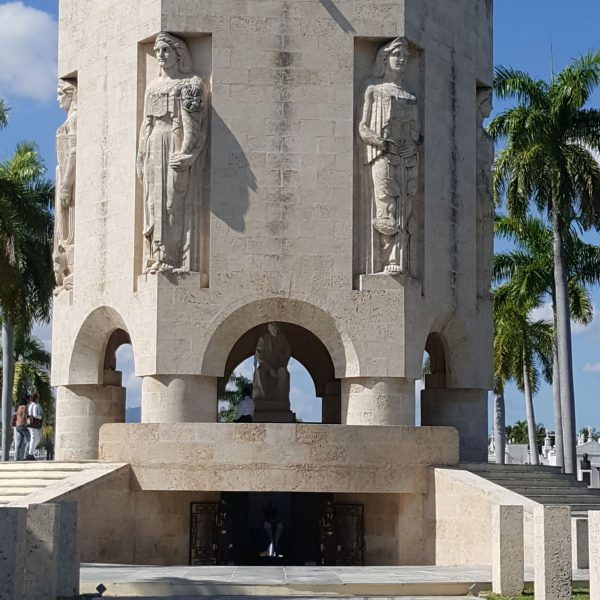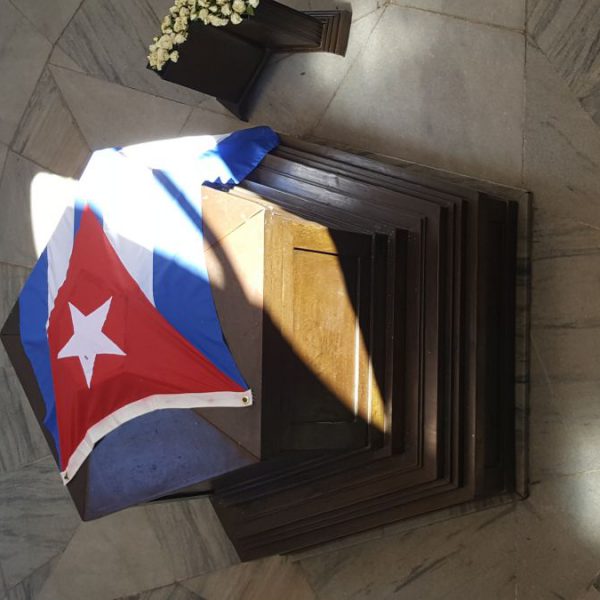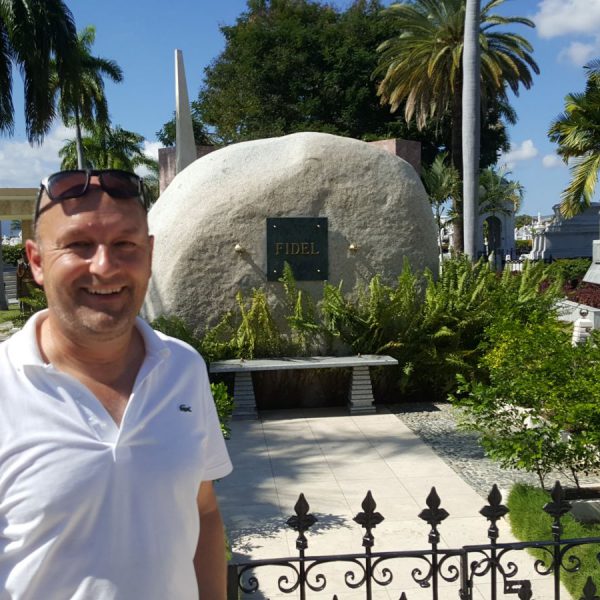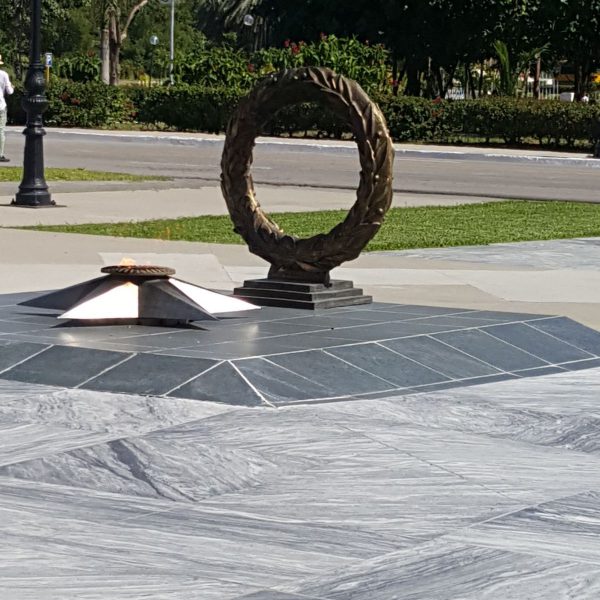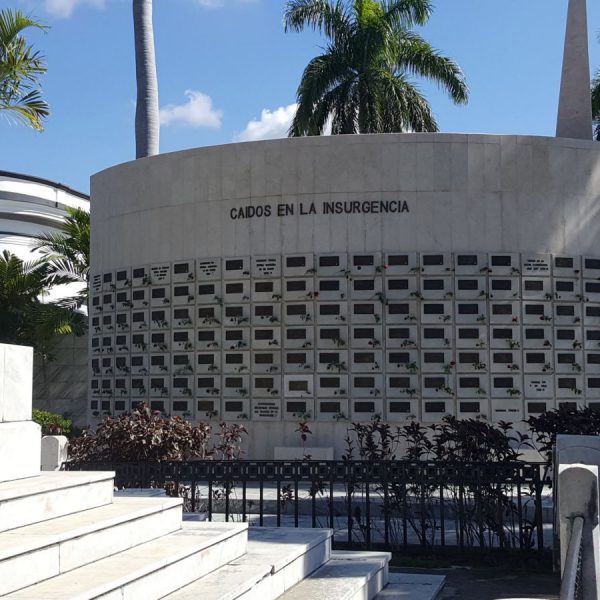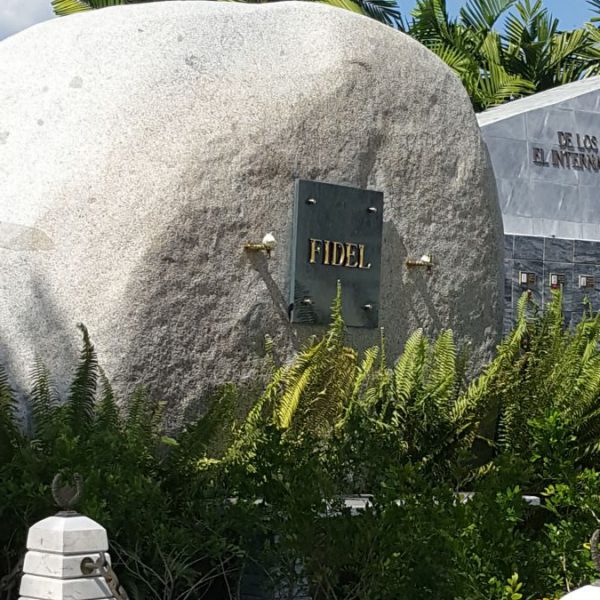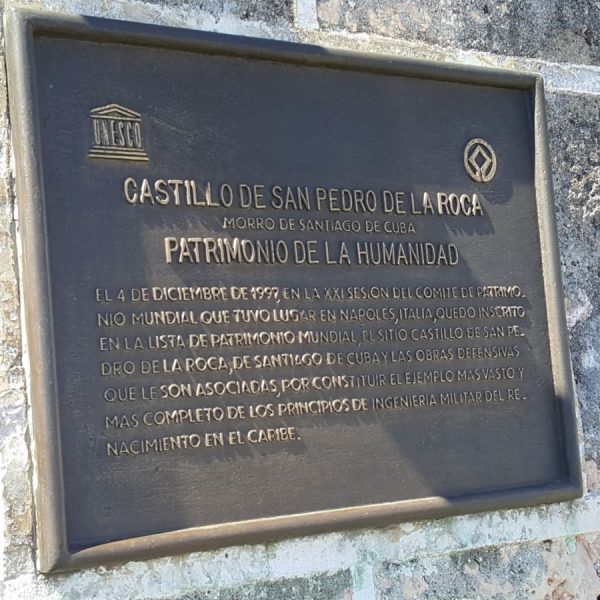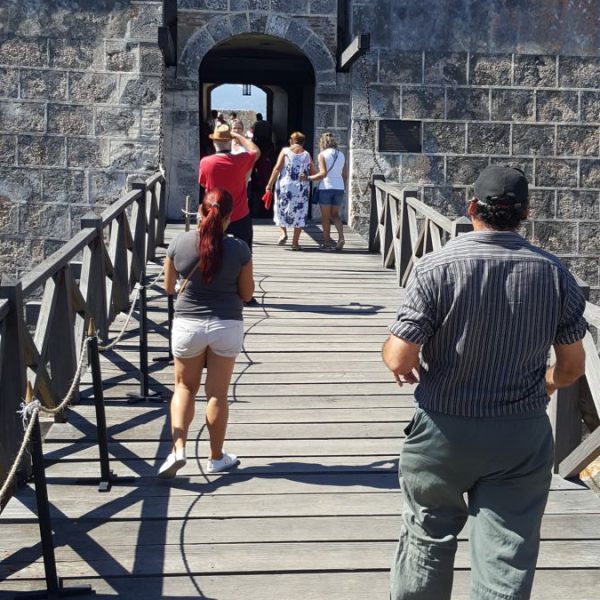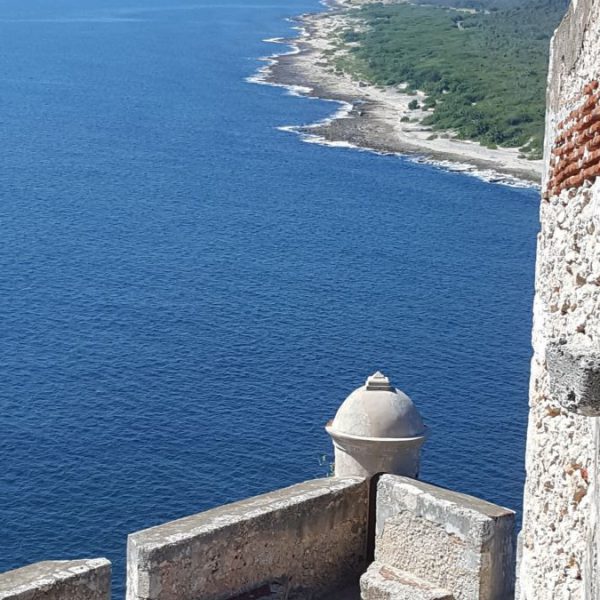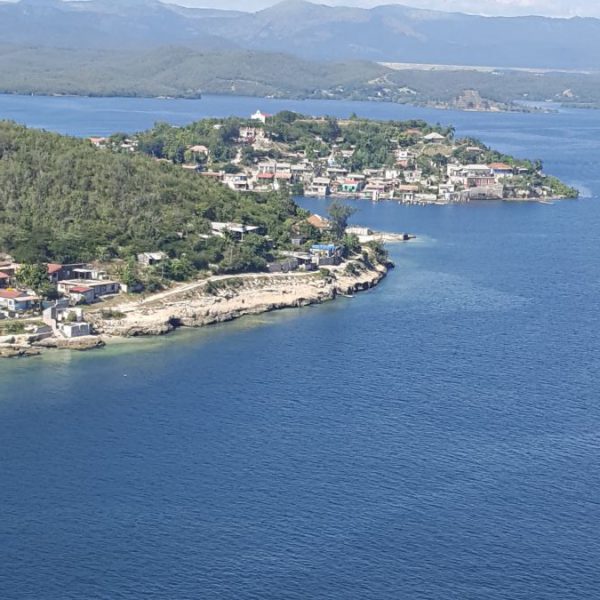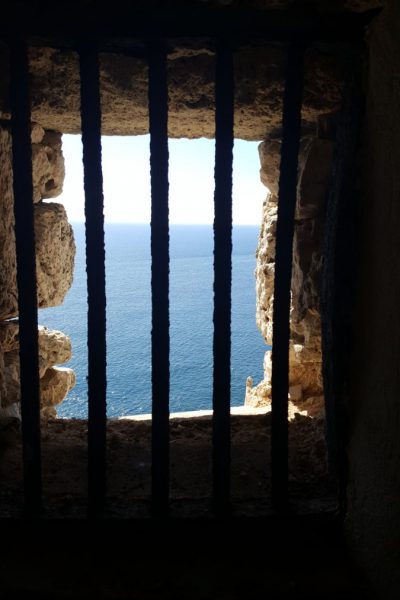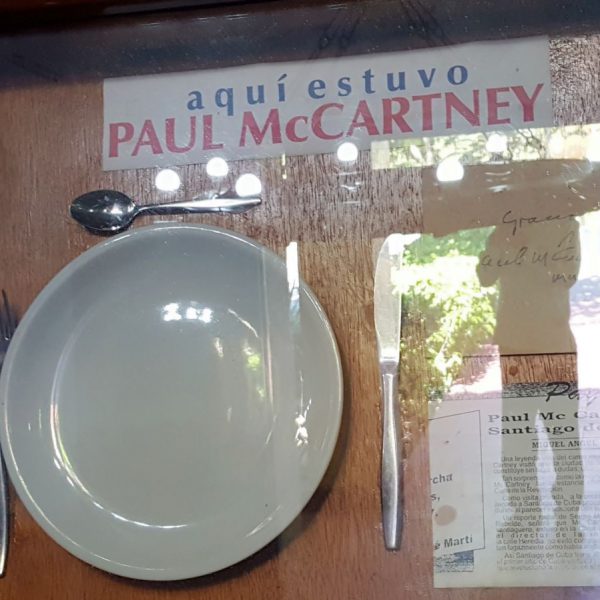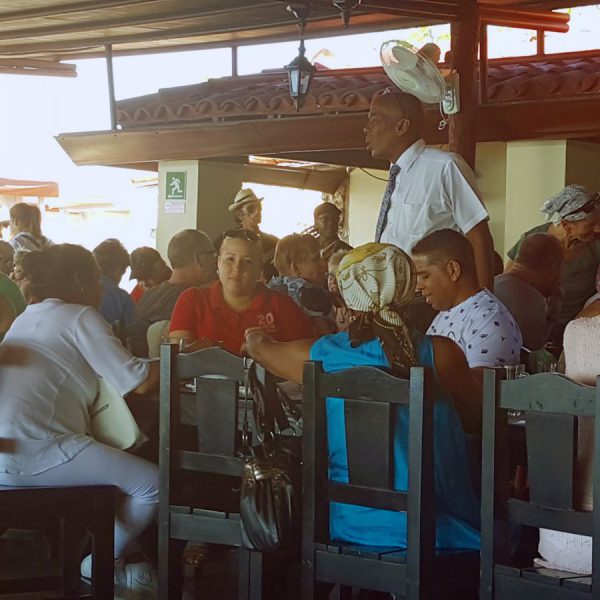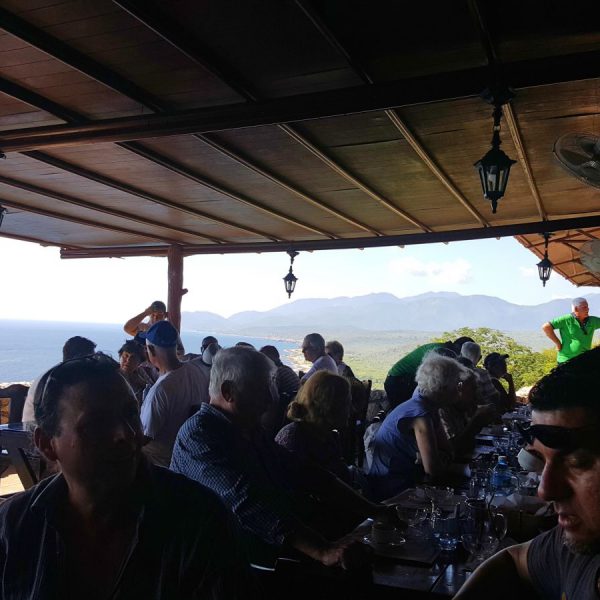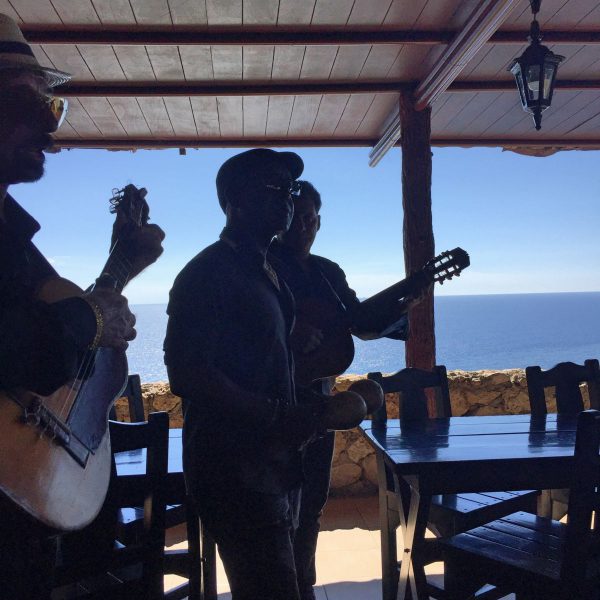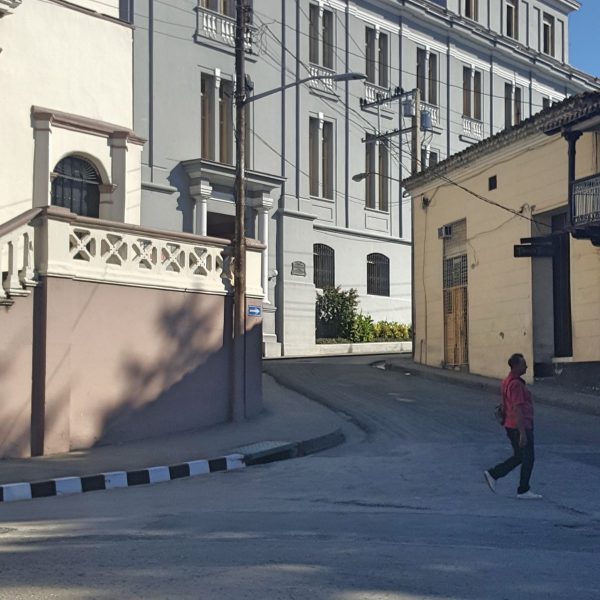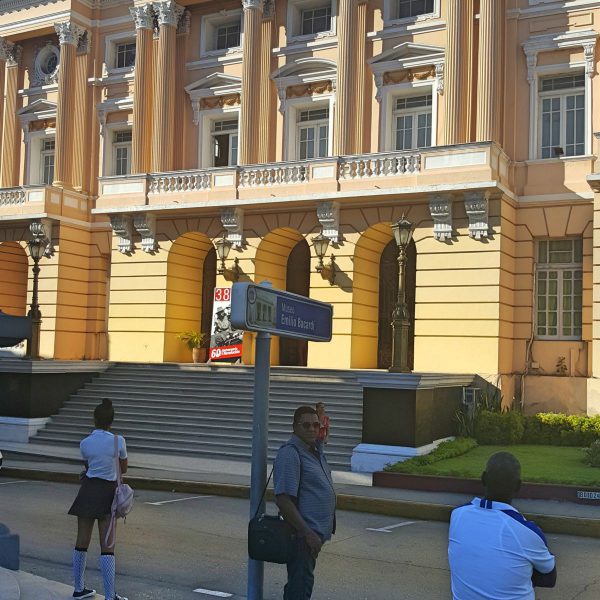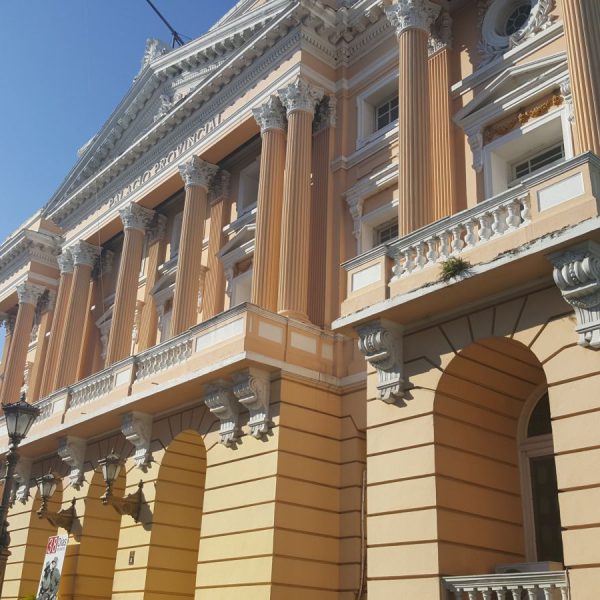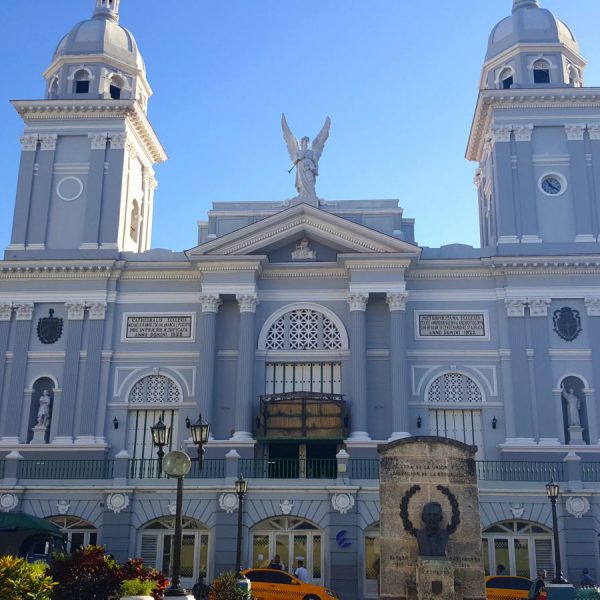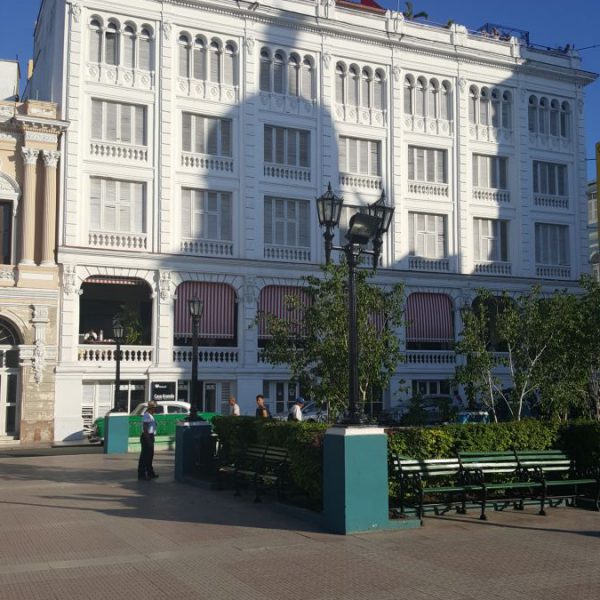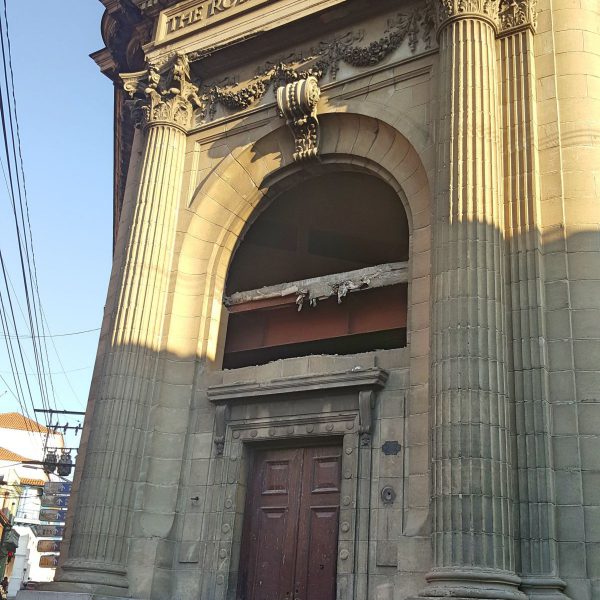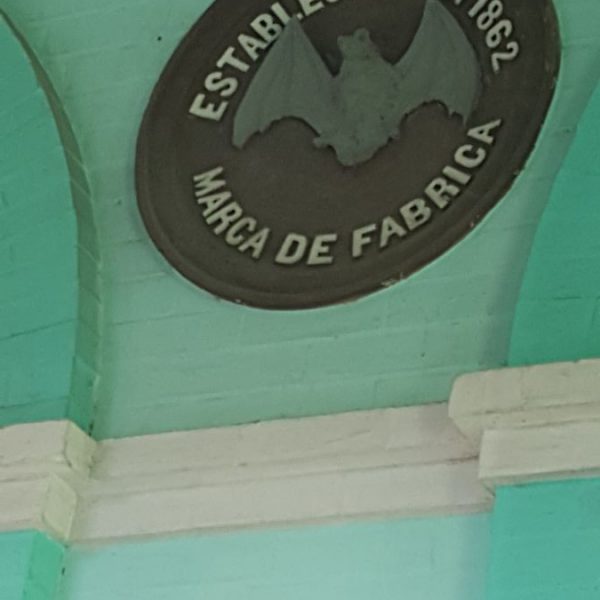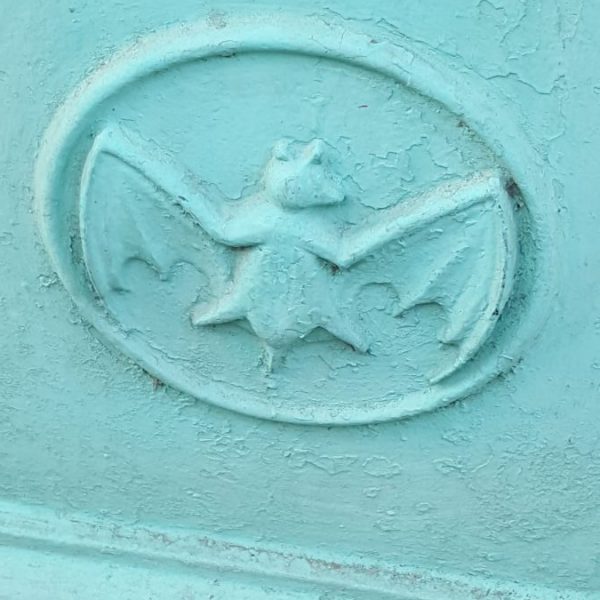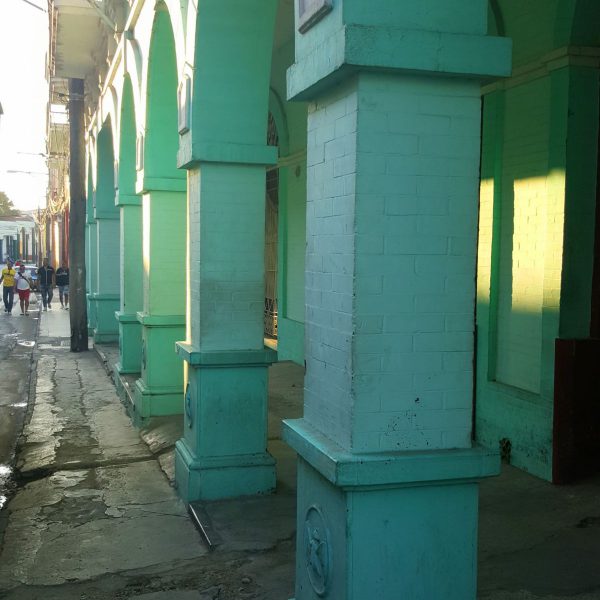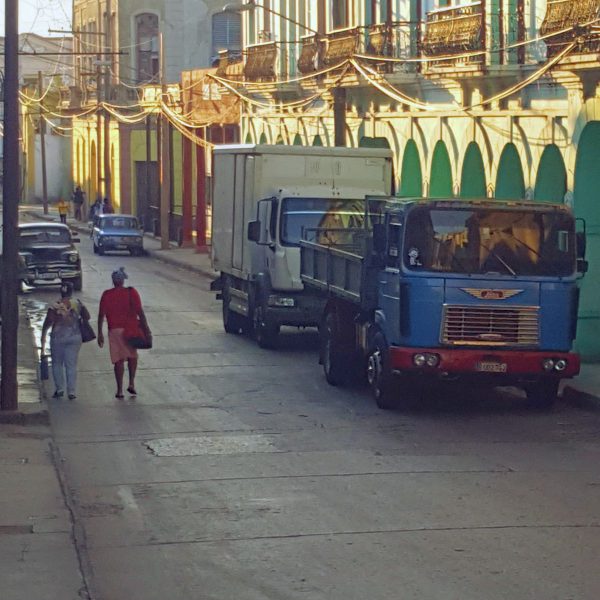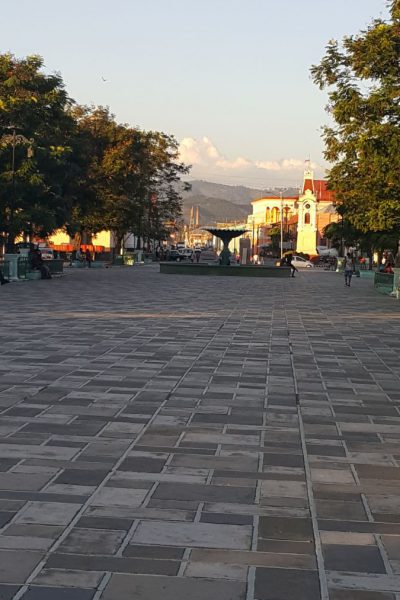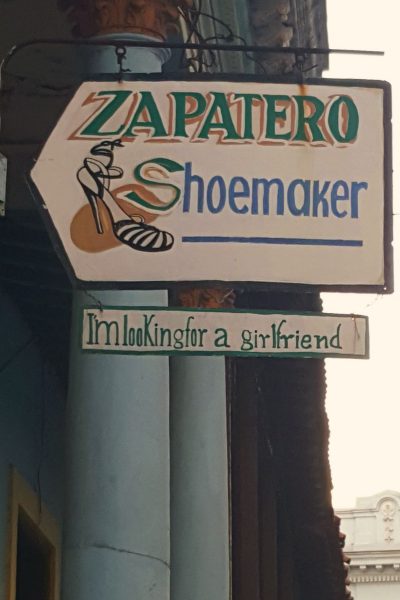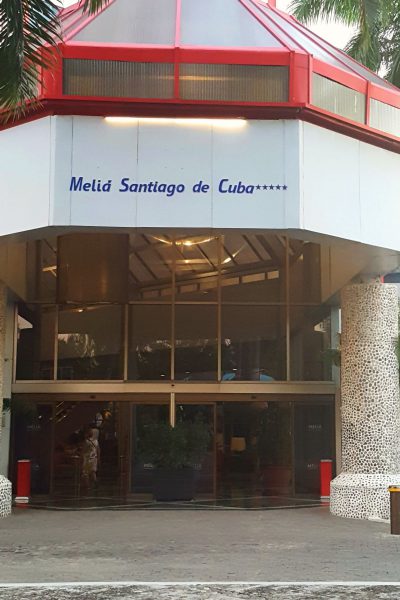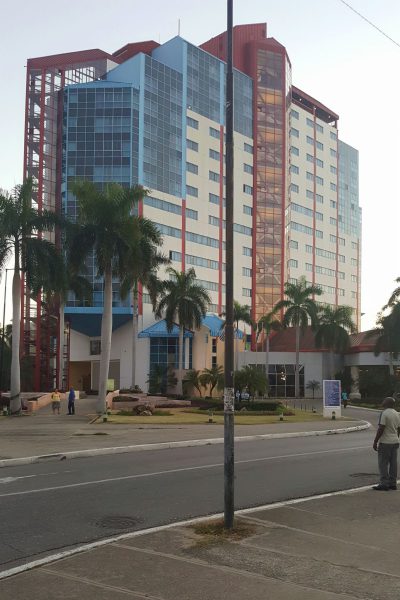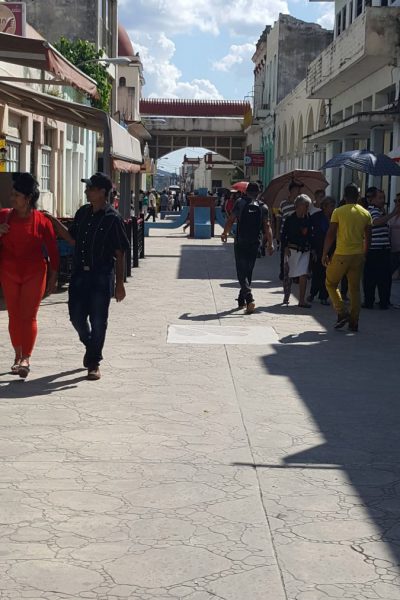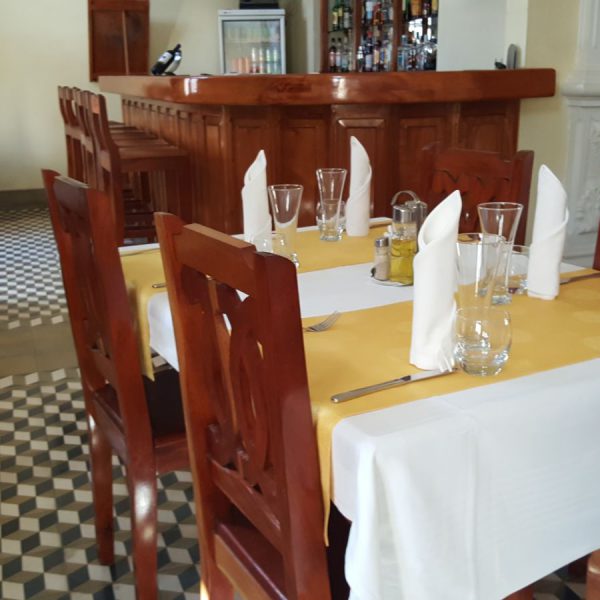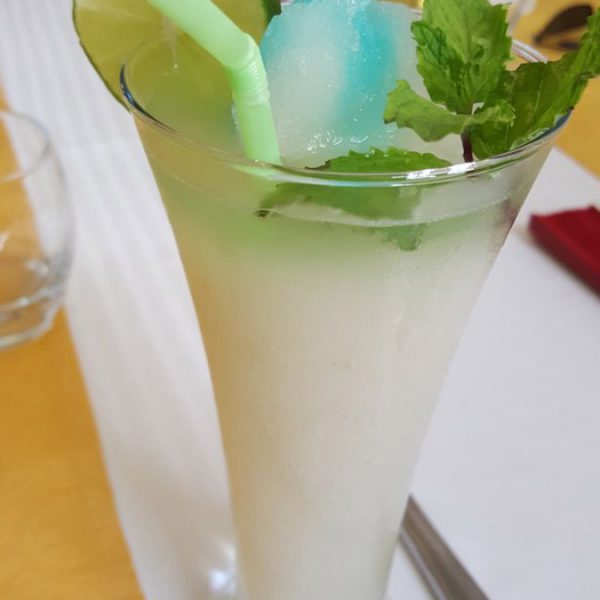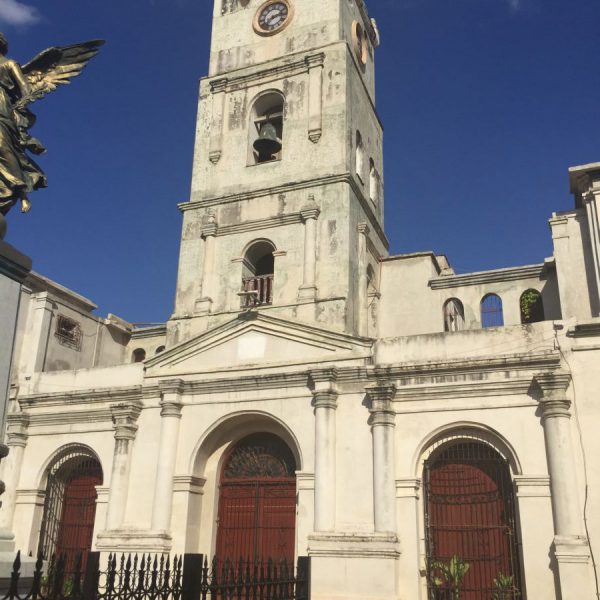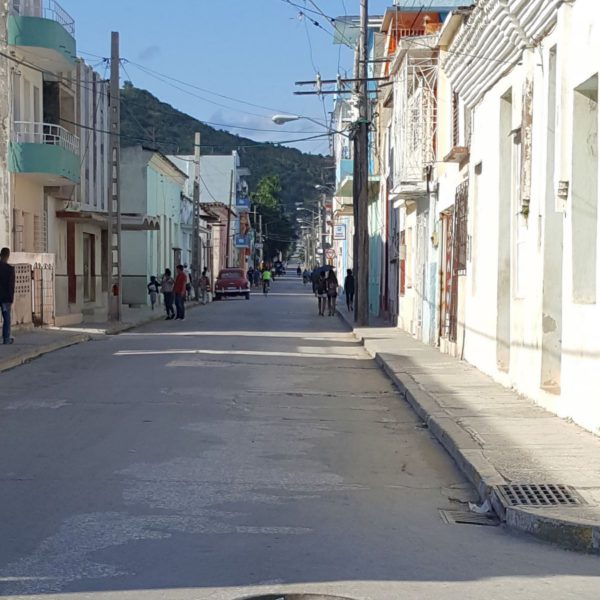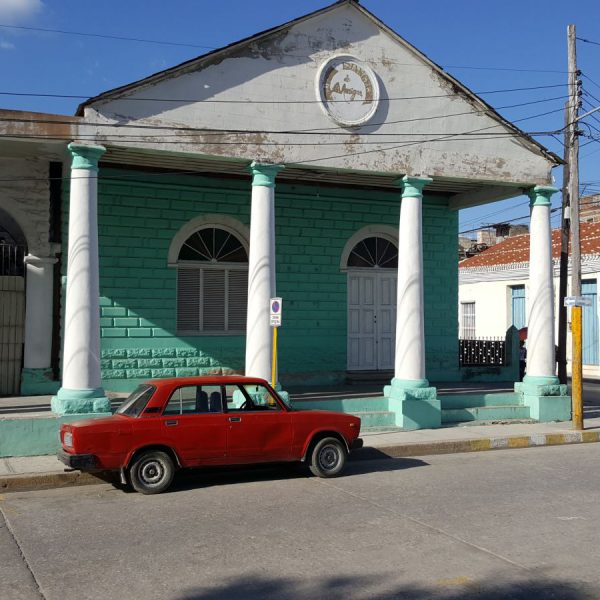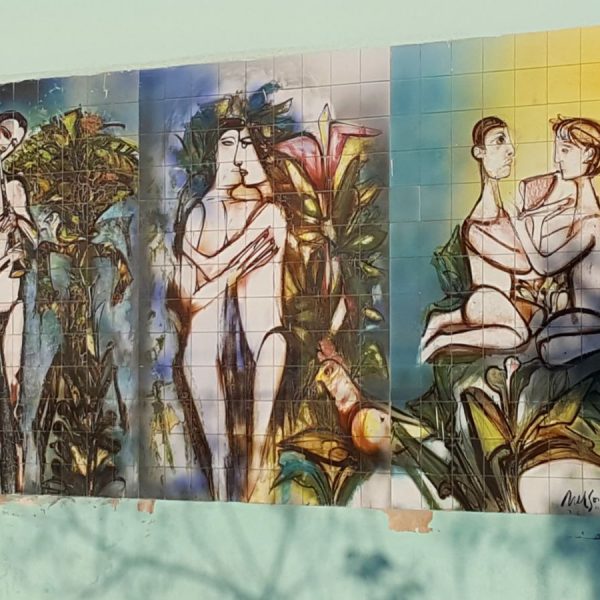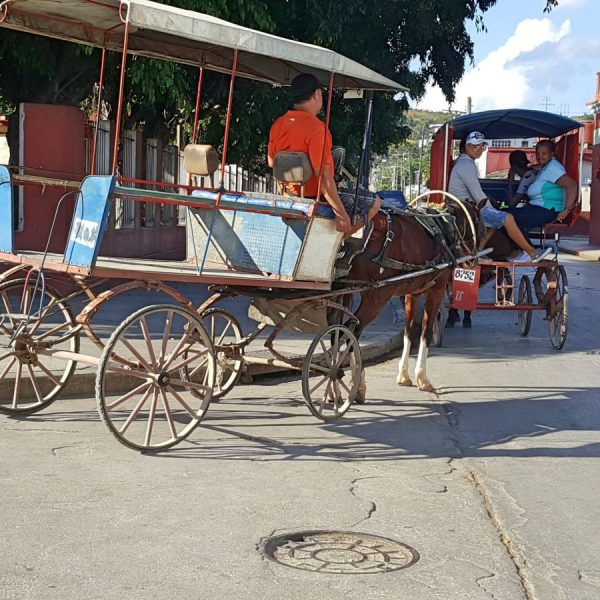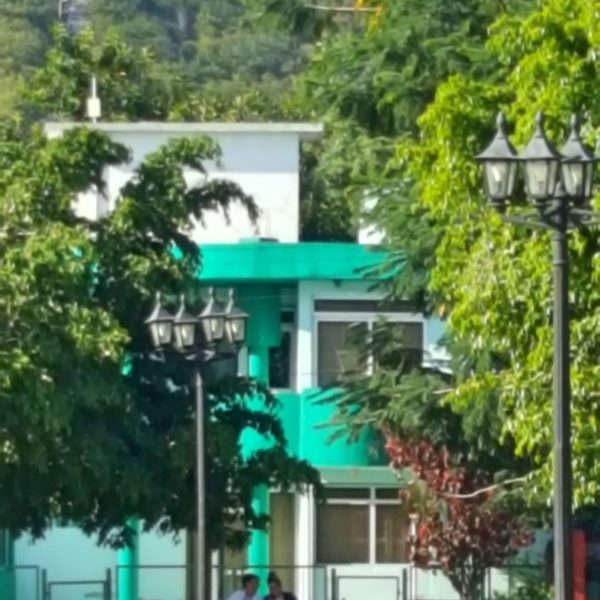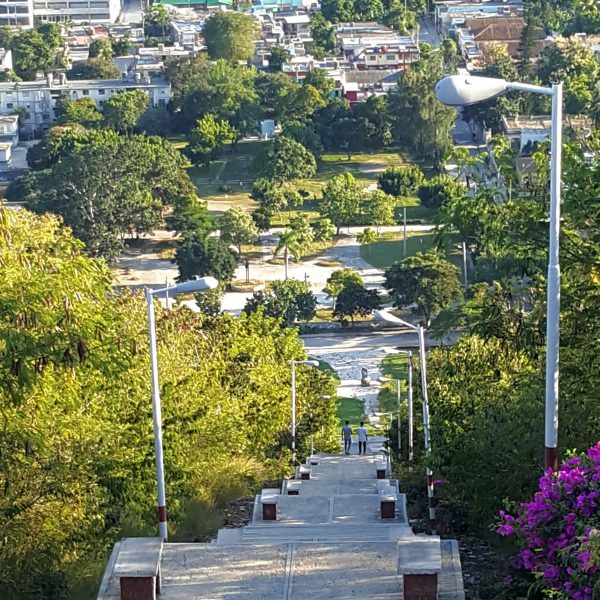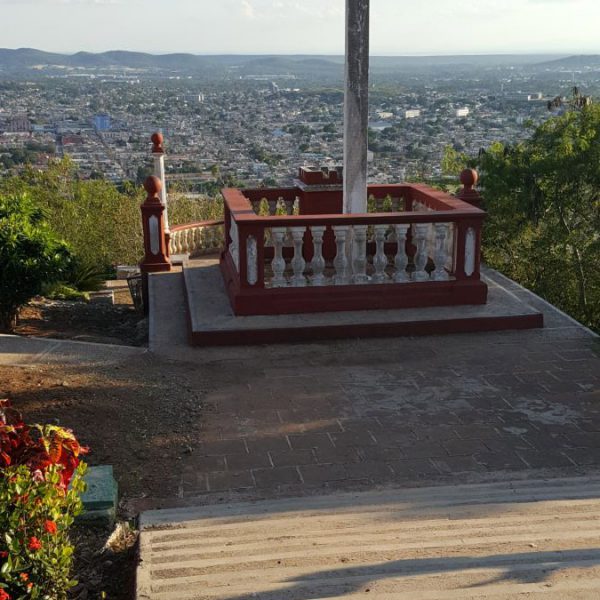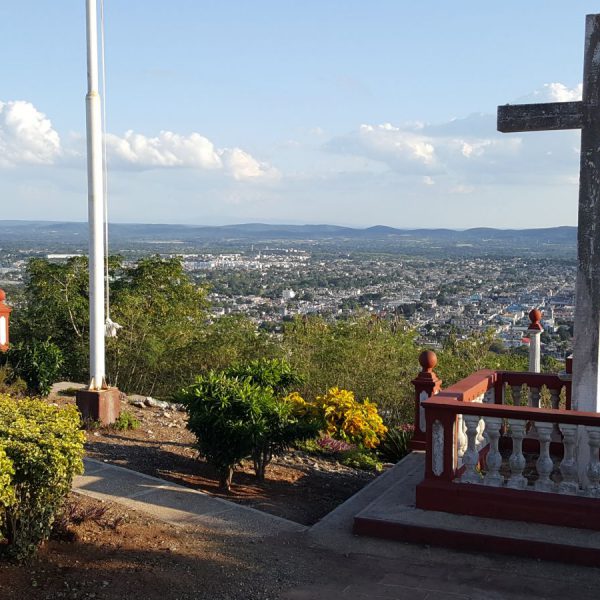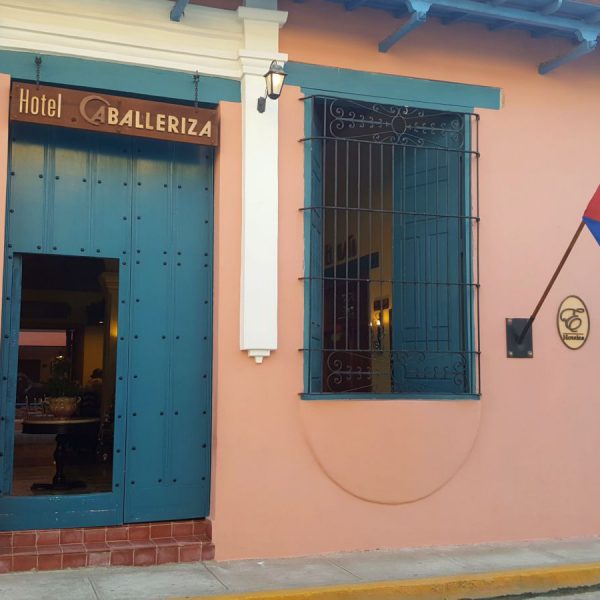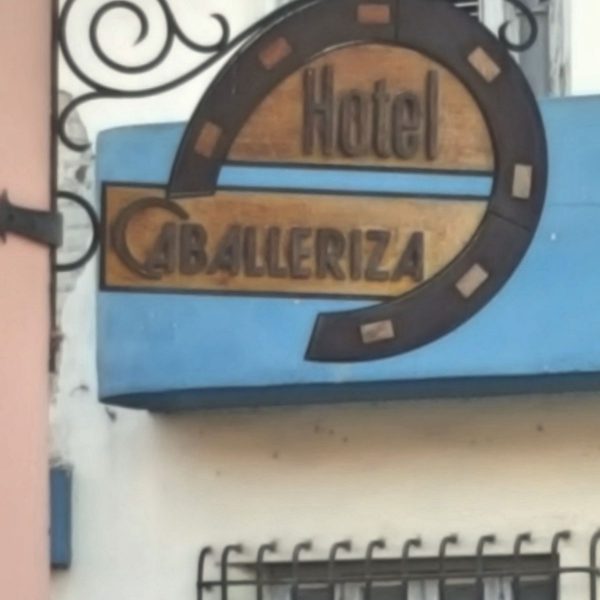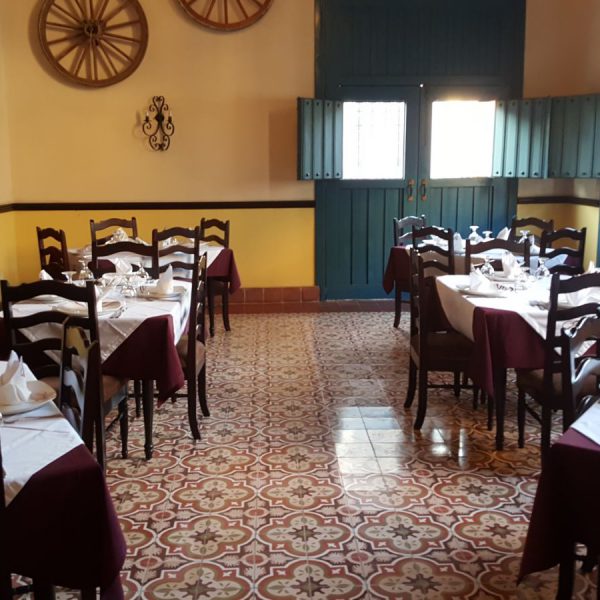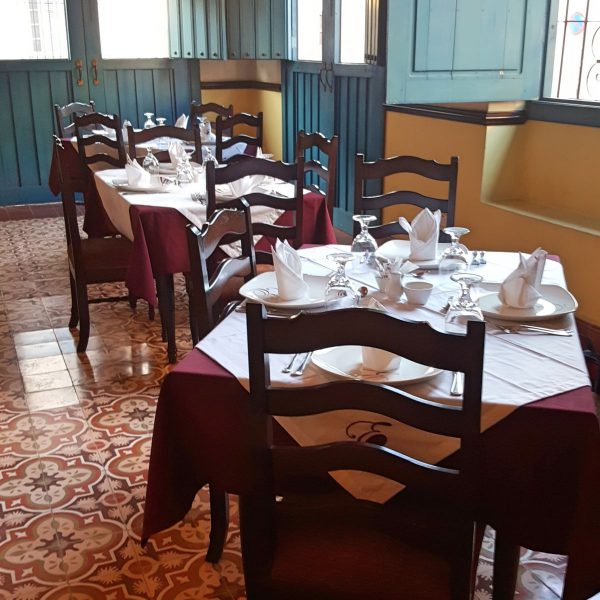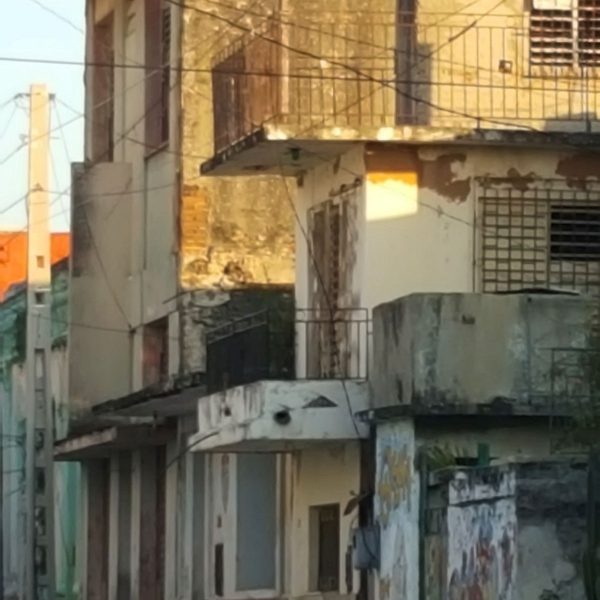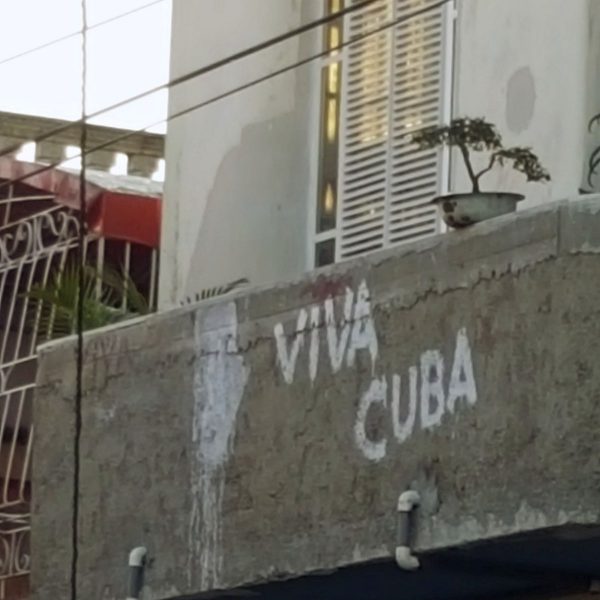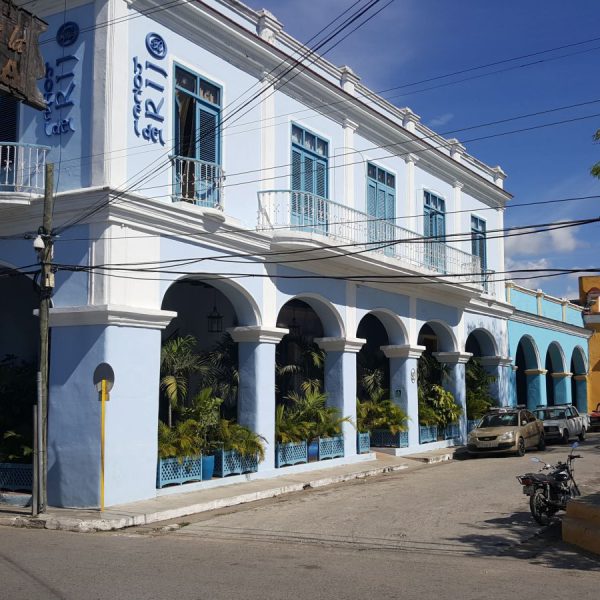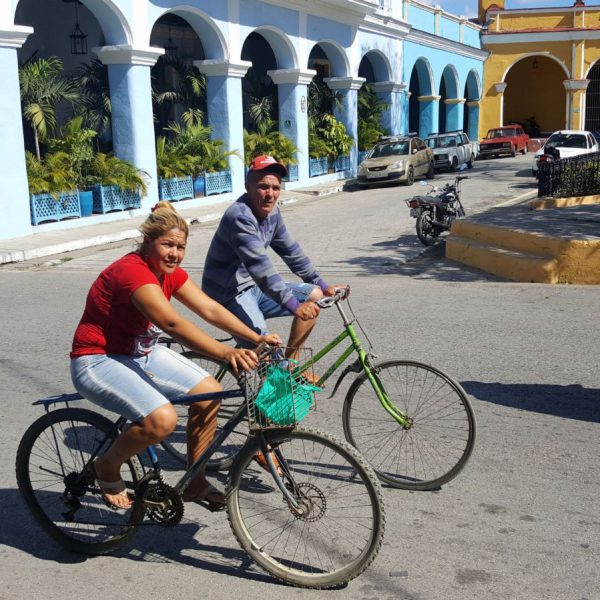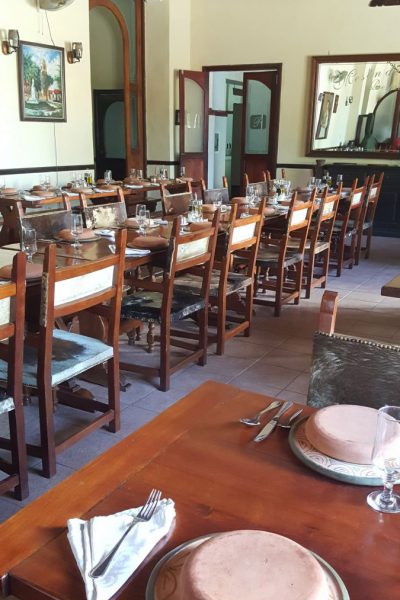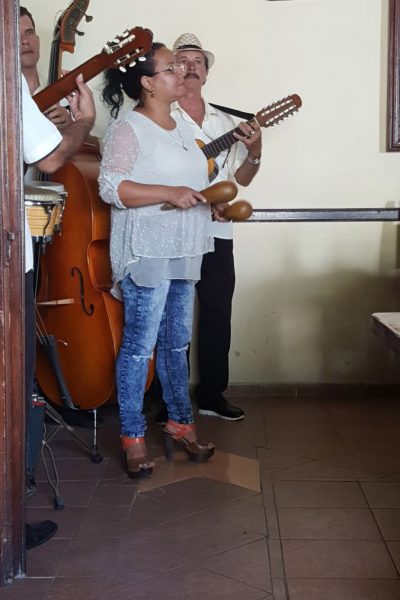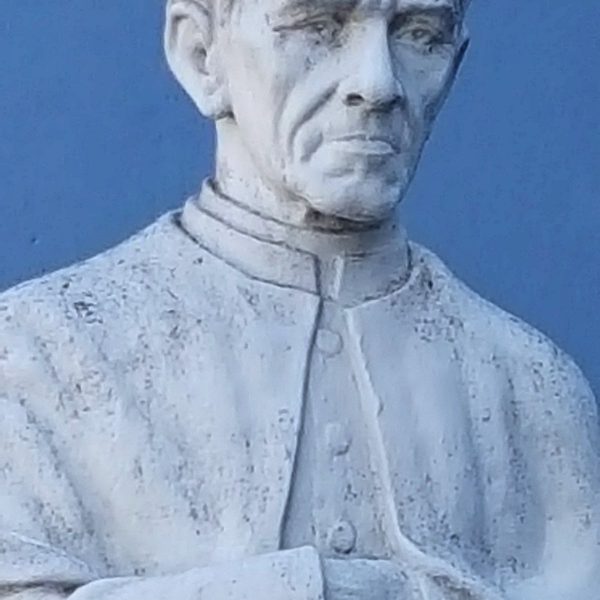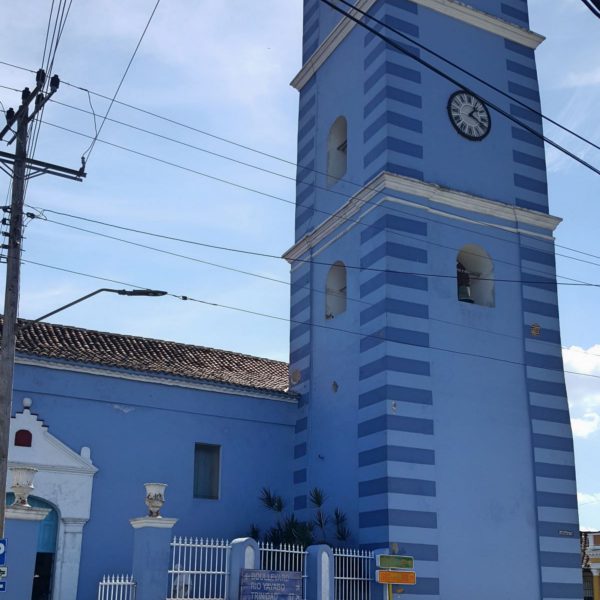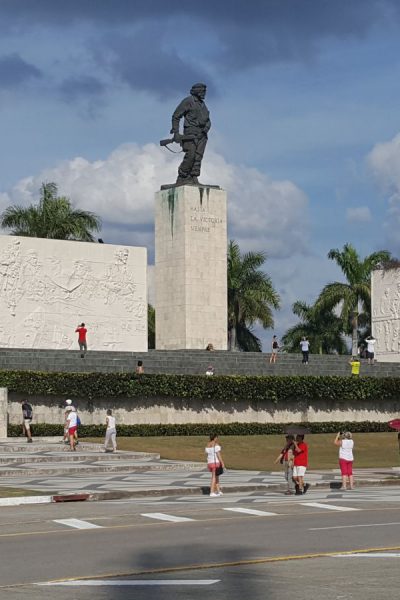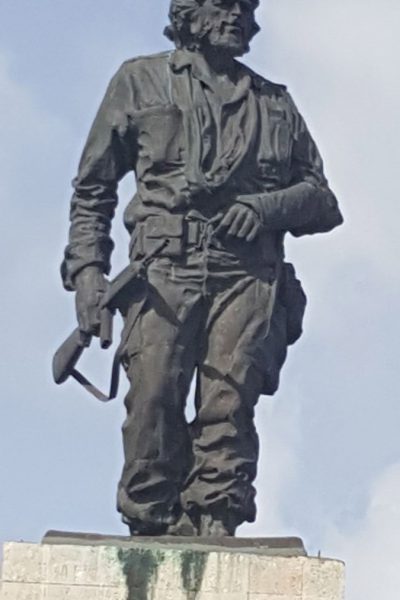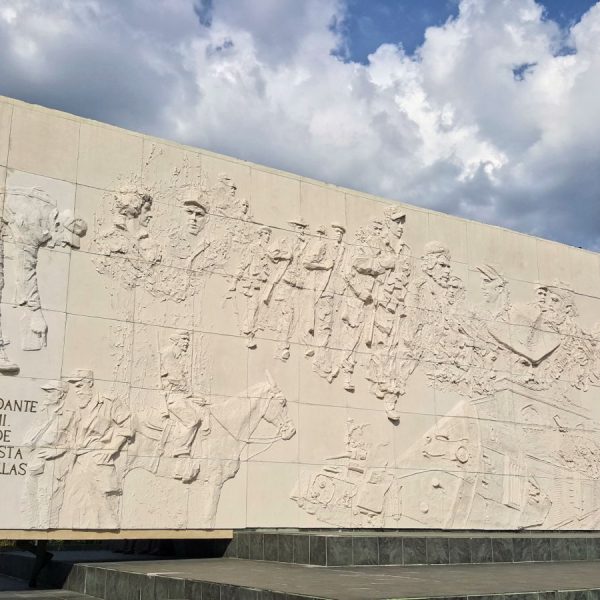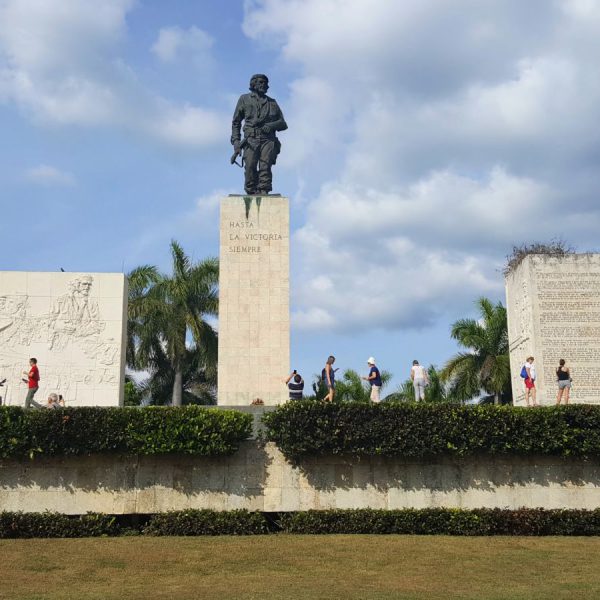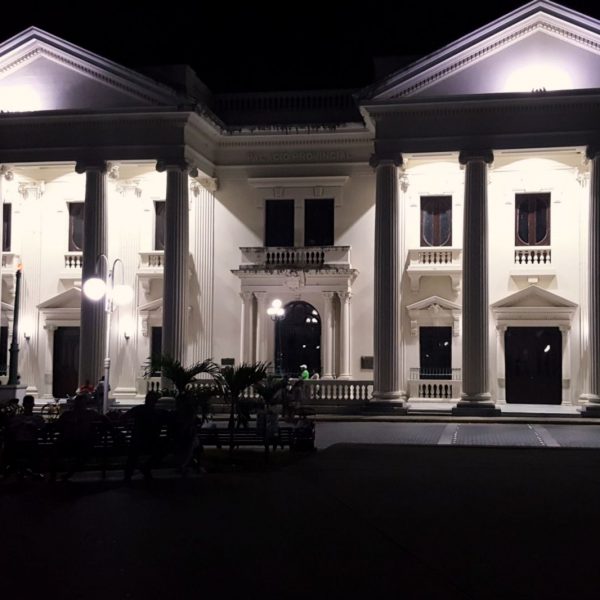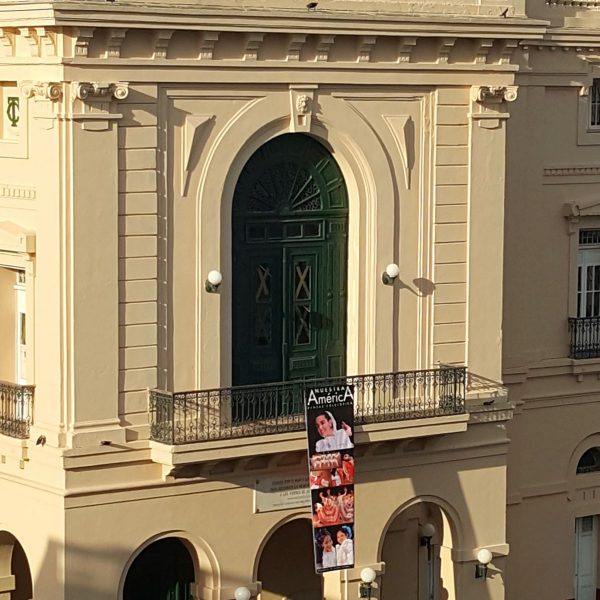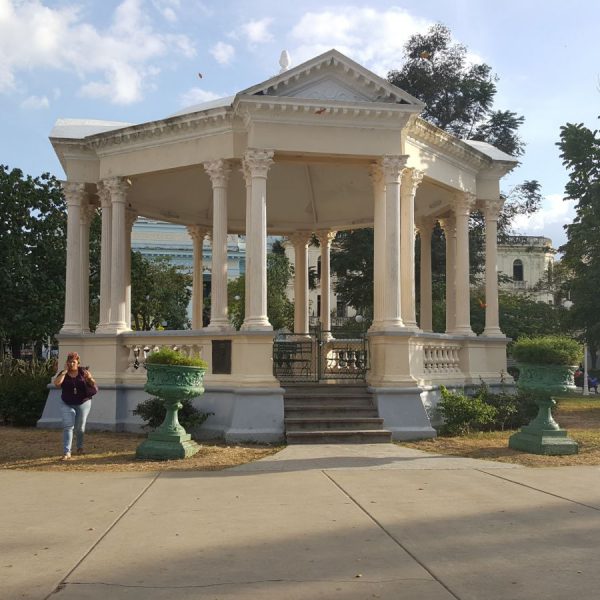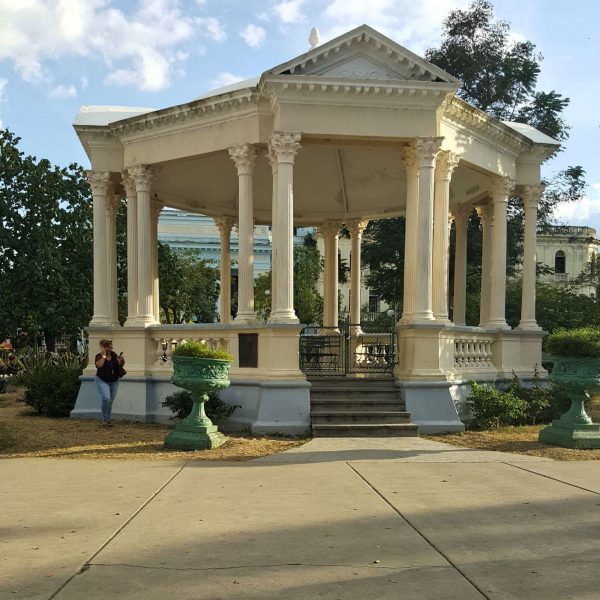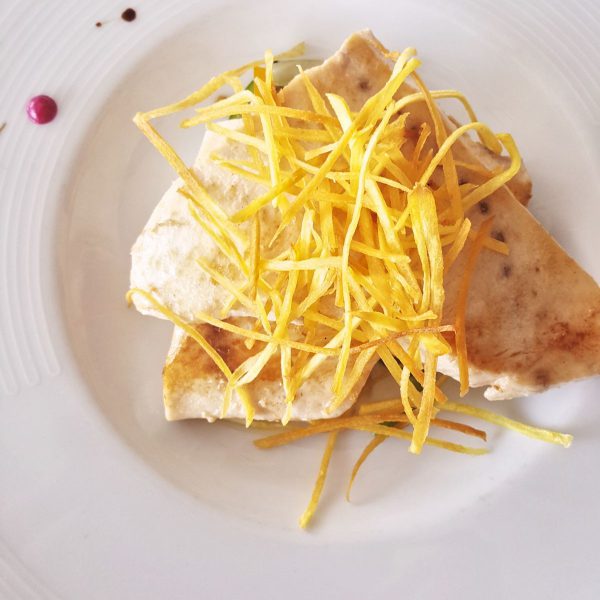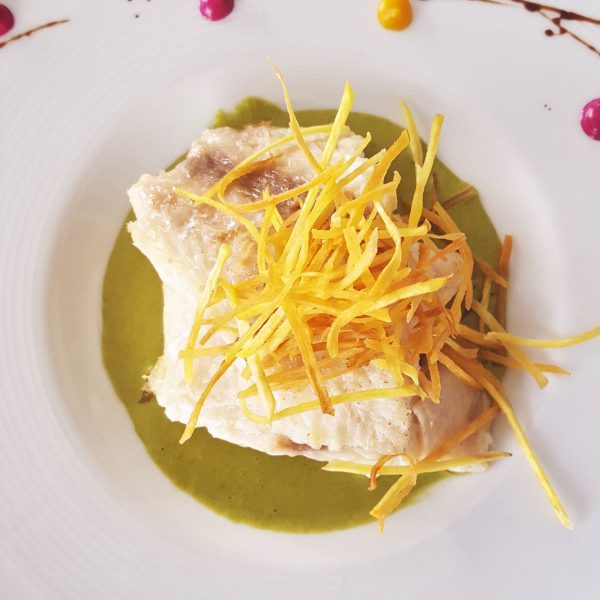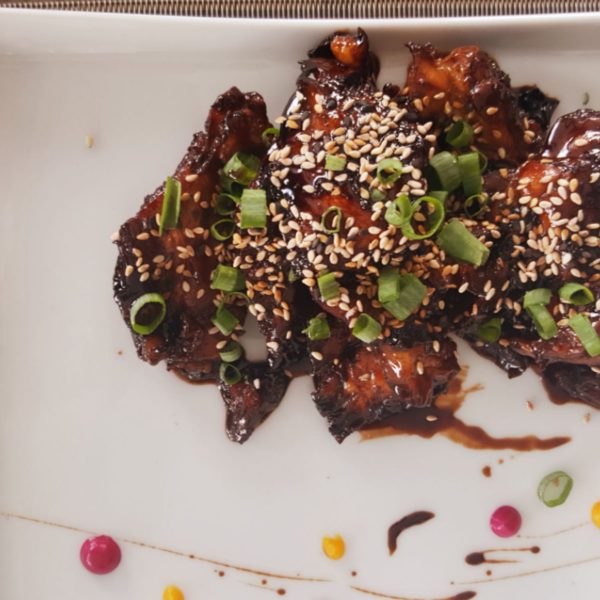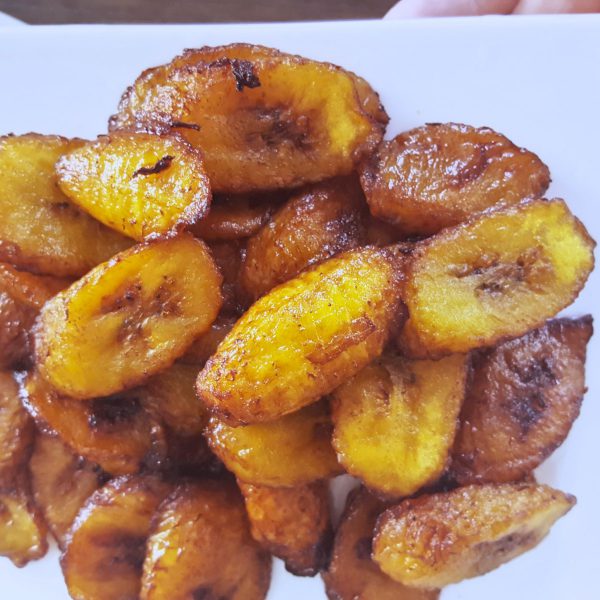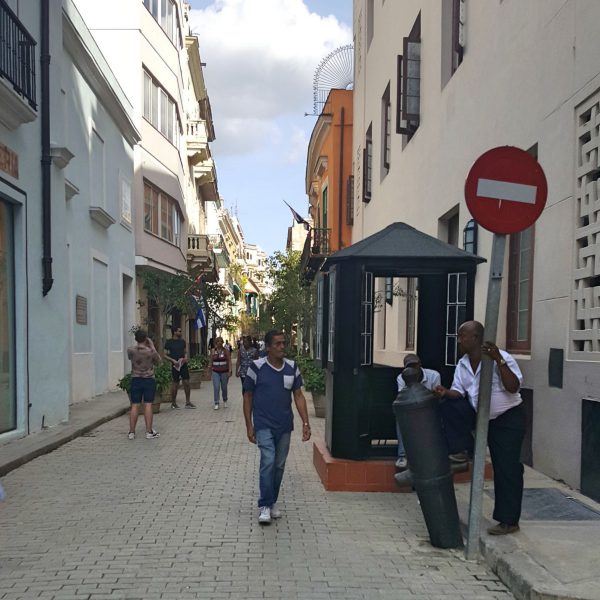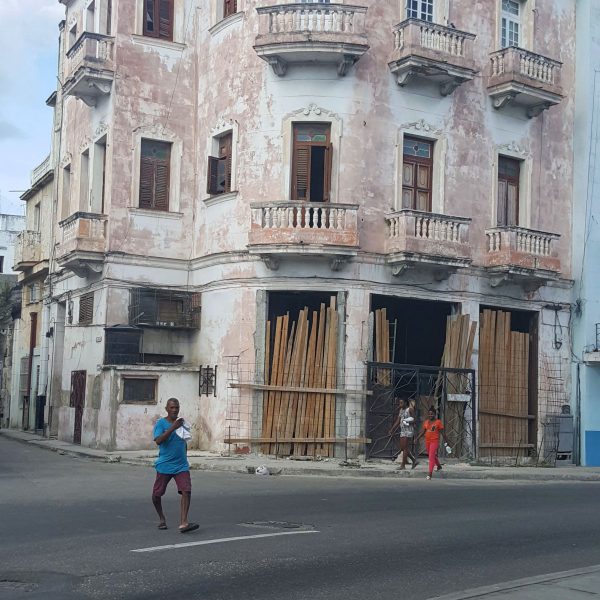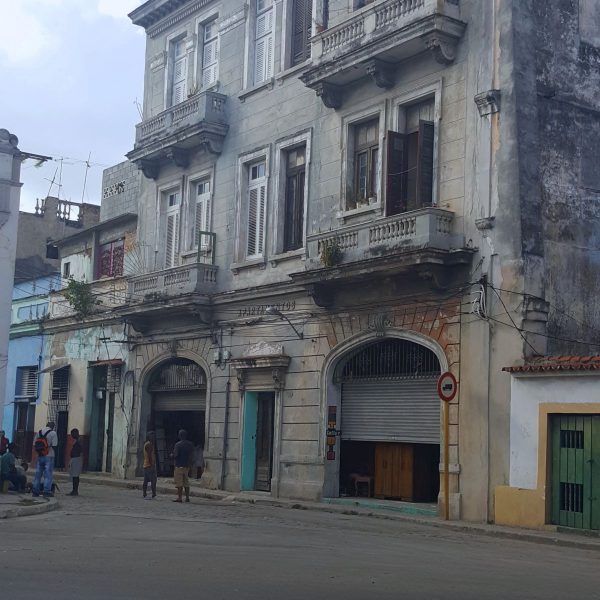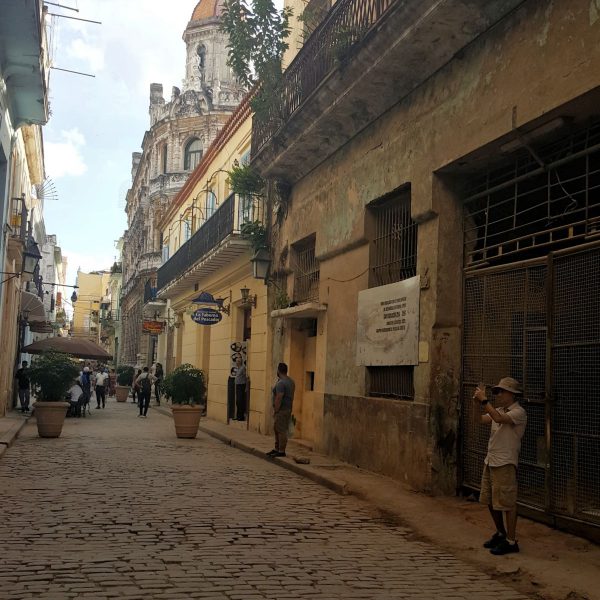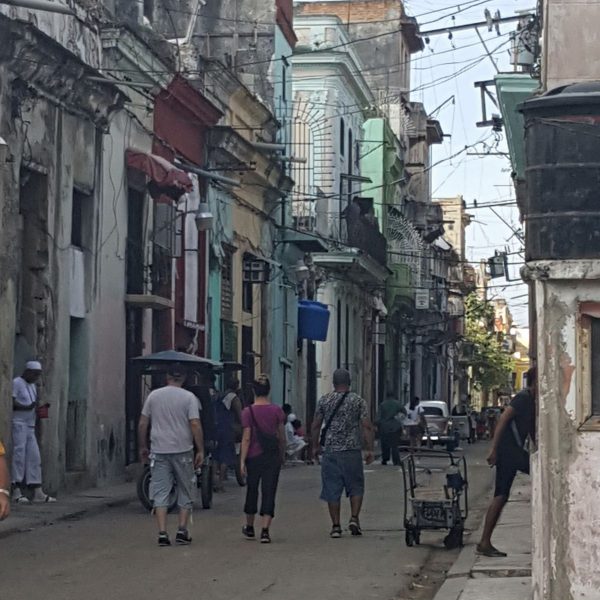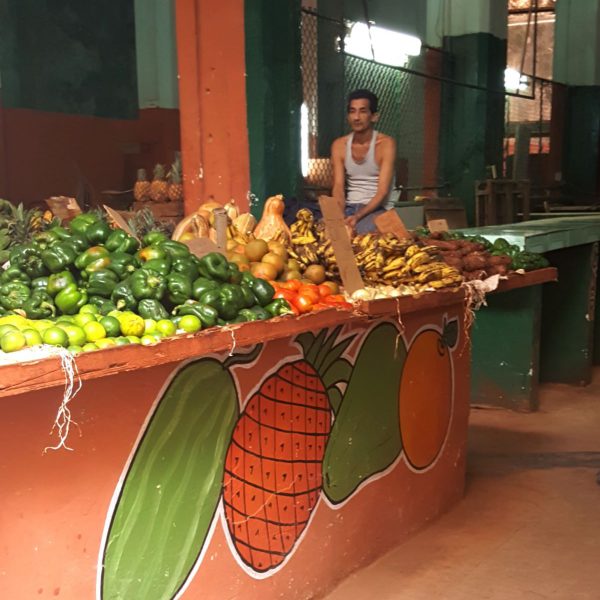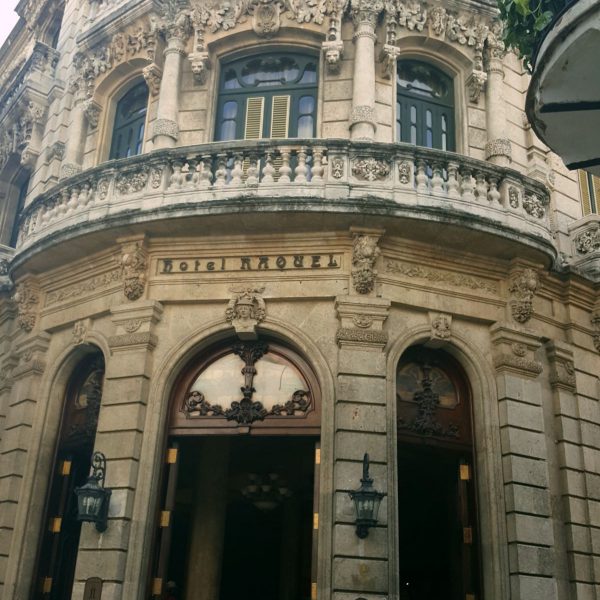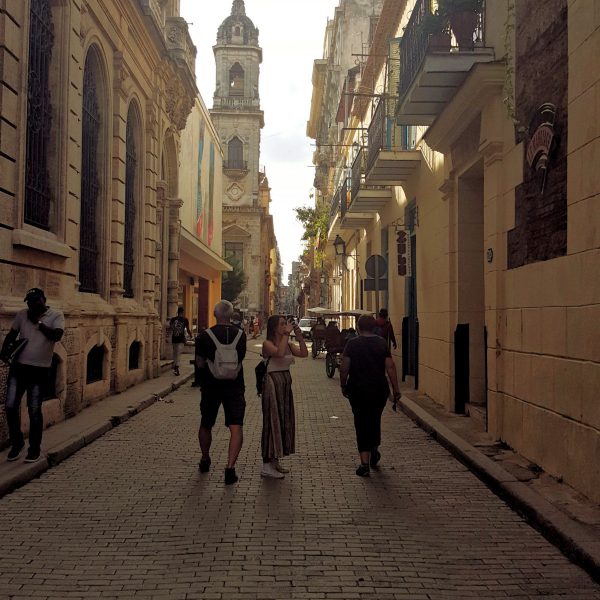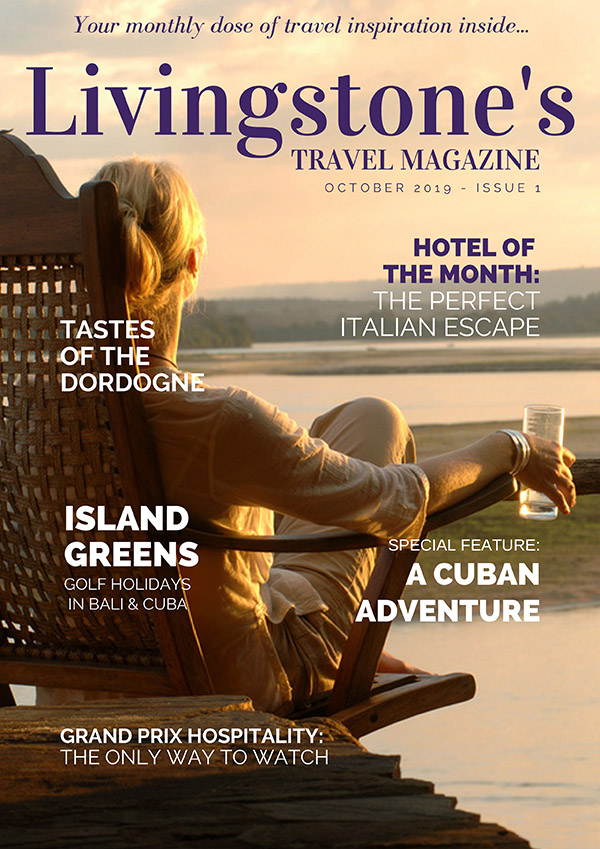A Cuban Adventure
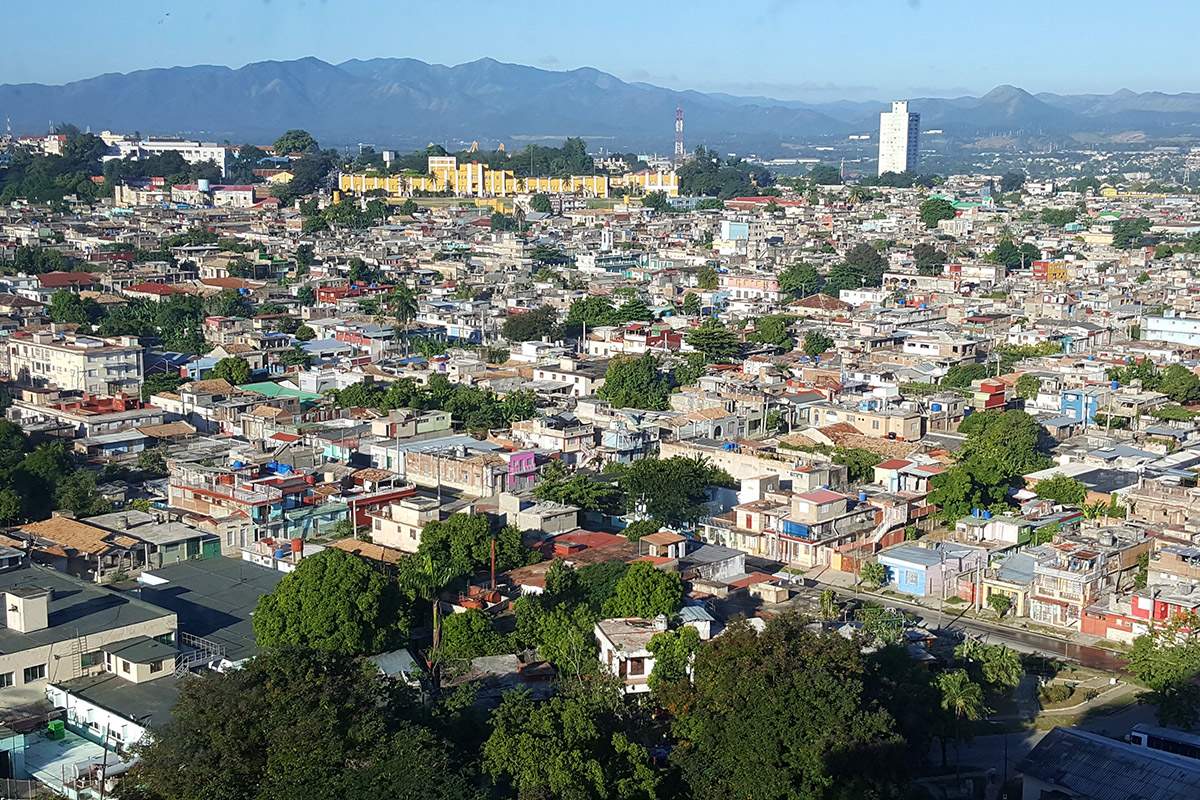
Last November, we sent a Livingstone’s Travel World client to Cuba. Those familiar with Livingstone’s will know that we don’t do things by halves, and this was no exception. Twelve days, ten regions, seven hotels and one clued-up tour guide. This adventurous husband-and-wife duo explored, discovered and marvelled at Cuba’s turbulent history, unassuming beauty, lush landscapes and magnificent architecture. Read their incredible Cuba travel story below and find out why, just like so many others, they fell completely and utterly under this captivating Caribbean island’s spell.
“What an extraordinary place to begin our Cuban adventure.”
Day 1: a late evening arrival in Havana. In a post-flight daze we began our onward journey to the hotel, and no sooner had we breathed a heavy sigh of relief in the back of our Cuban cab, were we immersed into the unique colour, chaos and sounds of lively Havana!
Our home for the first two days of our journey was the iconic Hotel Nacional de Cuba. Amazing history, incredible views over the Pacific Ocean, and a previous guest list that includes the likes of Winston Churchill, Frank Sinatra, Ava Gardner, Johnny Weismuller, Maria Félix, Jorge Negrete and Alexander Fleming. What an extraordinary place to begin our Cuban adventure.
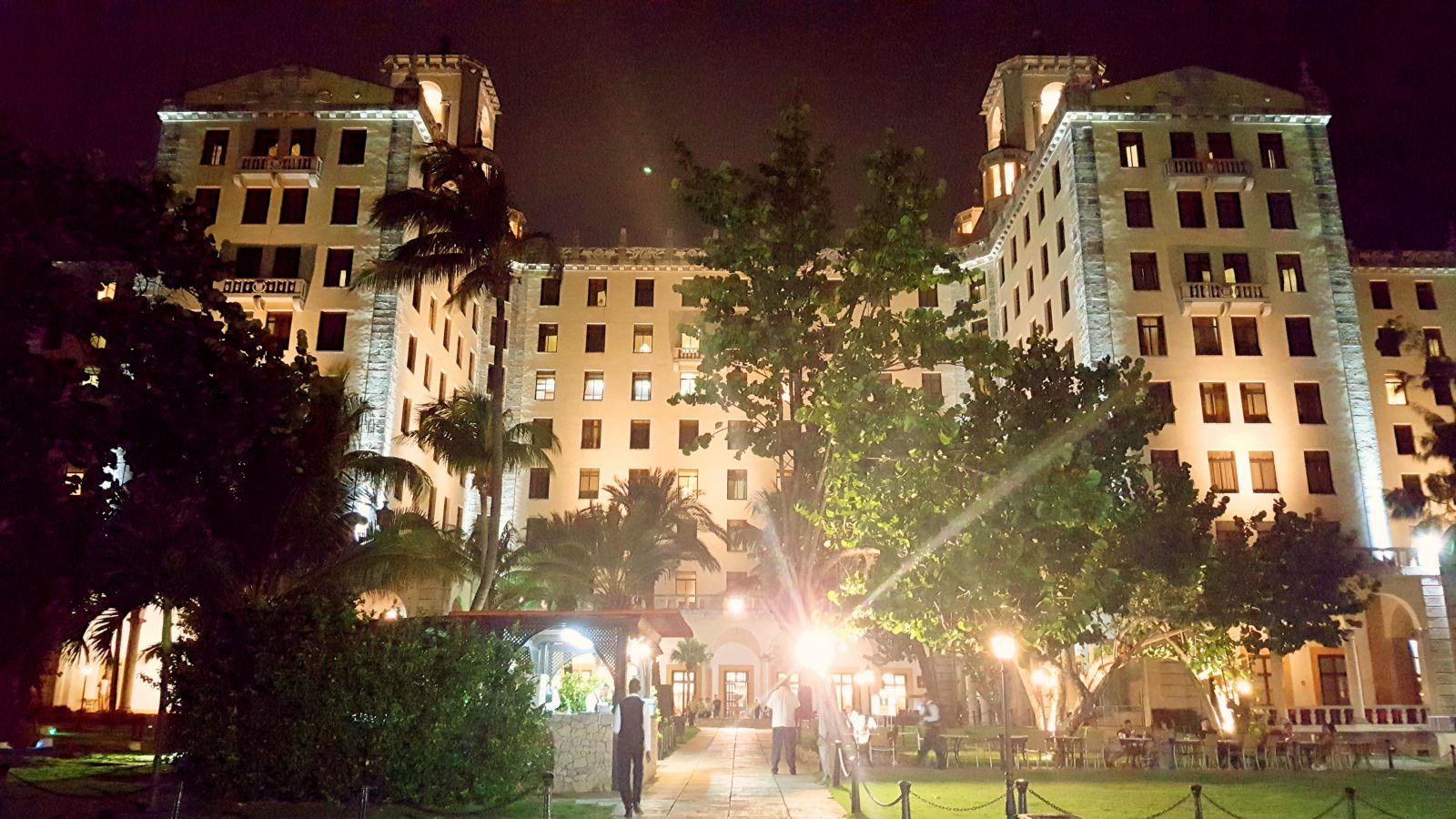
“We’re greeted by a naked lady aboard a giant rooster, only in Havana!”
Day 2: a very Havana day! We were picked up from our iconic accommodation for a tour of Havana via ‘Coco Taxi’. The quirky vehicle weaved among a sea of fabulous vintage cars, taking us past much of Havana’s beautiful architecture, including the stunning ‘El Capito’ government building.
Having passed by one beautiful building after another, we arrive at Plaza Vieja, where we’re greeted by a naked lady aboard a giant rooster (a statue of, we mean). We’ve only been here one day, long enough it seems to say ‘only in Havana!’ Among the lively lanes we also found Café Taberna, Havana’s oldest bar founded in 1772. Eating, drinking, music and history, what pure Havana!
We found music on every corner and colour at every turn, but among the cigar shops and rum bars were also reminders of Cuba’s turbulent history. Something we explored further into the afternoon…
For the second leg of our Havana tour, we swapped our Coco Taxi for a classic pink Cadillac, when in Cuba! Making our way toward Revolution Square we also passed a Cuban wedding car, these were the kind of small but heart-stealing moments we adored about Havana.
“Hasta la Victoria Siempre, until victory, always.”
Arriving at Revolution Square the atmosphere was different to that of Havana’s colourful side streets. Far more industrial than traditional, the square is surrounded by buildings much less grand than we’d become used to. But aesthetic isn’t important here, as the first thing we notice is of course the Jose Marti Memorial, a 109m-high monument built in honour of Cuba’s national hero.
Across from the soaring memorial, two imposing murals scale the walls of industrial-style buildings. They are of two men who were at the forefront of the Cuban Revolution. The first is Che Guevara, along with his famous last words “Hasta la Victoria Siempre” (until victory, always). The other, Camilo Cienfuegos with his encouraging words to the revolutionary leader, “Van Bien, Fidel” (you’re doing fine, Fidel).
At times like this we were so thankful for our passionate and knowledgeable guide; to understand this fascinating country and its history enhances the experience no end.
Day 3: Vinales Valley, The Tobacco Route. After the drive from Havana out to the Vinales Valley on the east side of Cuba, our first stop was for a boat trip through the Indian Cave, where ancient carved images adorn the cave walls. Of course, we were unable to capture the intricate details on camera, so you’ll have to go and see for yourselves!
“We reaped the rewards of incredible green panoramas.”
From here, we explored Vinales Valley on foot and found ourselves dwarfed by the mogotes (limestone cliffs) that rise from the valley floor. Then, after an adventurous morning, we stopped for a fantastic lunch at a private paladar, Alberto Vitamina, with breath-taking views across Cuba’s countryside.
After lunch, we paid a visit to a tobacco farm, where we were educated on the different steps of the tobacco farming process; from the huge drying houses where tobacco leaves are stored to a demonstration on how to hand-roll a cigar!
We then had the rest of the afternoon to explore Vinales at our leisure. And we certainly made the most of it. We ventured into the time-warped town before making our way up to a viewpoint above the valley, where we reaped the rewards of incredible green panoramas.
Alongside the valley viewpoint is Hotel Mirador Los Jazmines. A beautiful piece of architecture set within lush Cuban countryside. It offers stunning views across the valley, particularly at dawn and dusk (according to its residents). Our final stop in the Vinales Valley was the Prehistoric Wall, a huge artwork painted on the face of a rock by Cuban painter Gonzalez Morillo. The 1960’s painting depicts the evolutionary process.
Day 4: time to say goodbye to Havana and continue our journey on to Cienfuegos. Leaving behind the fabulous Hotel Nacional and its stunning ocean views, we headed out of Havana, hearts heavy, only to be greeted by even more beautiful architecture (and some that needed a little work!)
We arrived in Cienfuegos in time for an early lunch at the Villa Lagarto, with its relaxing (not to mention stunning) waterfront setting. And, once refreshed by a Cuban lunch and the ocean air, we were ready to start the Cienfuegos segment of our journey through Cuba.
“We fell in love with the streets of Cuba over and over again.”
We started with a visit to the beautiful Palacio de Valle, an architectural marvel to say the least. The unique combination of Gothic, Romanesque, Baroque, Italianate and Spanish-Moorish influence makes it a sight to behold, enhanced by an oh-so Cuban setting of sauntering palms and a blue ocean backdrop.
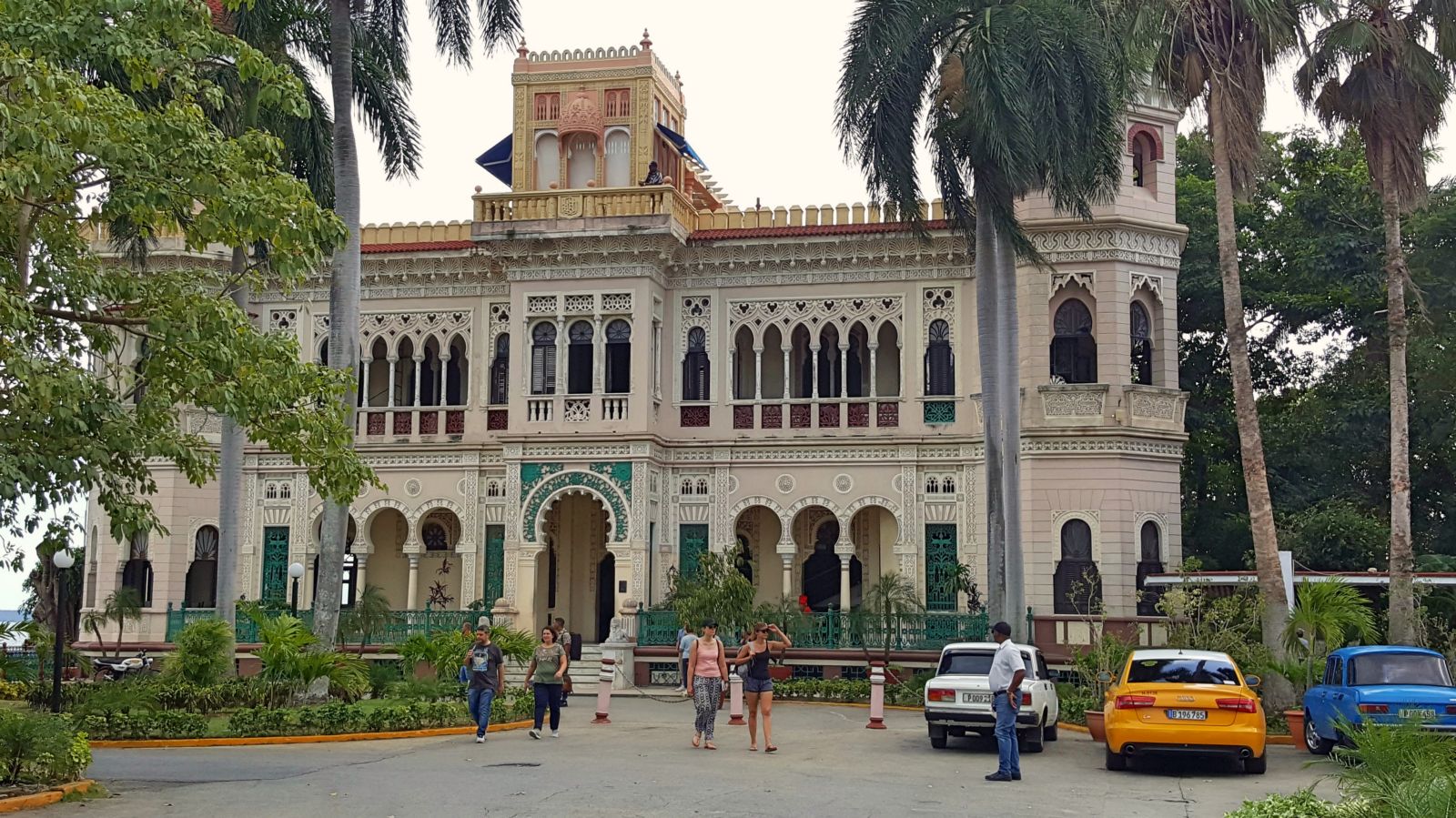
Inside, a grand interior does justice to the magnificent façade, with intricate details worked into every room and corner; mosaic flooring, ornate stucco walls and ceilings, stained glass arches, Romanesque columns and marble staircases. Simply looking around this beautiful building costs nothing, and whether architecture is your thing or not, we’re putting this down as a must-see in Cuba!
Ever a place of juxtaposition, alongside the Palacio de Valle is the contrasting Hotel Jagua, a 1950’s building allegedly funded by money from the Mob. Nearby, there are two more buildings with beautiful blue façades: the Palacio Azul Hotel and the Customs building, still in use today!
Yet another impressive building in this neo-classically decorated corner of Cienfuegos, is the Tomas Terry Theatre (below). Even mid-restoration the beauty of the historic building, funded by a former sugar factory owner-come-Mayor of Cienfuegos, shone through. It will be undoubtedly stunning once finished; an outstanding tribute to its visionary funder, and the son who fulfilled his promise.
On the opposite side of the central square in Cienfuegos, the Parque de Marti, stands the stunning Antiguo Ayuntamiento building, home to the provincial government assembly. Its elegant grey and white façade is set off by an impressive terracotta dome, a mark of distinction against the other beautiful buildings that surround it.
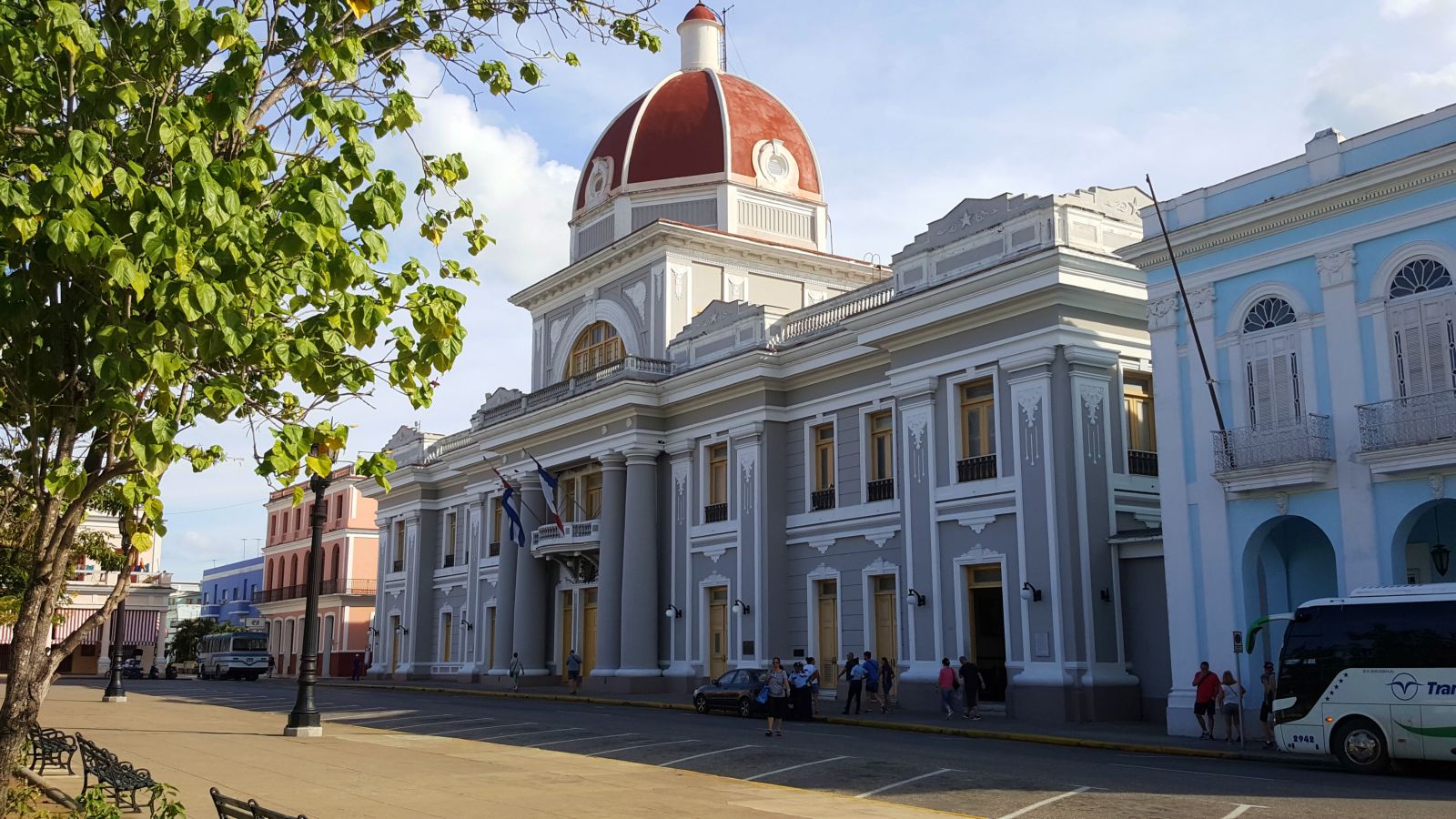
It is truly amazing how much brilliant architecture there is in Cienfuegos (not to mention every corner of urban Cuba). Even away from the central square, where many buildings are sadly falling into despair, so many retain such grandeur and charm that we fell in love with the streets of Cuba over and over again.
At dusk, we stopped by Cienfuegos harbour, the perfect place to relax and reflect on a busy day. Upon retiring to our hotel room at the Melia San Carlos, we were pleased to find that we could continue admiring the harbour views from our window, beyond the rooftops of Cienfuegos…
Not forgetting the fantastic bar/restaurant and its delicious Cuban mojitos! Not a drop left…
Day 5: an early start for our journey to Trinidad, the main hub of Cuba’s sugar production. We decided to give this roadside café a miss…
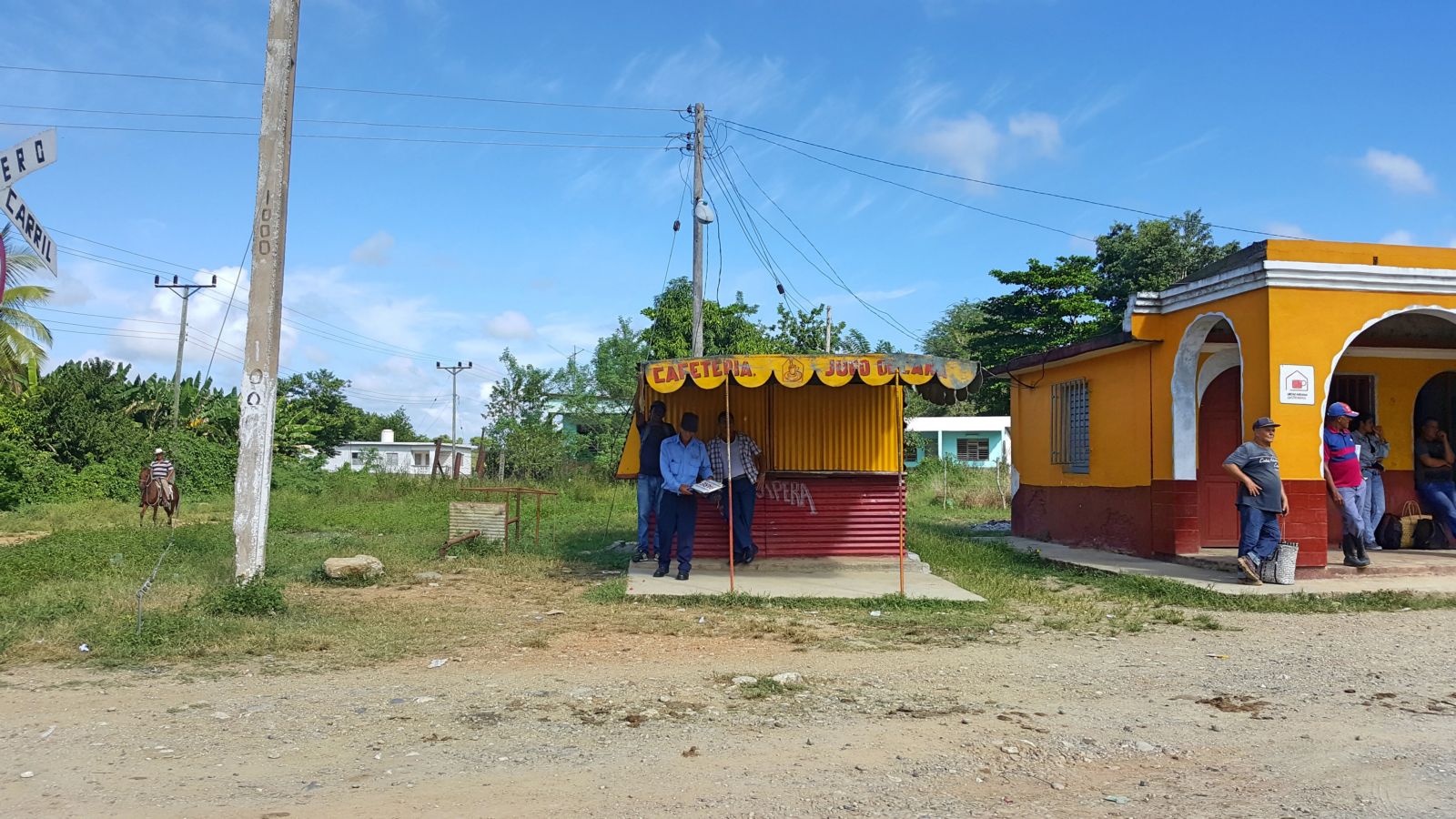
Instead, our first stop today was at a former sugar plantation owner’s house. The house itself is now in need of some restoration, though it’s easy to envisage how grand it must have been in its heyday. Inside, remnants of carved ceilings, highly decorated walls and chandeliers remain. Though beautiful, there is something eerie about the way this house has stood still in time, particularly when confronted with a stark reminder of the fate for slaves that stepped out of line.
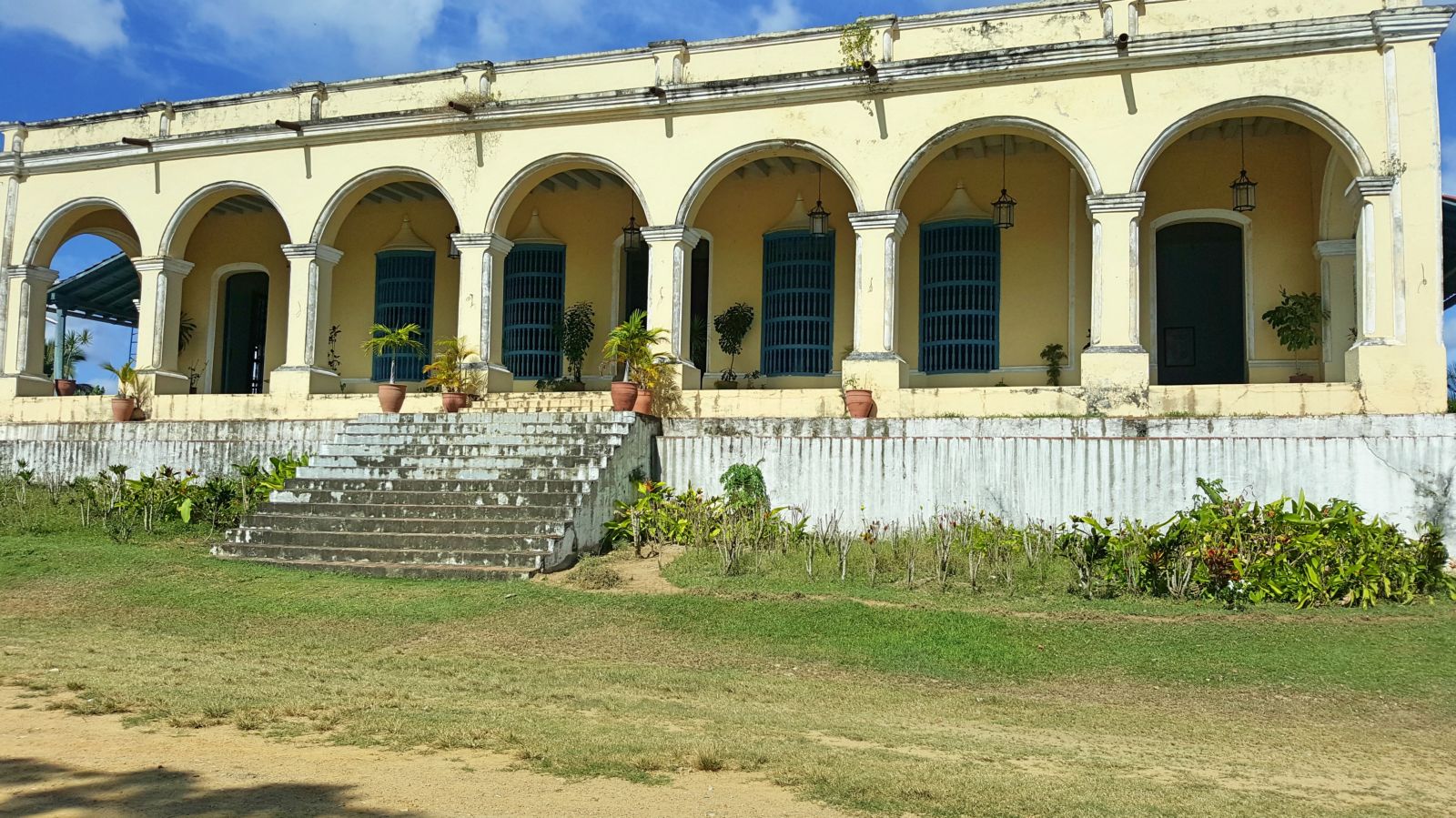
Among other survived elements are a bell, which would have been rung to mark the start and end of a day’s work, and a press which would have been driven by cattle or slaves to extract the juice from the sugar cane. A tower, which was once used to watch over the workers, now offers spectacular views across the valley. It’s a stiff climb (especially in the heat!) but worth the effort.
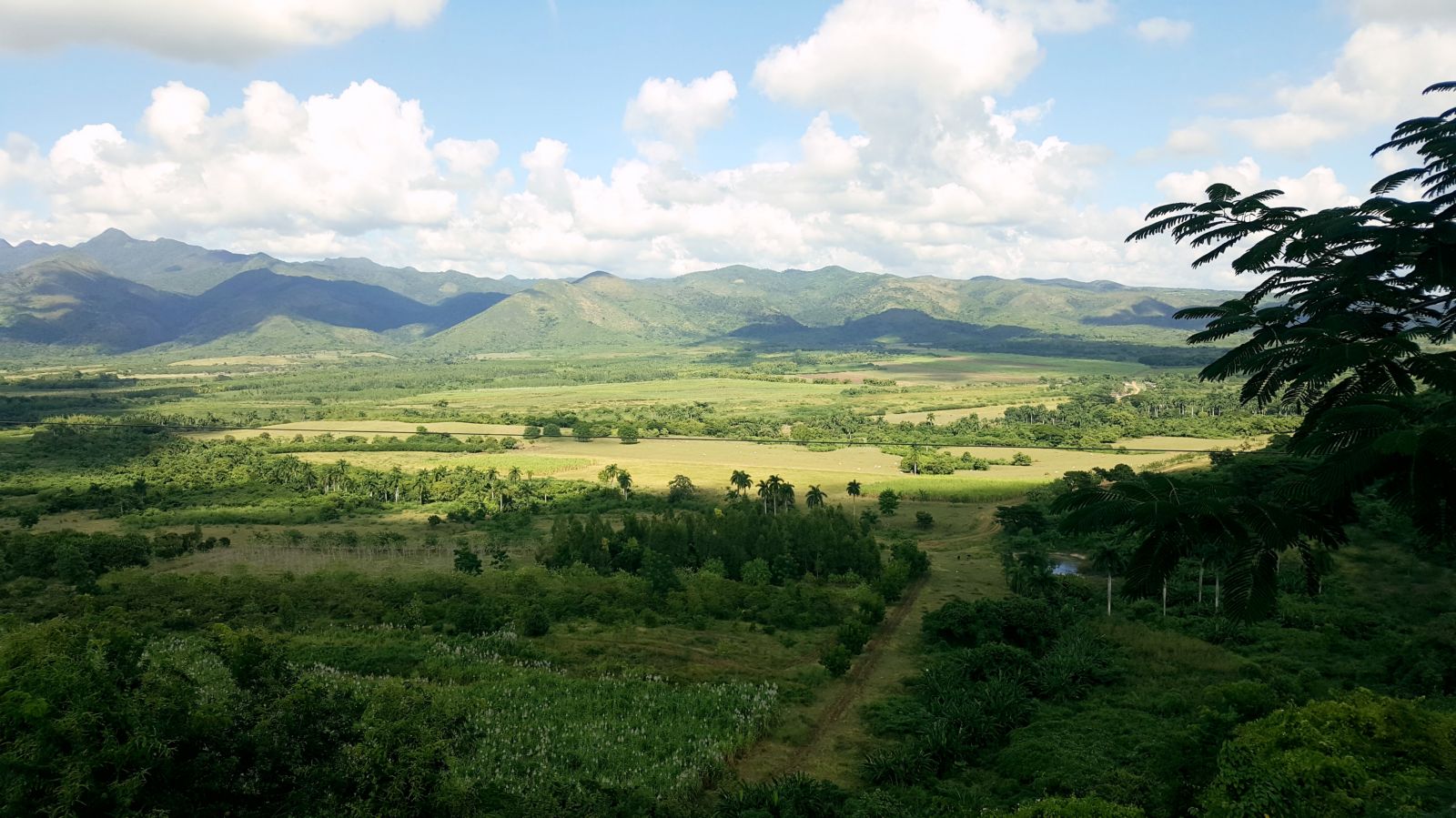
After a short drive from the plantations, we arrive in Trinidad town. As in many towns outside Havana, horses are still regularly used for transportation and work. Perhaps because Cuba’s old-timer cars have their work cut out on Trinidad’s cobbled streets!
“What a small yet incredibly significant piece of history to come by.”
One of the first pieces of architectural history we came across here was Real Carcel, a former 19th century prison located on the outskirts of town on Plaza Santa Ana. It’s still in use today, but now as a restaurant and tourist shop!
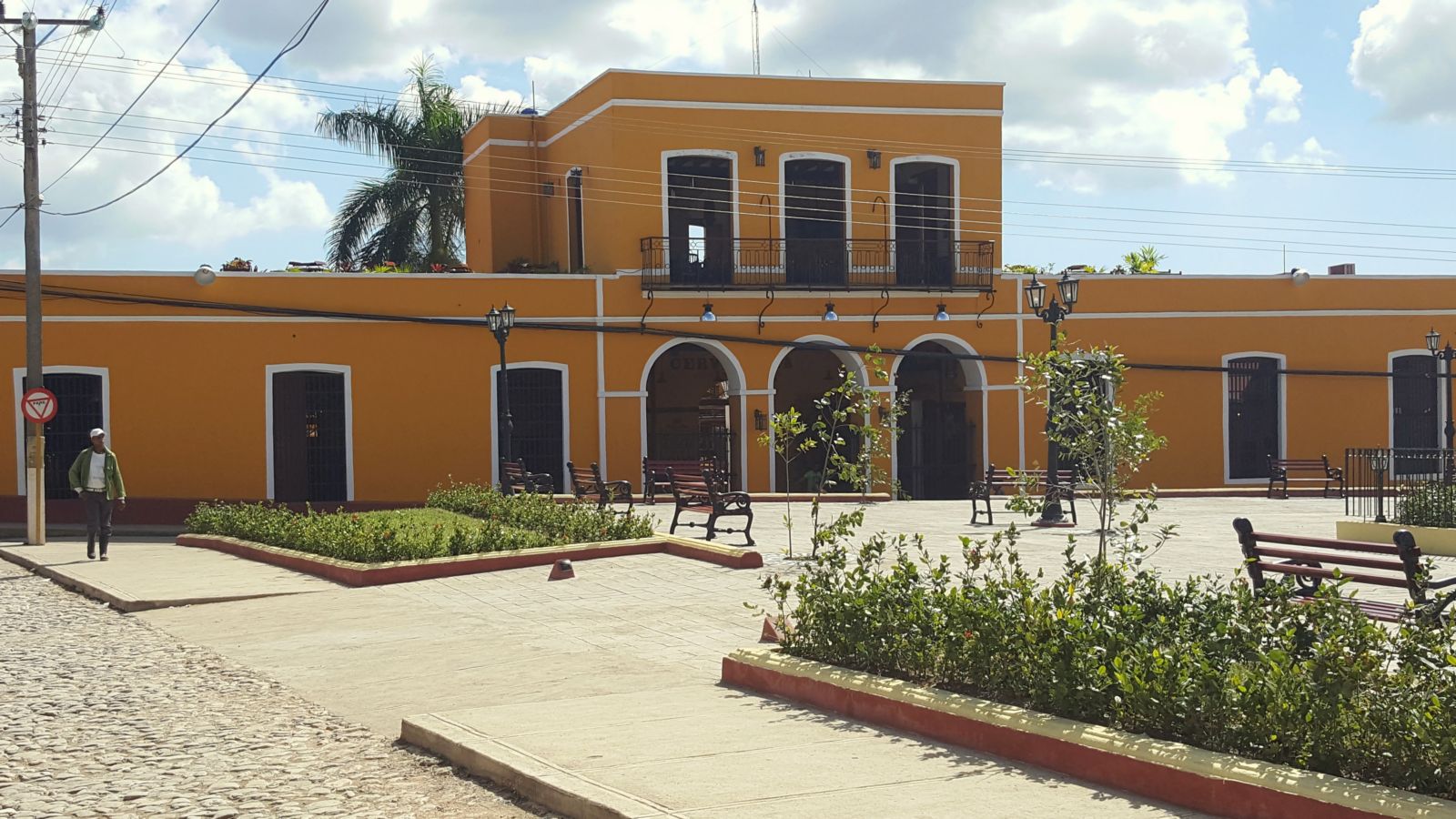
We take some time for lunch before heading out for a tour of Trinidad town. Lunch today was at the private restaurant ‘Guitarra Mia’, a unique guitar-themed restaurant where they really make the food a work of art…
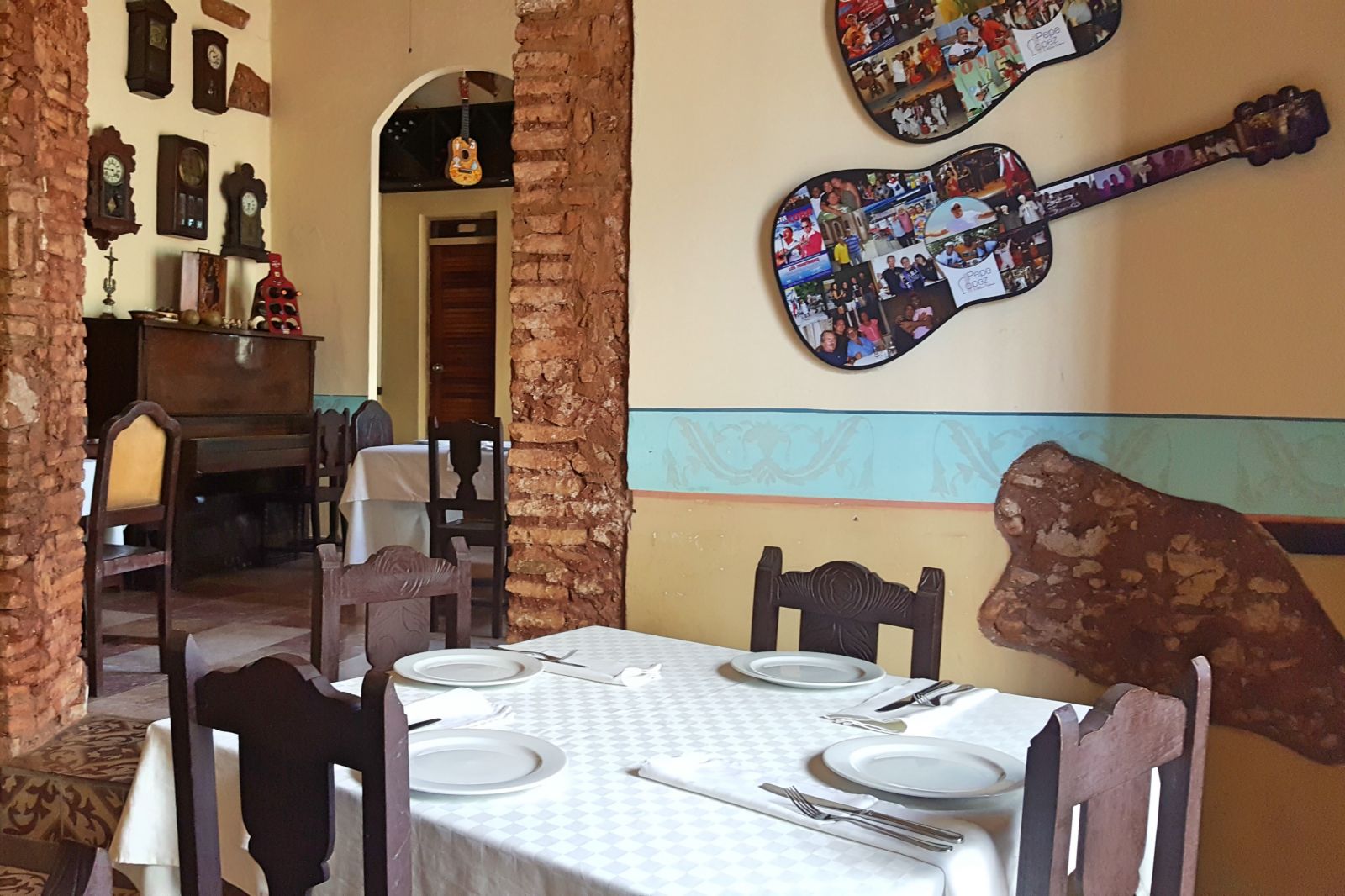
Despite its largely cobblestone streets, Trinidad town is definitely best explored on foot. The town centre is a delight, a real throwback to its past, with beautiful squares surrounded by some of the finest colonial architecture you will see in the world.
We started our tour of the town from Plaza Mayor. This pretty square, with its well cared-for gardens, lovely seating areas and soaring palms, is surrounded by a stunning collection of colonial buildings. In one corner stands the cathedral, rebuilt in the late 1800’s after the church, which originally stood on this site, was destroyed by a hurricane.
The amount of history built into this town is quite phenomenal. A beautiful single-story sky-blue building, formerly a family home, now houses the Museo de Arquitectura Colonial on the eastern side of the Plaza Mayor. Then there’s La Conspiradores; now a quaint and cosy restaurant with balcony views over the Plaza Mayor, it was so named as an alleged former meeting place for Cuban nationalist revolutionaries. What a small yet incredibly significant piece of history to come by.
Just off the Plaza Mayor is Casa Cantero, now home to Trinidad’s main museum, Museo Historico Municipal. The building itself has a chequered past; the former owner, a German planter named Cantero (after whom the building is named), allegedly gained his wealth through killing an old slave trader and marrying his widow, who also ended up dead in suspicious circumstances! The museum as it stands today is well worth a look, and the views from the top across the town are remarkable.
Elsewhere, a yellow bell tower emerges from the colonial rooftops of Trinidad town, that of the Convento de San Francisco de Asis. This former convent is now a small museum to memorialise the revolution and the war against the ‘bandits’. Yet another small but significant piece of history nestled within Trinidad’s cobblestone streets.
Off the main town tourist areas, some parts of Trinidad are less salubrious…
…but back in the main town the buildings continue to impress. This is the beautiful Iberostar Grand Hotel, a stunning building inside and out. It’s a great choice of accommodation if you’re after true luxury that also replicates Cuban tradition, although we chose somewhere different altogether, more on that tomorrow!
“Pure bliss!”
The Iberostar hotel stands on another square that has a slightly more modern feel. Although the building’s exterior has been considerately kept in line with Cuba’s timeless aesthetic, surrounding elements such as Wi-Fi hotspots and tourist shops are a giveaway to the fact that this particular area is slowly becoming more modernised.
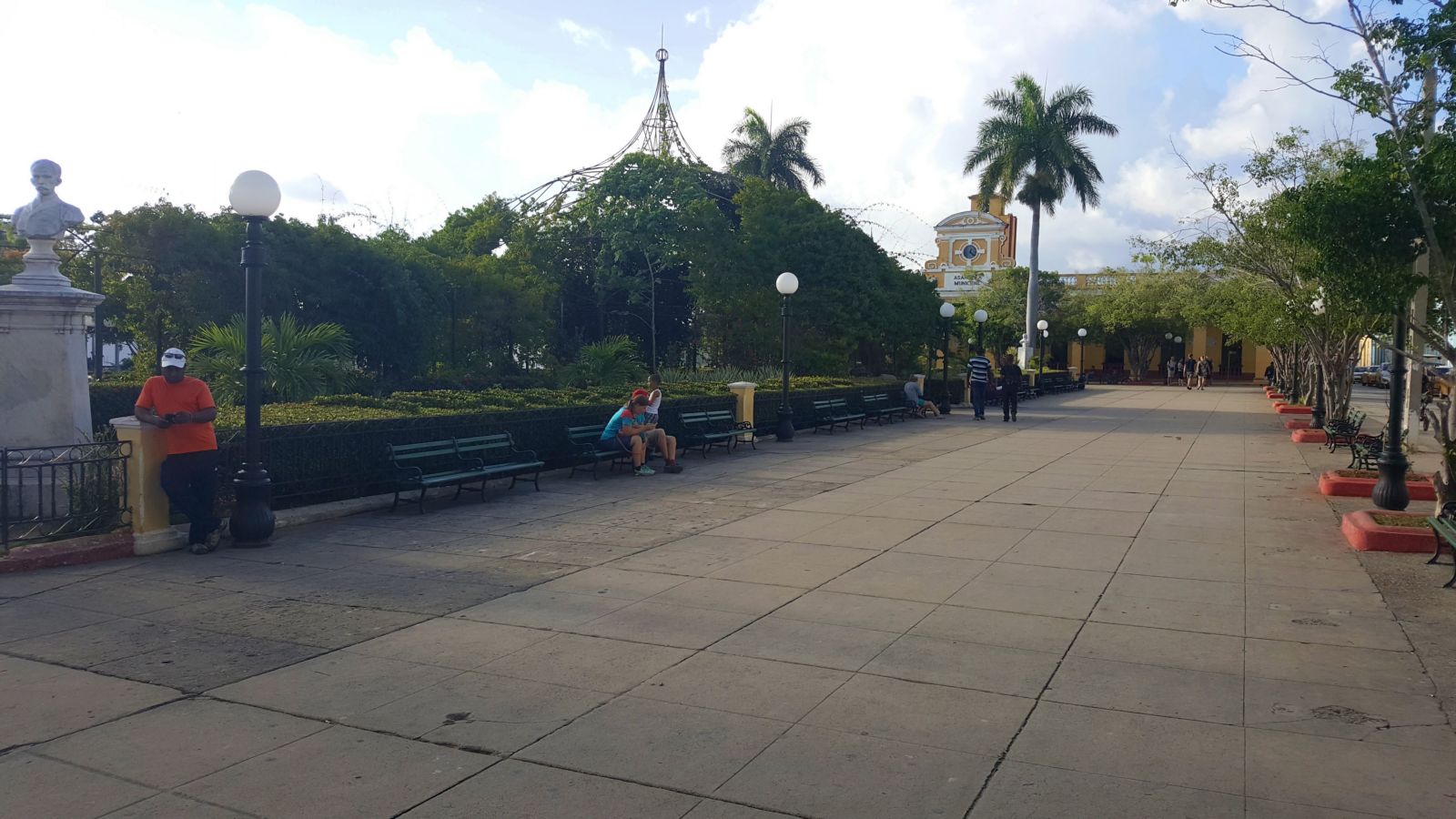
That’s enough about architecture for one day, as there’s no way I can let Trinidad’s beach go without a mention, just look at that glorious golden sand! After a busy day exploring we were lucky enough to catch some late afternoon sun and take a swim in the Caribbean Sea, before watching the sun go down with a cool Mojito. Pure bliss!
Day 6: Trinidad day 2 and Topes de Collantes. Our trip to Trinidad was made all the more special by the choice of accommodation. We decided to swap out luxury to add a touch of authenticity to our trip. And tucked away from the tourist centre of Trinidad, was an absolutely gem of a hotel that allowed us a bit of both.
Privately owned La Casona was a delight. With just a few large rooms set alongside gardens and a working stable block, we really felt part of local life. What’s more, the food served in the outside dining area was fantastic, and the staff were incredibly friendly and helpful.
Not to mention that the building and grounds were beautiful…
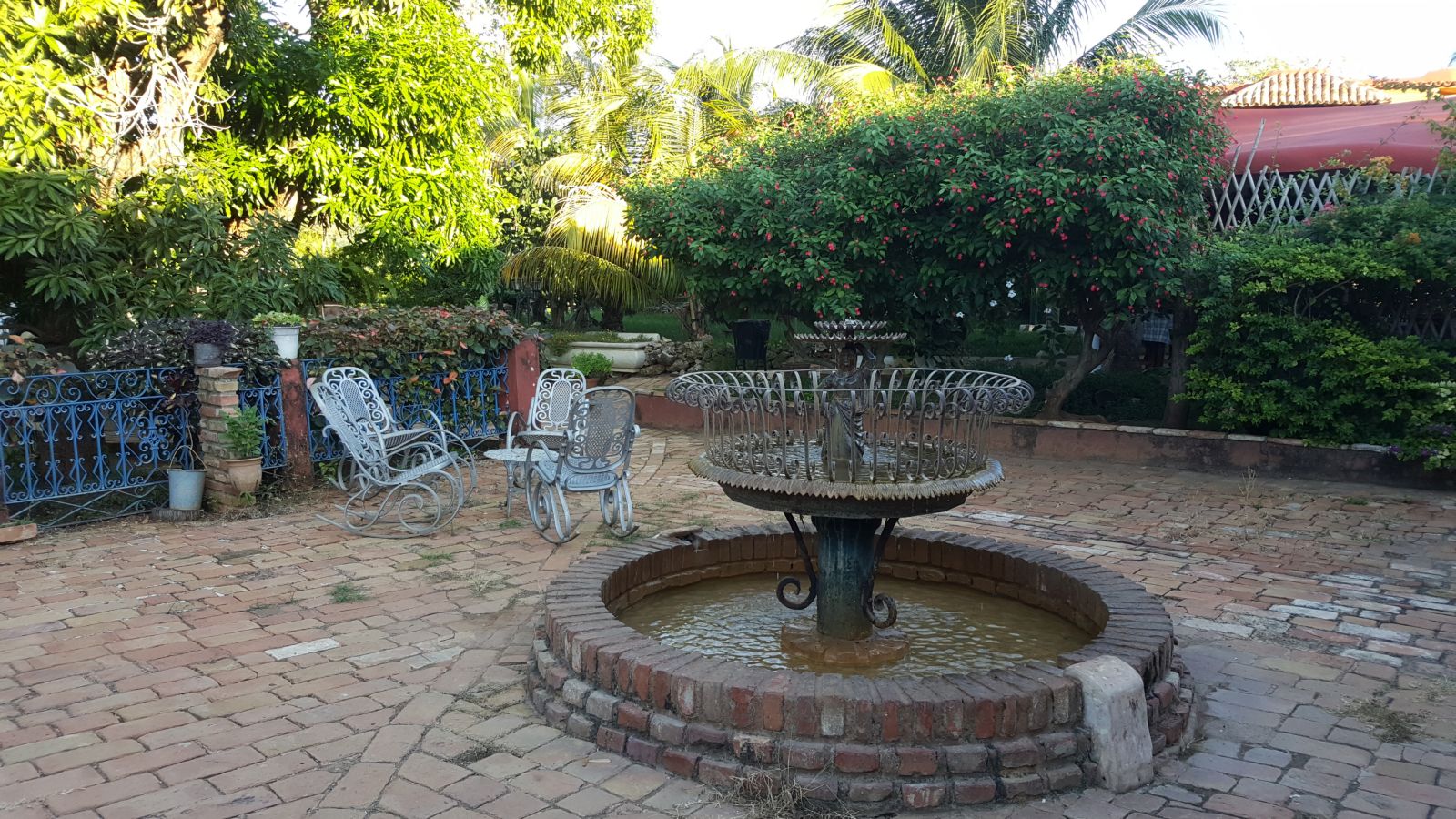
… and the en-suite bathroom had an open-top roof! All-in-all La Casona was a stunning retreat and a real unexpected delight of our trip.
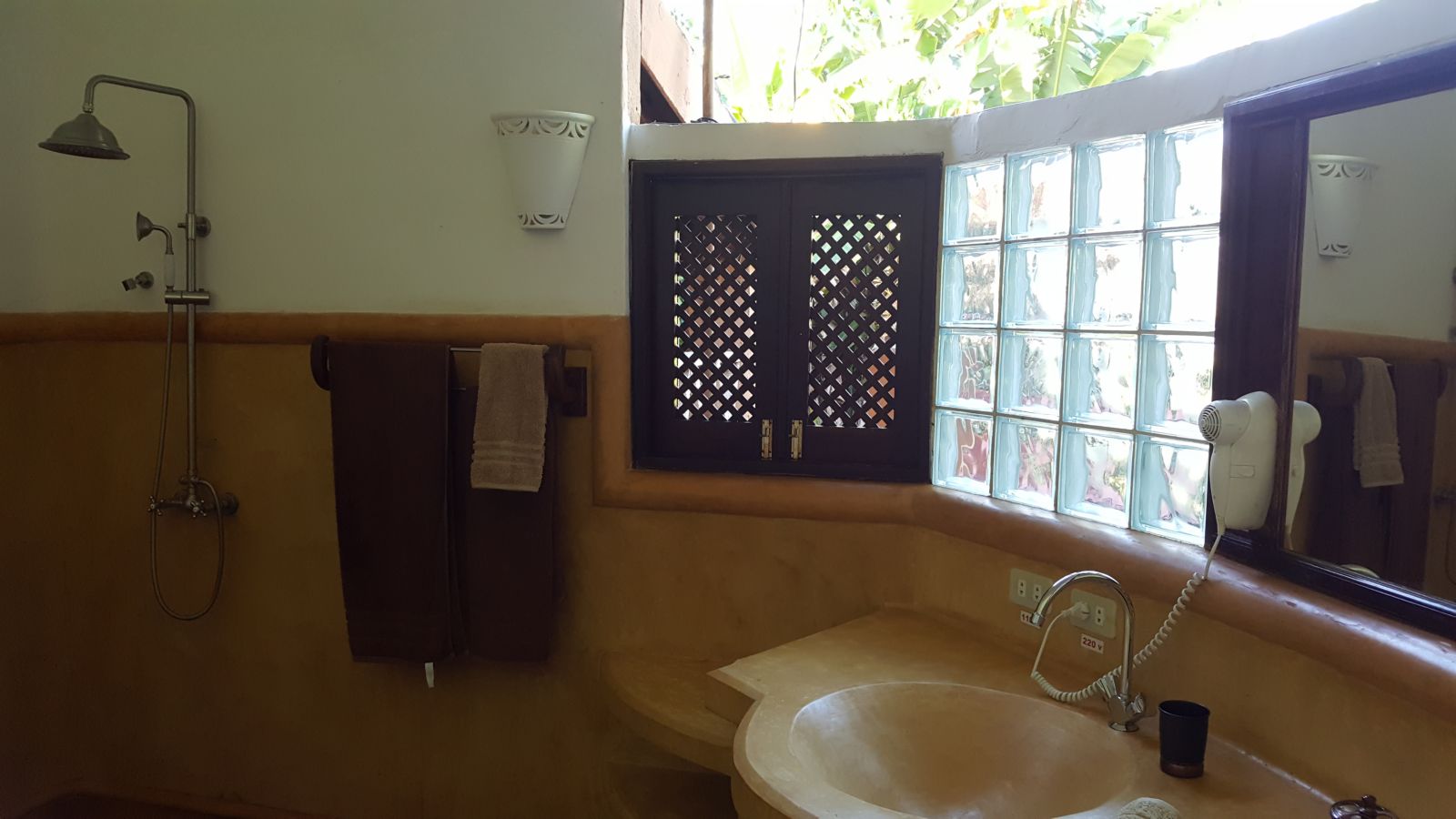
Our second day in the Trinidad region was spent on an excursion into the Topes de Collantes nature reserve park in the Escambrey mountains. About a 40-minute drive from La Casona, our first stop was at the viewpoint looking back down towards Trinidad. The views were simply breath-taking.
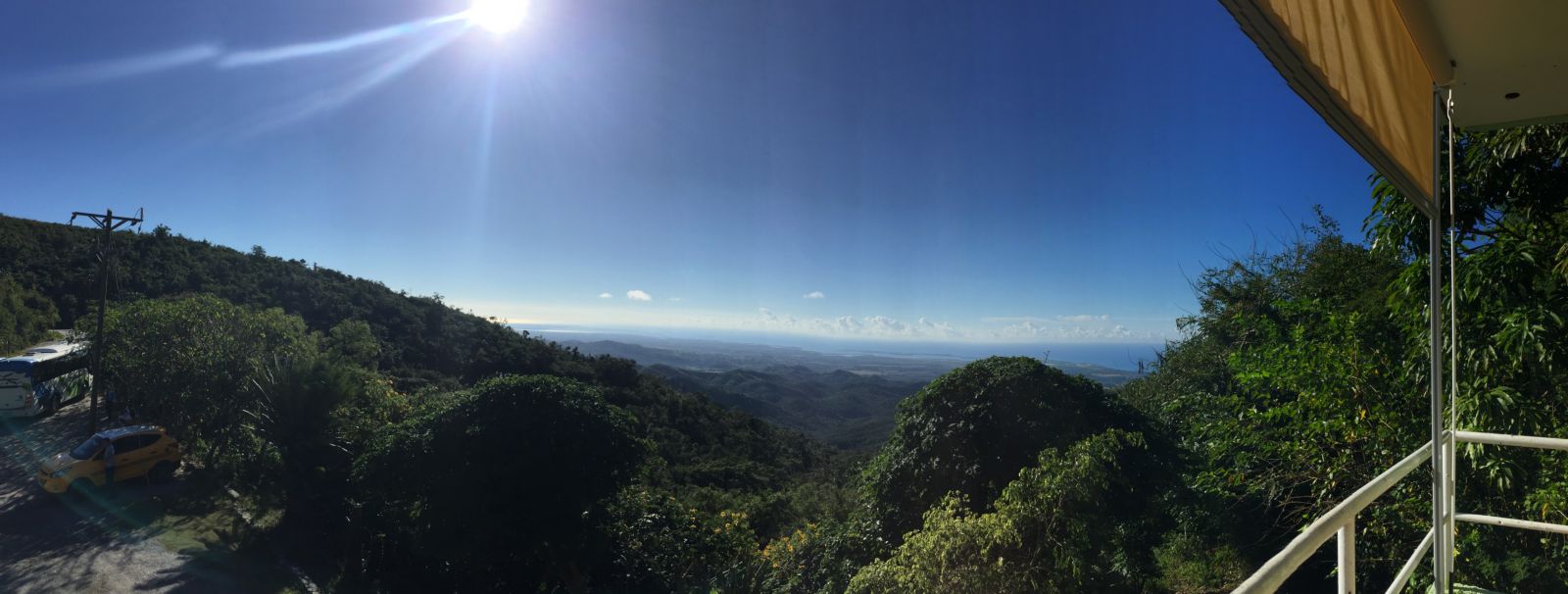
“Definitely not for the faint-hearted!”
Back in the jeep for the drive down into the central valley, we reached the starting point for our trek along the Guayanara trails. Starting with a gentle walk through a coffee plantation, the terrain got somewhat steeper as we approached the valley floor. But the effort was well worth it!
The river widens into crystal clear pools…
…before you reach the stunning waterfall, and finally, the natural pool where you can take a relaxing swim! Paradise!
The way out is to retrace your steps along the valley and up out through the coffee plantation. Returning to the jeep, it was time for a quick stop for coffee at a local residence where they roast their own beans. The speciality is a coffee laced with Cuban rum (or Vitamin R, as our guide called it!) and coffee grounds on the lip of the cup. Definitely not for the faint-hearted!
A late lunch followed, before returning to the fabulous La Casona, with some time to stroll through the pretty gardens…
…before a late afternoon snooze in the hammock on our terrace!
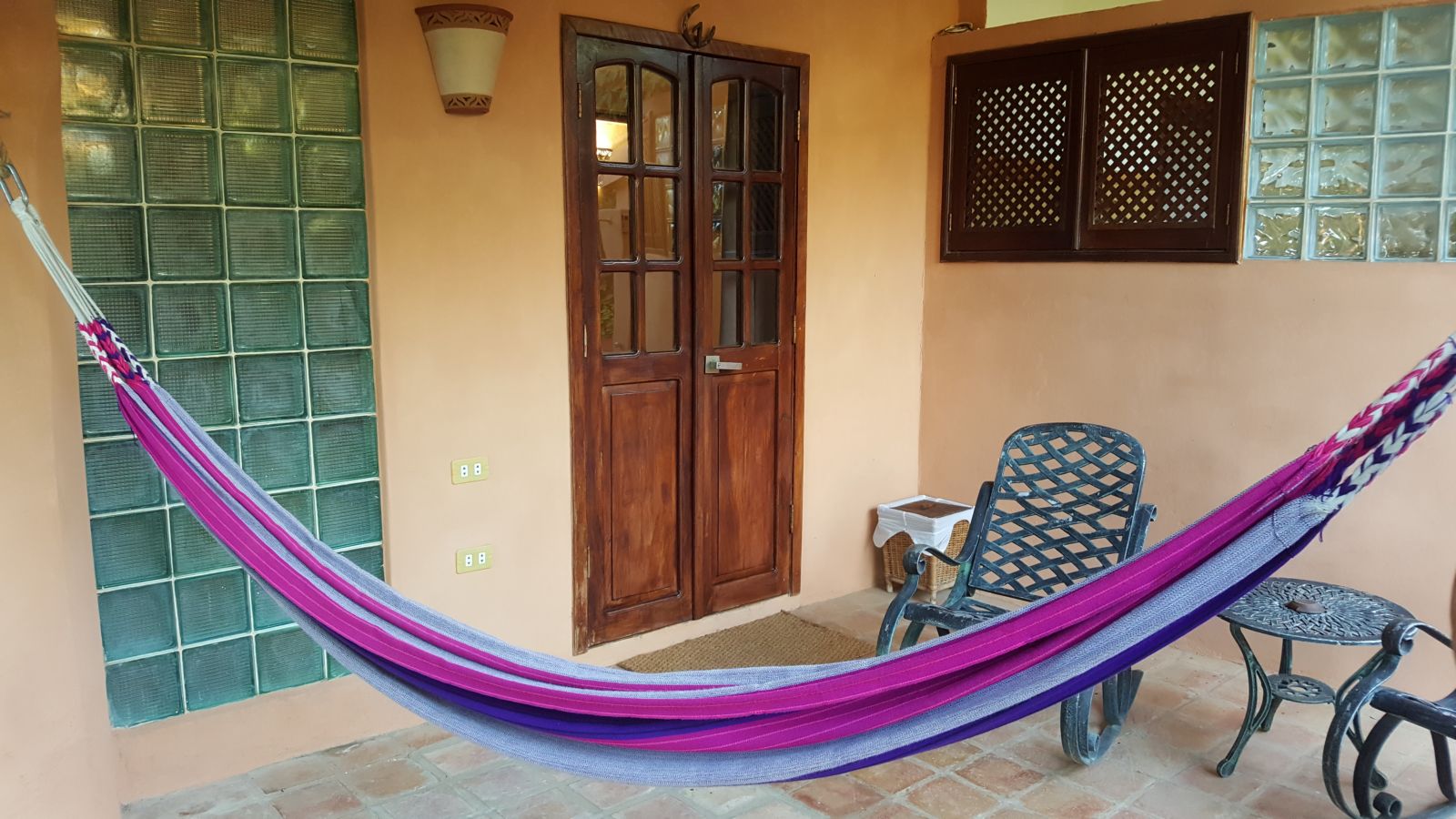
Day 7, Camaguey via cycle taxi: Our next stop was Camaguey, Cuba’s third largest city. Yet another fascinating and beautiful Cuban city. Although, a little more spread out and hence slightly more difficult to explore fully on foot. A good opportunity to try out the local cycle taxi’s, which we did!
“No matter how many beautiful buildings you’re confronted with in Cuba, complacency is impossible”
The first stop on our cycle taxi ride was one of Camaguey’s many beautiful Plaza’s, Plaza de los Trabajadores. No matter how many beautiful buildings you’re confronted with in Cuba, complacency is impossible when they look like this…
Below (left) is the beautiful Santa Cecilia convention centre and theatre building, its magnificent shade of blue accentuated by its neighbours more understated accents. A former radio station (centre) reflects yet more art deco influence, together with another reminder of Cuba’s revolutionary past. Is there such thing as an architectural cocktail?
On the same plaza (note, this is only the first of five in Camaguey) is the beautiful Iglesia Nuestra Señora De La Merced, one of Cuba’s finest colonial churches and still used today as a convent. Suitably seduced, we continue on the cycle taxi, making a quick stop at Teatro Principal. Dating back to 1850, this stand-out building is still in regular use, and is home to the renowned Camaguey Ballet Company. Worth a stop, indeed!
We re-commence our cycle taxi journey, taking in some unique sights along the way. Our guide pointed out Camaguey’s shortest (and narrowest) street, and educated us on the region’s renowned pottery; principally its large clay pots, which were originally used to transport water. The statue below reflects how water would have once been transported around the city, and walking past it leads you on to Plaza de Carmen. Another square home to yet another stunning church, Iglesia de Nuestra Señora del Carmen.
After much walking we stopped for a late lunch at Paladar 1800, with lovely food and a great Cuban atmosphere.
Then, after our much-needed rest and refuel, we were ready to head on to Plaza del Cristo. Less attractive than some others by comparison, with a number of buildings in need of restoration, but seemingly popular among the locals and still with plenty of interesting history to offer.
At the far end is the church Santo Cristo del Buen Viaje, the plaza’s (unofficial) showpiece and unique in Cuba, in that it is the only church to retain a cemetery in its grounds. Hidden among a somewhat less ‘grand’ row of buildings is the House of Cultural Diversity, Camaguey. The beautiful building, with its (scarcely deteriorated) intricate façade is a former private mansion. Once owned, in 1930, by a landowner and his wife. Today, it belongs to the Office of the City Historian of Camaguey, and is a museum housing important heritage gems.
Located in Ignacio Agramonte Park is the Our Lady of Candelaria Cathedral, dedicated to the patron saint of the city (below, left). And, nestled at a junction of Camaguey’s main streets, is Iglesia de Nuestra Senora de la Soledad (below, right). This unique church, with its cream and terracotta exterior, is just a stones-throw from the Gran Hotel, our stop for the night. The church was renovated around 12 years ago, although the original structure dates back to 1779. Inside are some interesting frescoes and the building itself has some intriguing folklore around its history.
After an early evening stroll around Camaguey’s main streets, we checked in for our overnight stay at the Gran Hotel, another attractive hotel with an interesting history, and a few notorious guests!
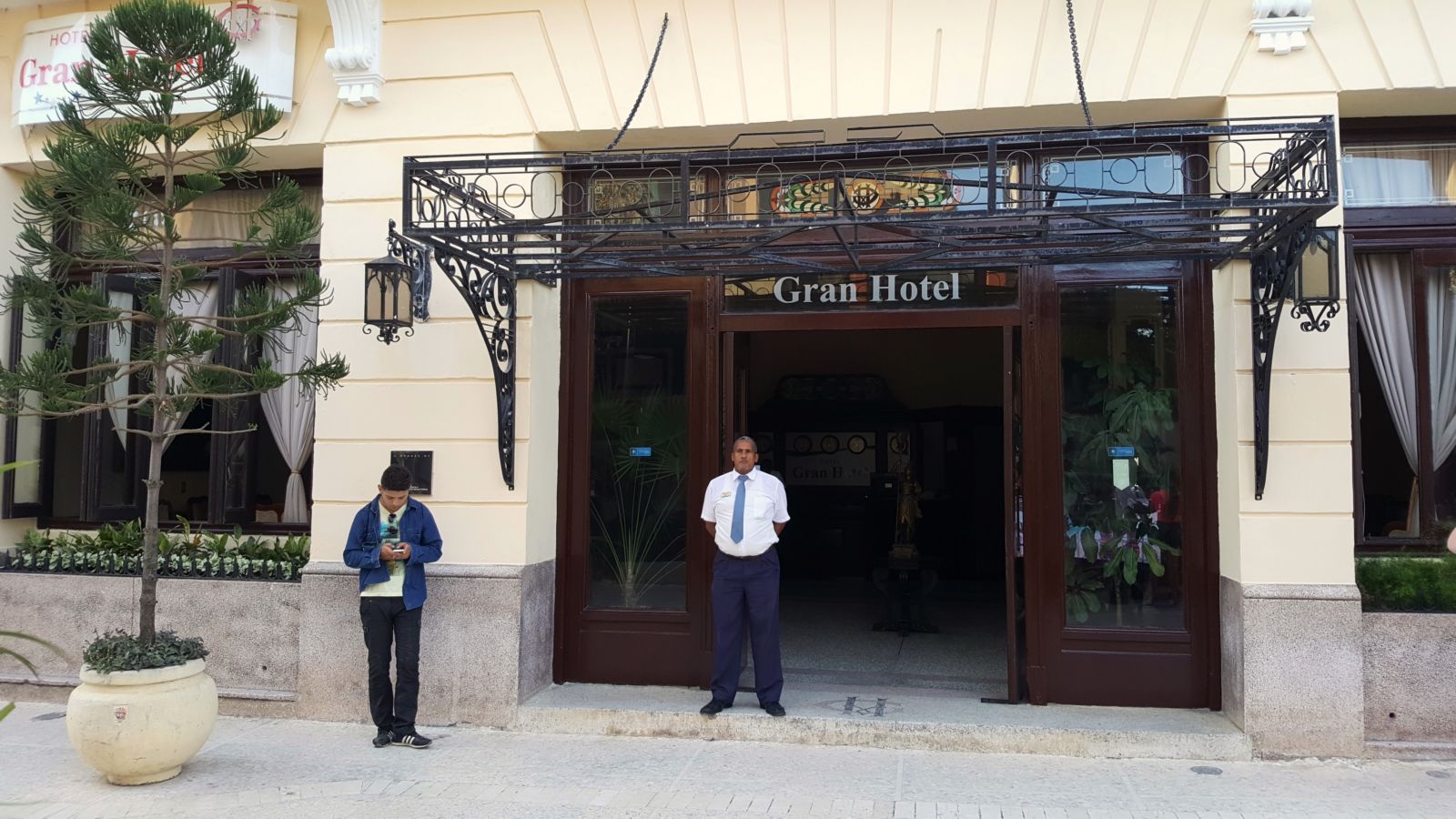
Day 8: An early start today for the lengthy trip from Camaguey to Santiago De Cuba (the second city of Cuba), via Bayamo. Along the way we passed roadside reminders of Cuba’s revolutionary heroes, as well as numerous horse-and-carts, a common means of transport for many Cubans.
And after a reasonable stint of the drive we arrived in Bayamo, for an opportunity to stretch our legs and explore. As elsewhere, Bayamo has its own ‘Revolution Square’. However, car-free streets make this square more peaceful than many others in Cuba, and there are numerous significant historical references.
This monument (below) celebrates Bayamo-born Perucho Figueredo, who wrote the words to the Cuban national anthem. As well as a musician, Figueredo was also a freedom fighter, involved in campaigns against the Spanish. He was captured during the Ten Years War uprising and was executed in 1870. The monument carries the lyrics of the Cuban national anthem.
And the below monument is to Carlos Manuel de Céspedes, hero of the First War of Independence. The bronze plaques around the base refer to some of his most famous battles.
Lunch today was at the elegant Hotel Royalton, also located in the Plaza de la Revolution.
After lunch, we had the opportunity to explore even more of Bayamo, and it didn’t disappoint! It’s fascinating how different one town is to the next in Cuba, despite some undeniable similarities.
We soon realised that ice cream parlours are probably the closest thing to a western style food outlet, no Starbucks or McDonalds here!
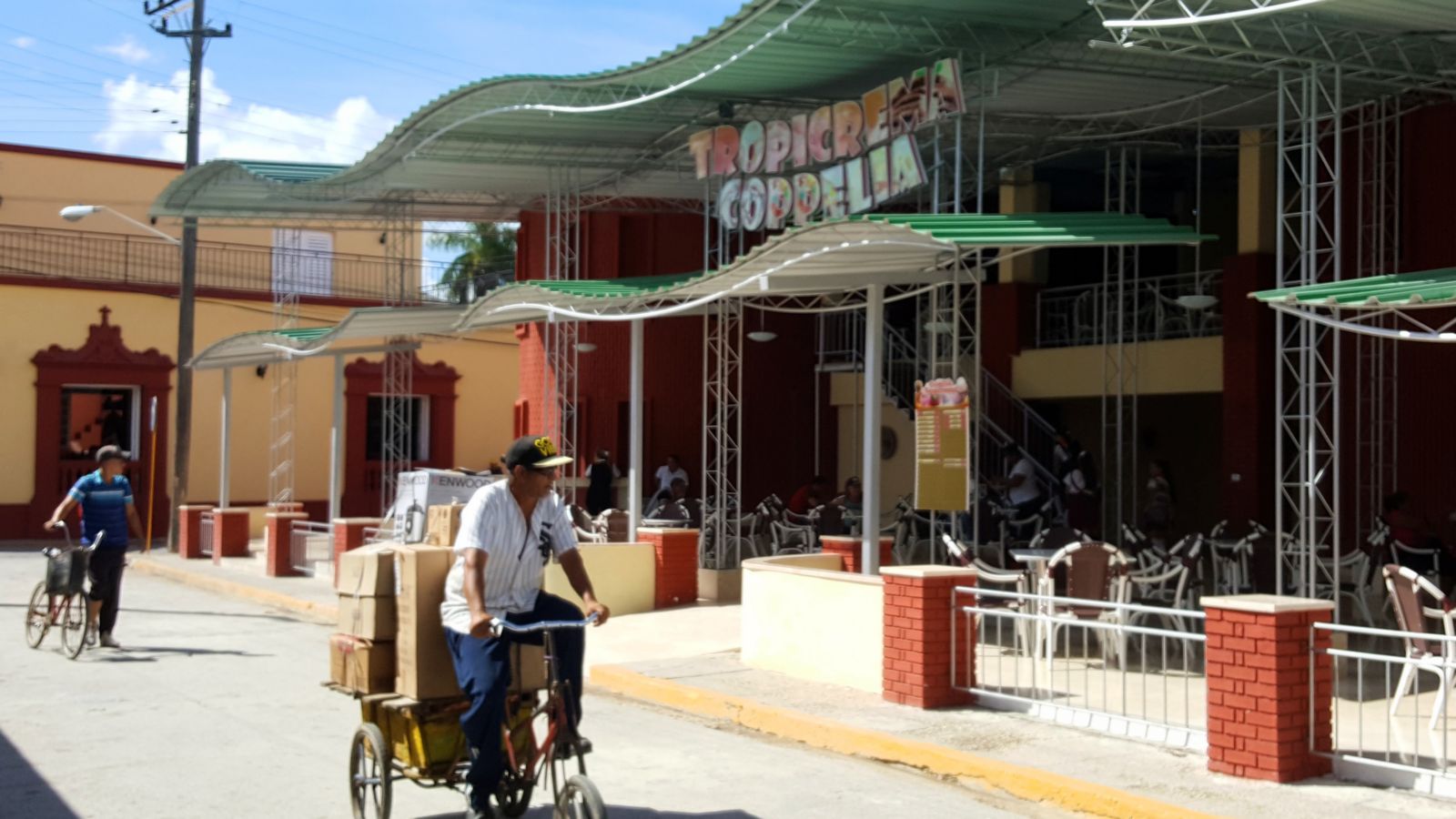
And while Bayamo’s main shopping street is pedestrianised and attractively decorated…
…the state-owned shops have a limited choice for locals who rely on these for their basic needs.
A number of significant historical buildings in Cuba were built by the Mason’s, and some of those in Bayamo are no exception; look out for the historic symbol to recognise them.
Bayamo Cathedral dates back to the 16th century, although was restored around ten years ago, with a somewhat turbulent history in-between! Like many of the religious buildings in Cuba, this one is definitely worth paying attention to.
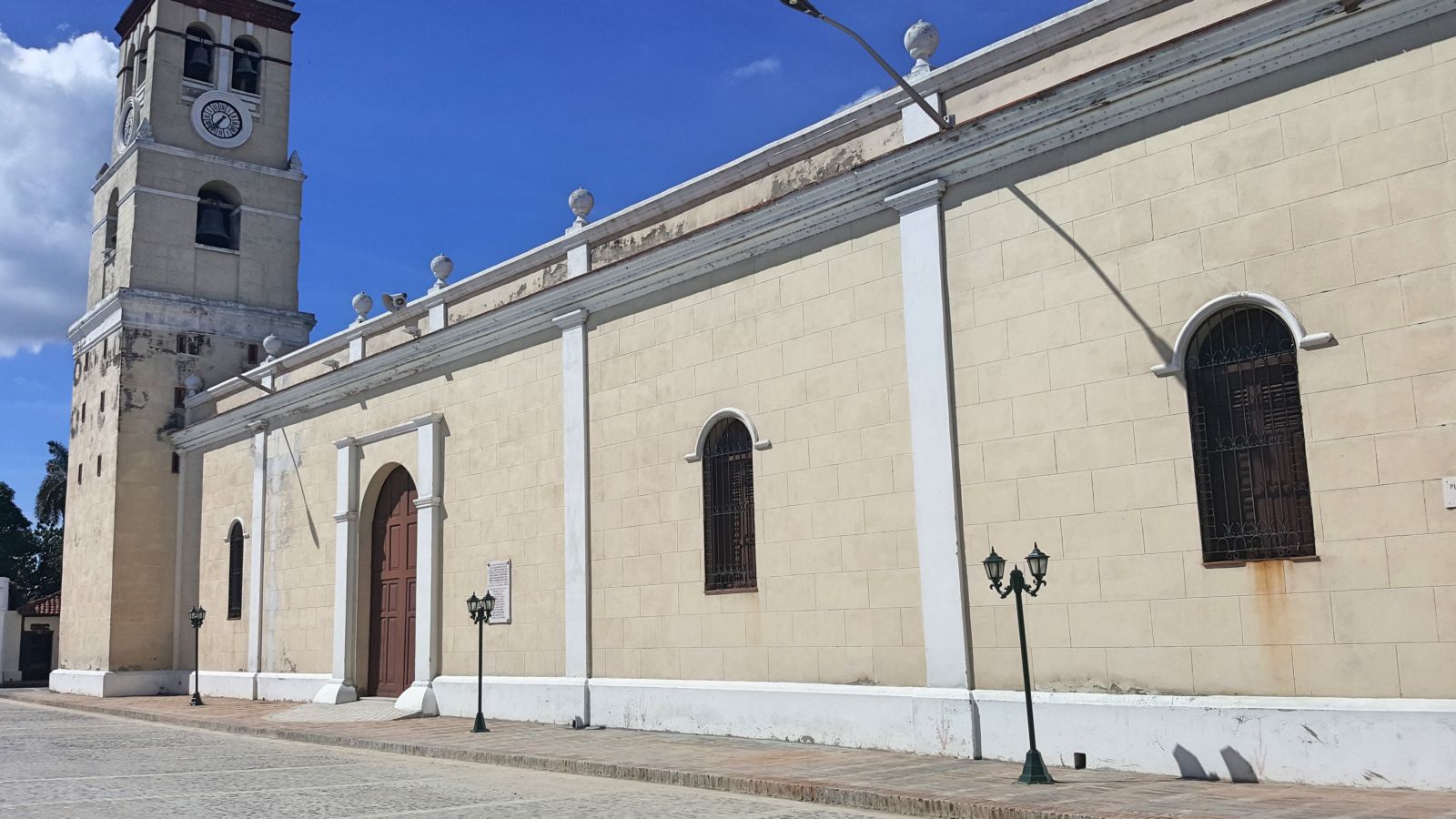
Our final observation to note from Bayamo, are the Russian vehicles that are still in regular use. A visual reminder of Cuba’s close former relationship with the world’s largest nation.
After a satisfactory amount of exploration, we leave Bayamo to continue our journey towards Santiago de Cuba. Driving through the smaller towns we saw quite the variety of transport.
From old eastern block trucks….
To motorbikes (and it looks like Valentino Rossi really is adored all over the world!)…
…and even horse and home-made cart!
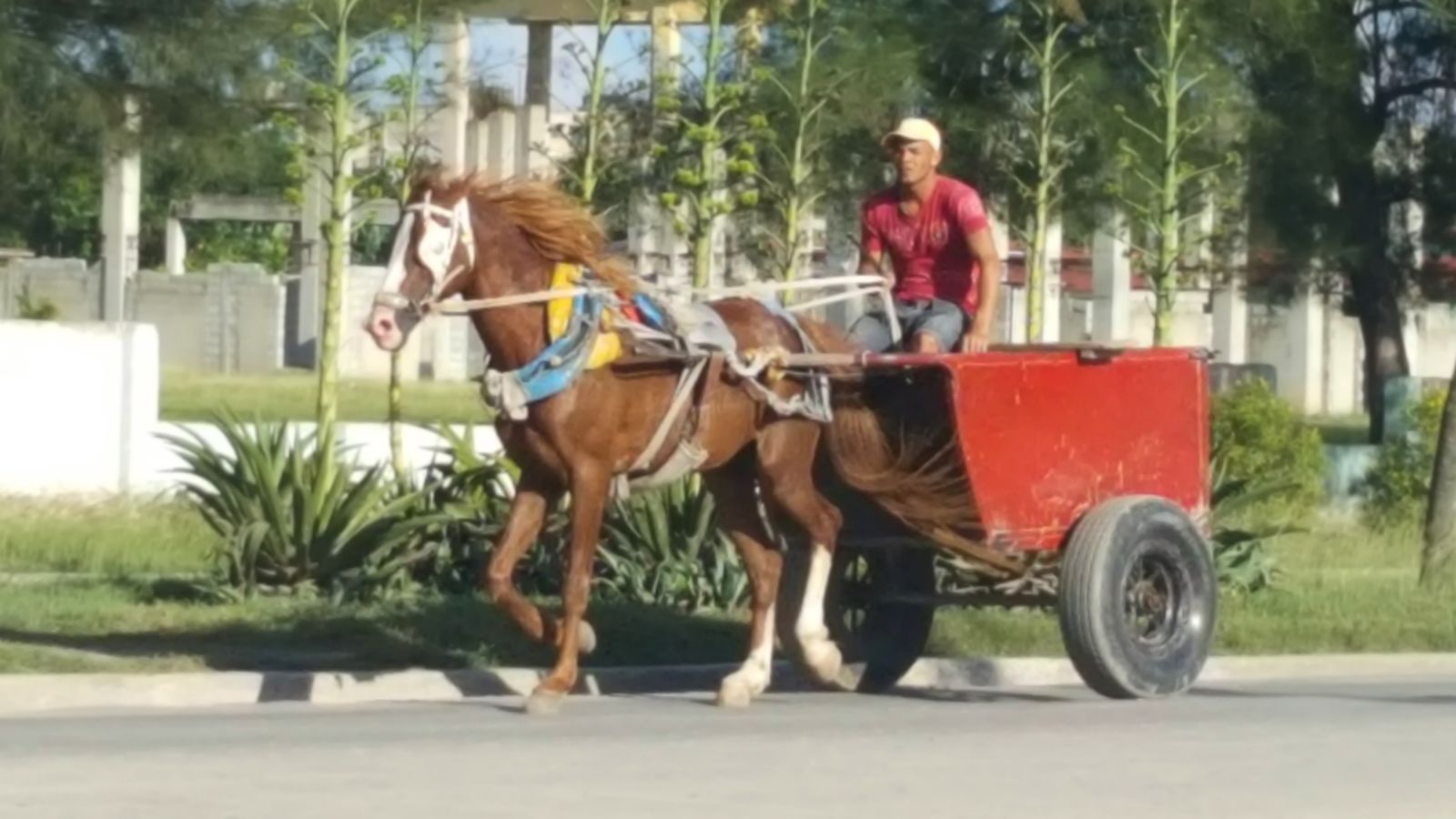
We made one final stop before reaching Santiago de Cuba, at the stunning El Cobre Basilica. On the outskirts of the city, this Roman Catholic cathedral is a place of pilgrimage for many Cuban catholics, and was declared a national monument in 1958.
It’s colonial exterior, while undoubtedly grand as it beams against a backdrop of verdant hills, is relatively minimalistic. That is, in comparison to its magnificent interior. Upon entering, rows of mahogany pews lead to a softly lit, intricately detailed altar, that reaches up into a domed ceiling, and above which La Virgen, small but powerful, rests in a glass case.
Throughout our Cuban adventure, it became clearer and clearer that, as a nation, Cuba doesn’t forget its heroes, big or small. In the grounds of the cathedral is a bust of the former Archbishop of Santiago De Cuba, Enrique Perez Serantes; who once safeguarded the life of a young Fidel Castro from the incumbent government, following an attack by rebels (led by Castro) on Santiago De Cuba.
From the Cathedral, we finally make it into Santiago De Cuba city. Having checked into the Melia Santiago De Cuba hotel, we ended the evening at the roof-top bar, with its breath-taking views across the city. Excited and intrigued for what tomorrow will bring.
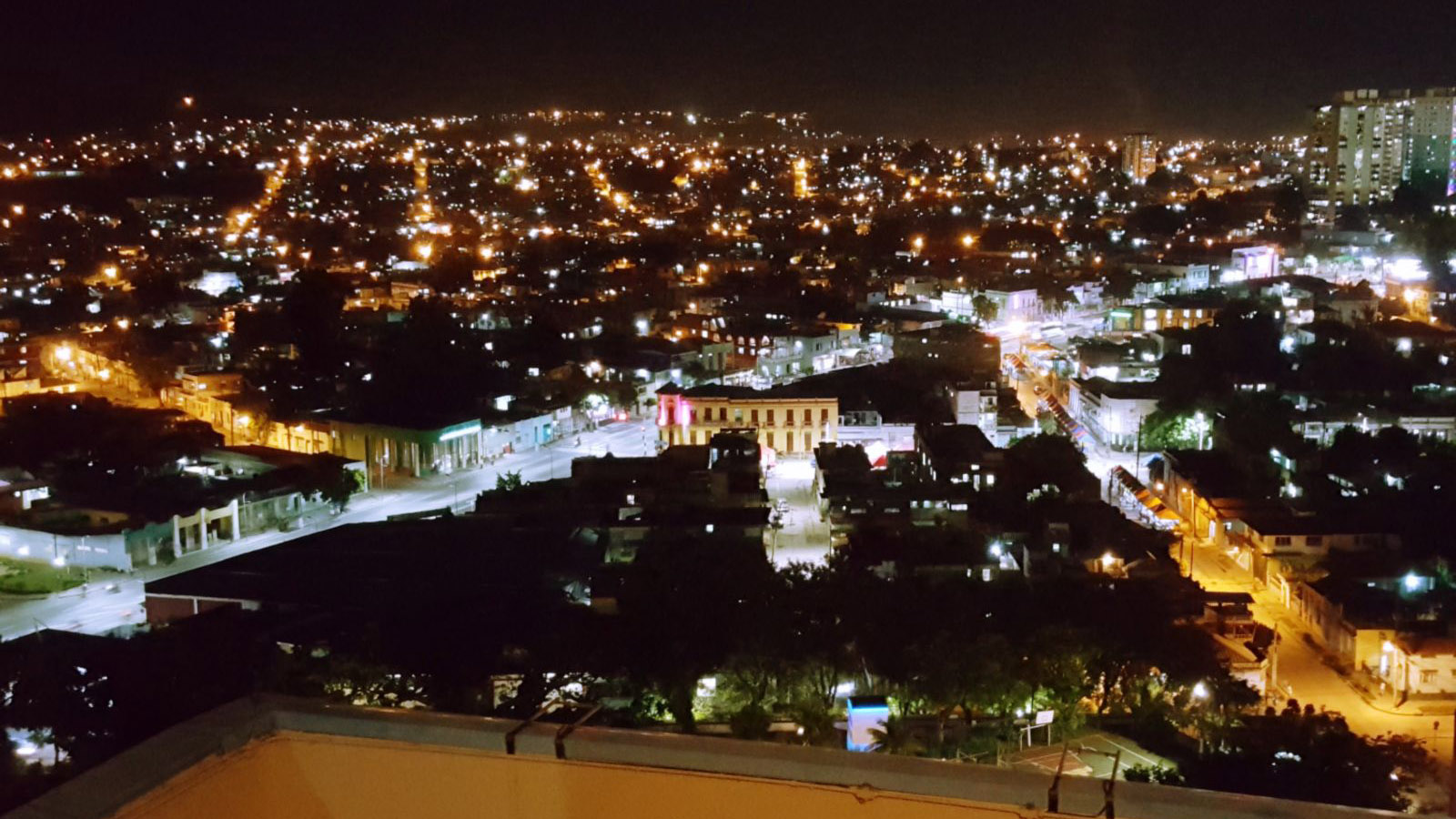
Day 9: Santiago de Cuba. We started today as we ended yesterday, with fabulous views of Santiago de Cuba from the roof of the Melia hotel.
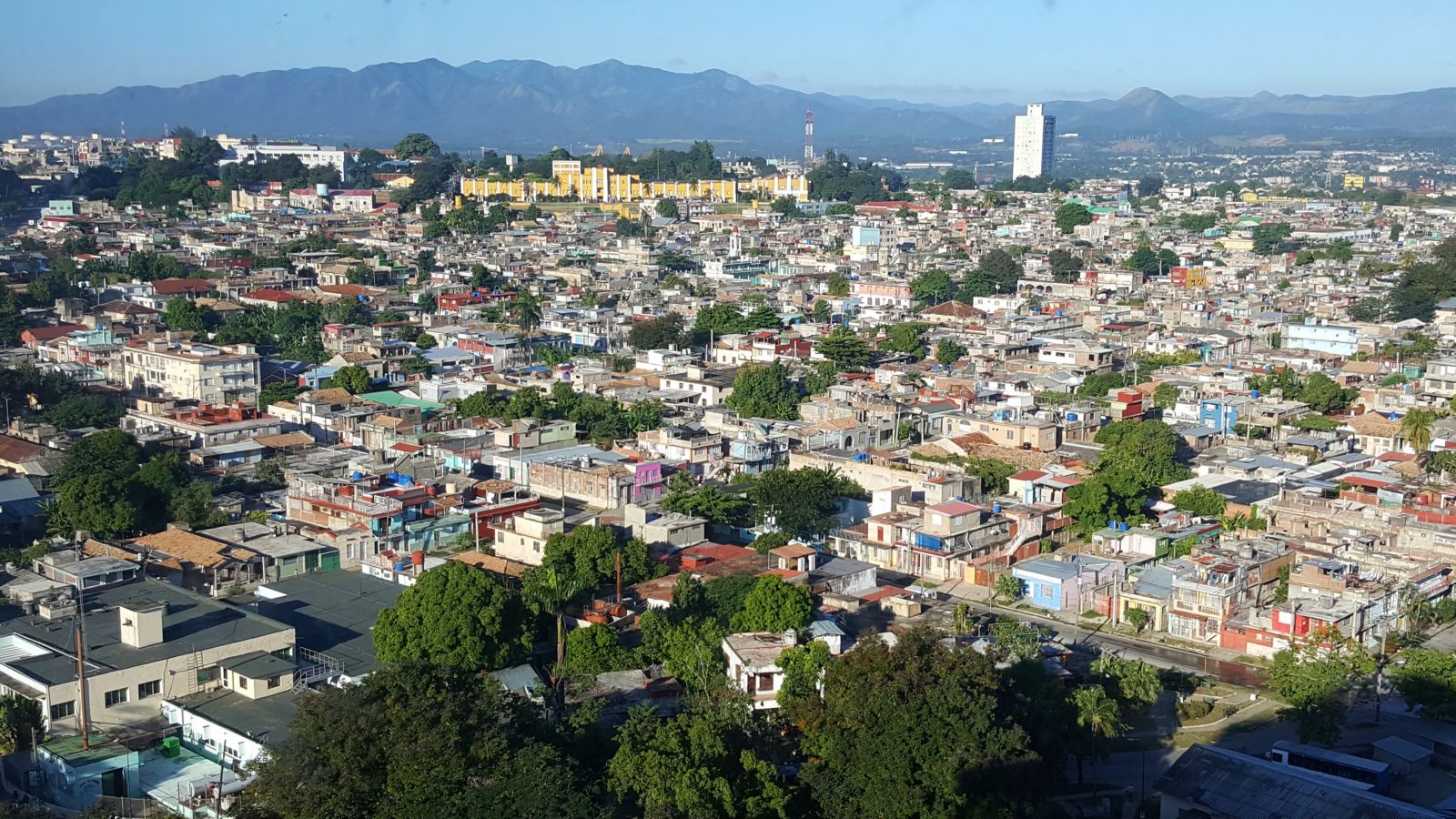
“Normally, we wouldn’t be searching out a cemetery on holiday”
Our first stop, once again, was Santiago de Cuba’s own Revolution Square. Two major statues/monuments are featured here. Both are striking but very different; one more traditional, one very contemporary.
The statue (below, right) at over 16m high, is the tallest in Cuba and dedicated to Antonio Maceo Grajales, the namesake of the square itself. Alongside is a more contempory monument (below, left), consisting of 23 ‘machetes’ rising up out of the ground. The monument represents March 23rd 1878, the date of the commencement of the independence battle of that time, with each machete reflecting a stage of the conflict.
Our next stop was the Santa Ifigenia cemetery. Normally, we wouldn’t be searching out a cemetery on holiday, but this one is incredibly special. It contains stunning memorials to many of the area’s prominent people. Among them the Bacardi family, who started the business in Santiago de Cuba over 150 years ago.
Most stunning, is the memorial to Cuba’s national hero, Jose Marti. The memorial (below) is guarded around the clock, with a ceremony somewhat similar to the changing of the guard. However, due to the heat, the guards are changed every thirty minutes! Marti’s remains are secured inside the tomb.
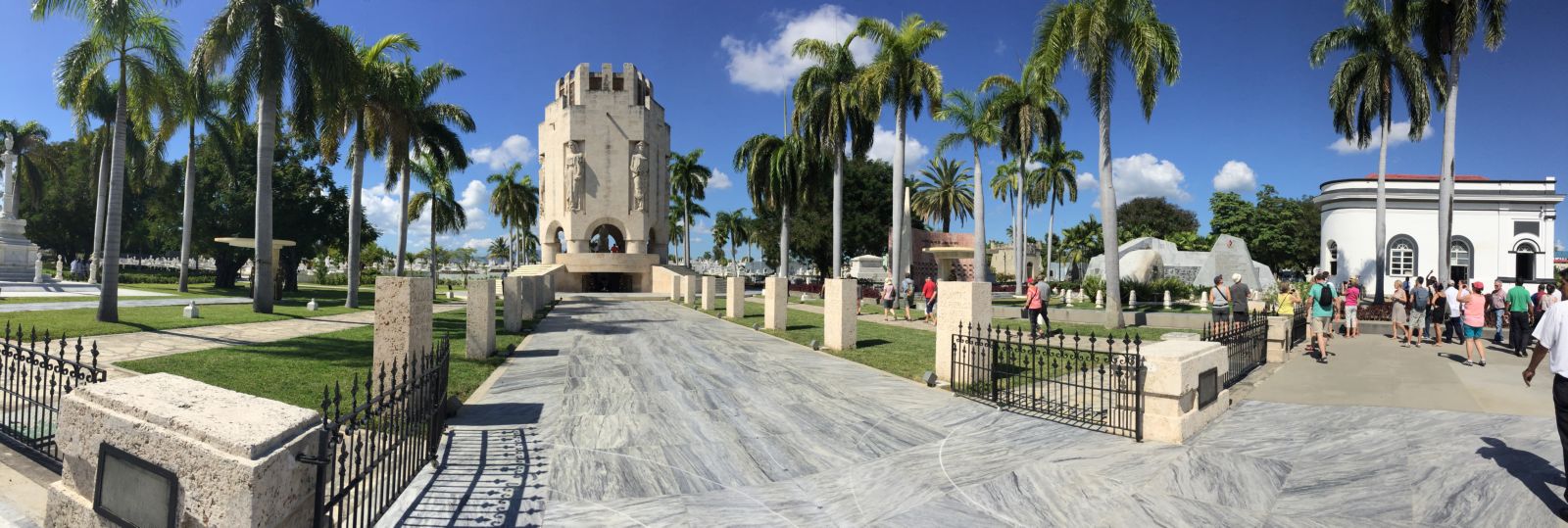
Then, there’s the eternal flame memorial, and the memorial to remember the fallen revolutionaries. The memorial to Fidel Castro is surprisingly simple, though just one of many in Cuba as a whole, and the sentiment is of course unchanged.
After leaving the cemetery, our next stop is the Castillo de San Pedro de la Roca, a fortress on the coast at Santiago de Cuba, overlooking the bay. In 1997, the building was declared a UNESCO world heritage site, and we were pleased we stopped to look around!
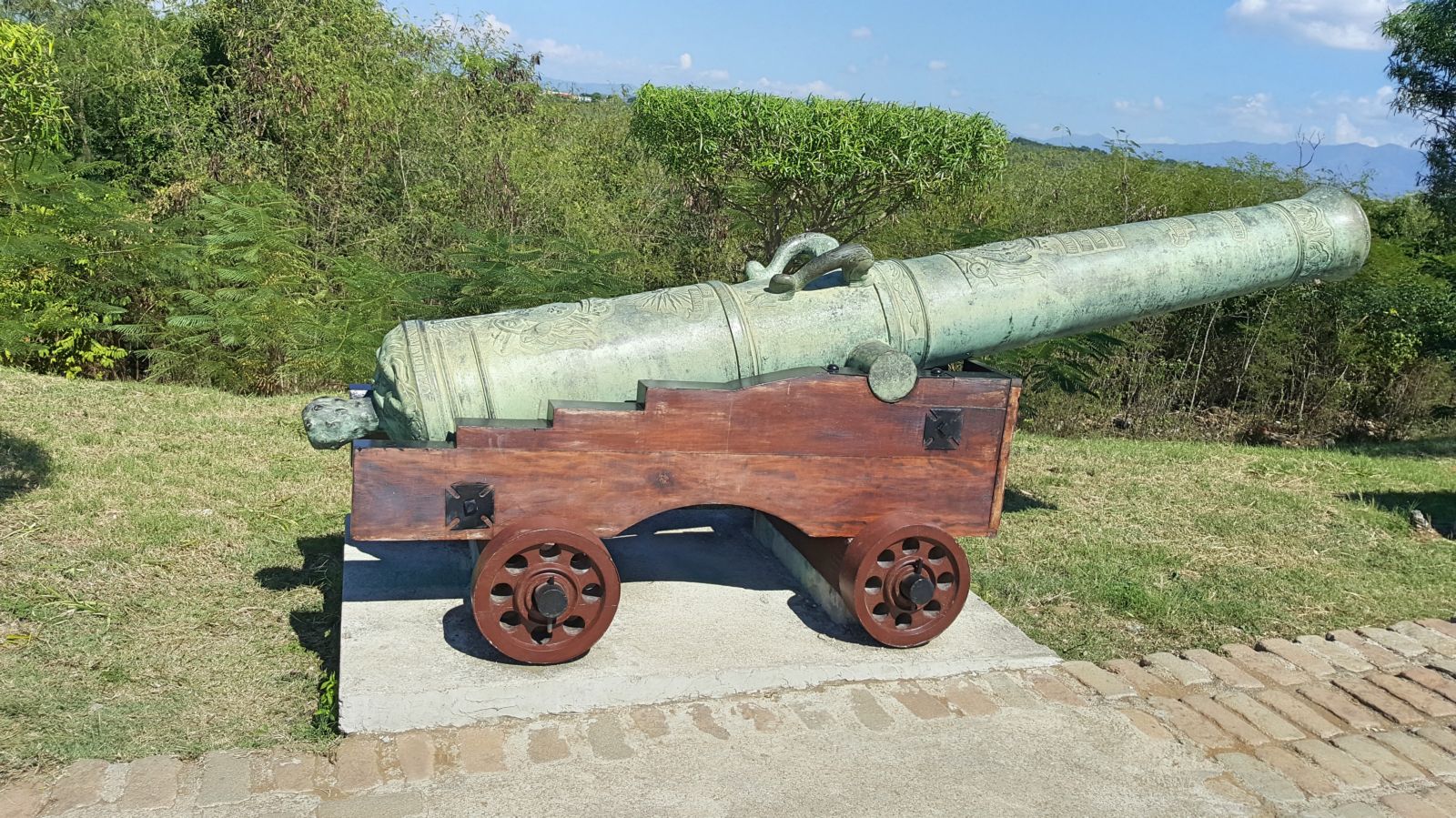
Views from the fortress are stunning…
…even the prisoners had a good view!
Lunch was at the San Pedro de la Roca Castle restaurant, with beautiful ocean views and local music. We would certainly recommend this place for a pit stop, but if you won’t take our word for it, perhaps Paul McCartney could convince you? It seems he beat us to it!
After lunch, it’s finally time to explore the city of Santiago de Cuba, something we’d been looking forward to since our rooftop teaser, and it certainly didn’t disappoint.
“If any one building had to be crowned ‘most beautiful’ in Cuba, it would be hard to pick”
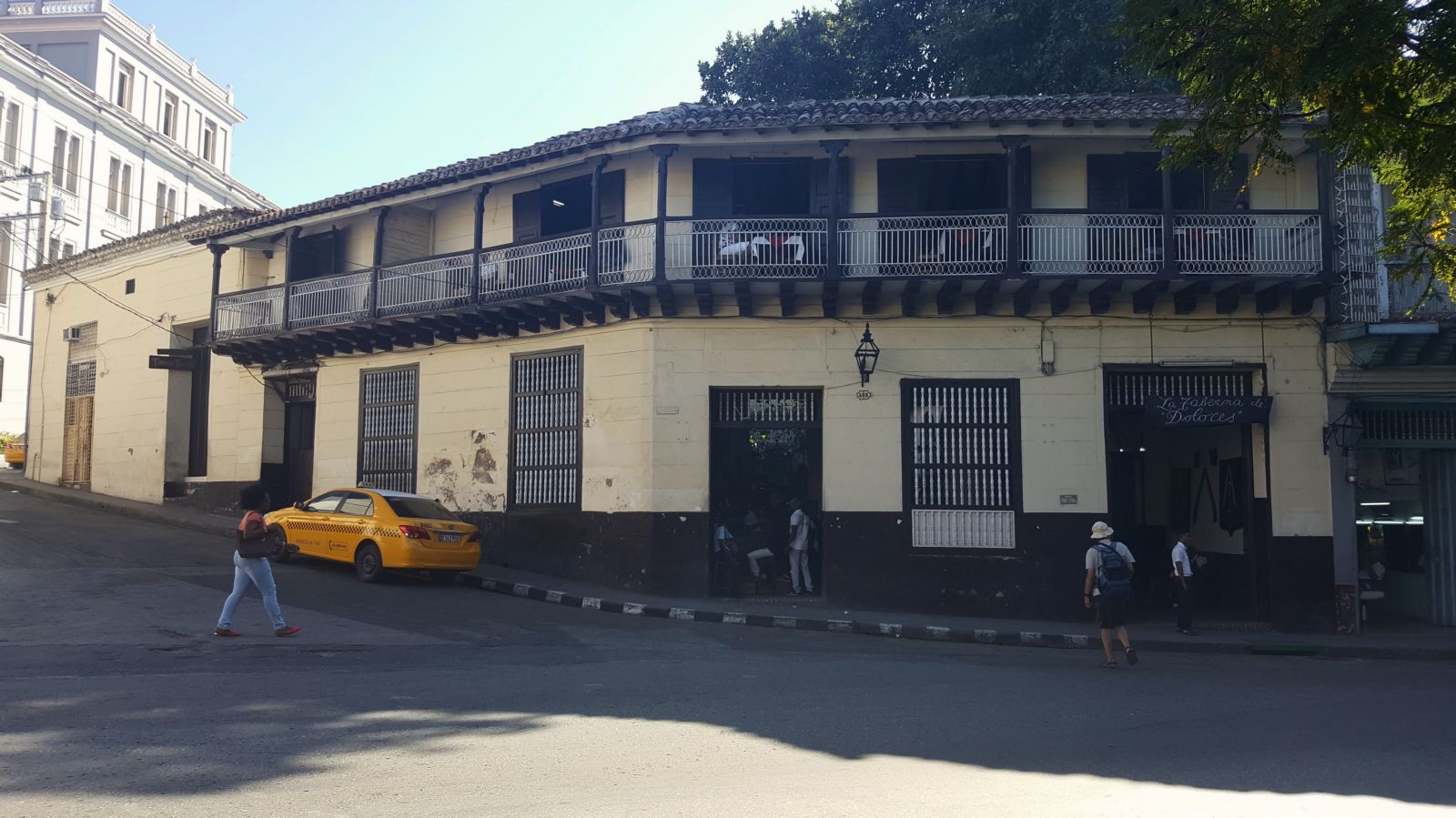
We strolled past the building where Fidel and Raul Castro were educated and the palatial Provincial Palace, the seat of the provincial government…
One for the rum lovers, we sought out the Emilio Bacardi Museum. Established by the son of Bacardi’s founder, the museum contains a major collection of art and artefacts.
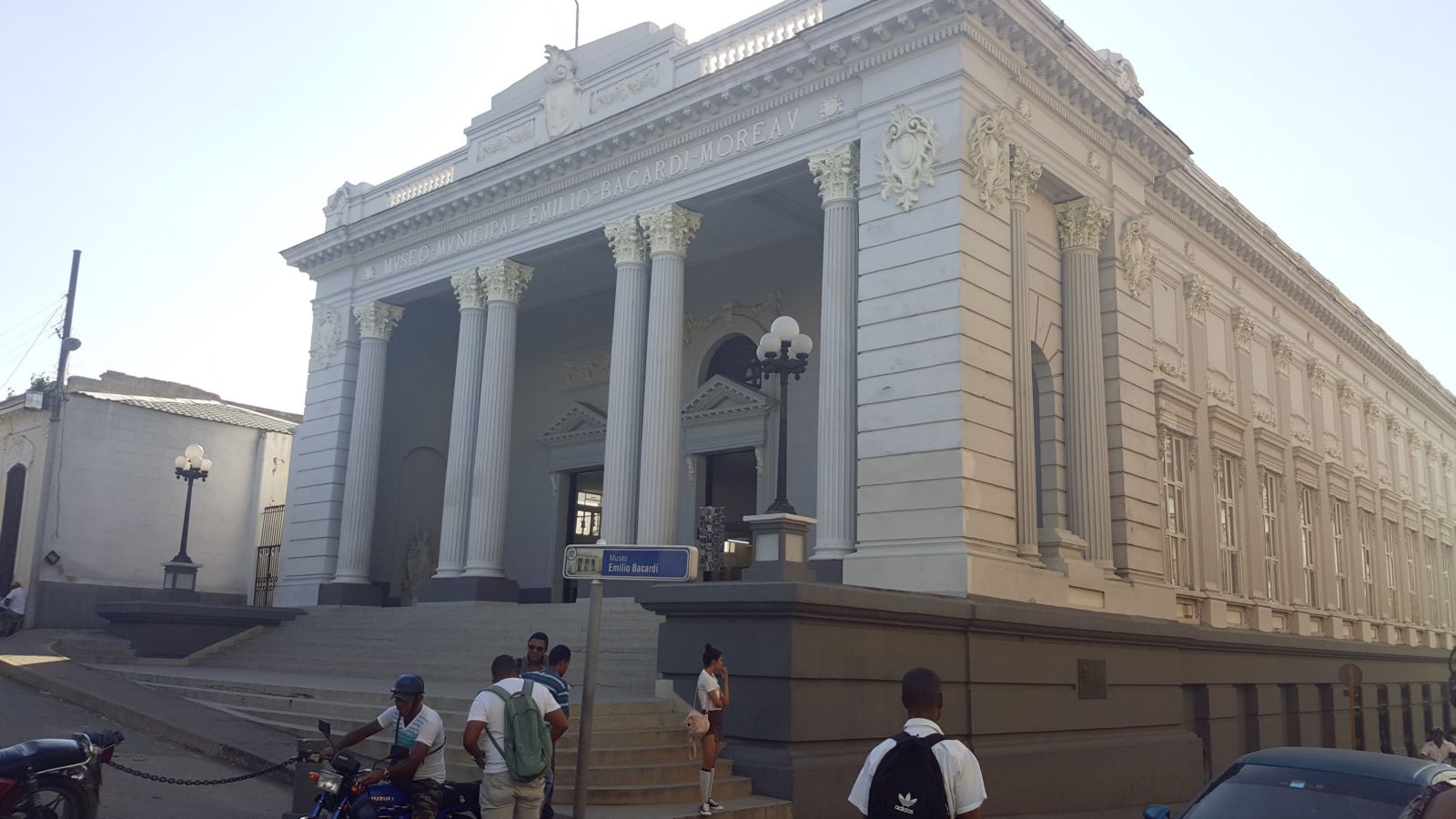
We also stopped to admire the Casa de la Cultura Miguel Matamoros, on Parque Céspedes’ eastern aspect. It is the former San Carlos Club, a social centre for wealthy santiagüeros until the Revolution.
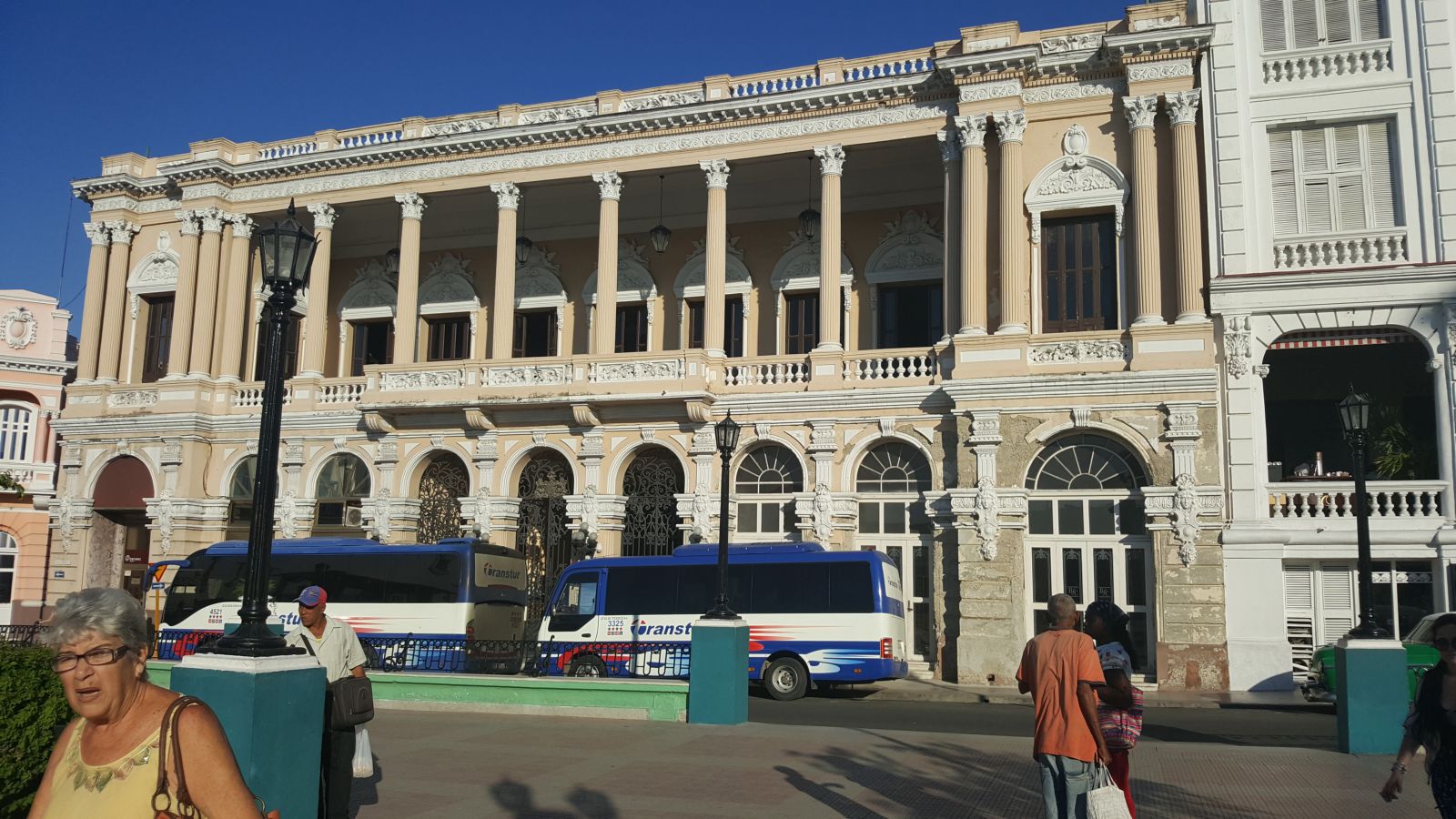
And less significant in history, but pretty enough to stop us in our tracks, was Hotel Casa Granda (below, right). Constructed in 1914, we were quite taken with the Iberostar hotel’s beautifully symmetrical exterior, which sits adjacent to an absolute showstopper of a building…
If any one piece of architecture had to be crowned ‘most beautiful’ in Santiago de Cuba (or in the whole of Cuba for that matter), it would be hard to pick. But the Catedral Basilica de Nuestra Senora De Asuncion, or the ‘Cathedral of Our Lady of the Assumption’ (below, left), edged victory in our eyes. What an absolutely stunning piece of architecture this is.
Much less grand but of no less interest was Cuba’s oldest house, Casa de Diego Velázquez. The house is now set up as a small museum of ‘domestic life through the ages in Cuba’, and it’s well worth a visit.
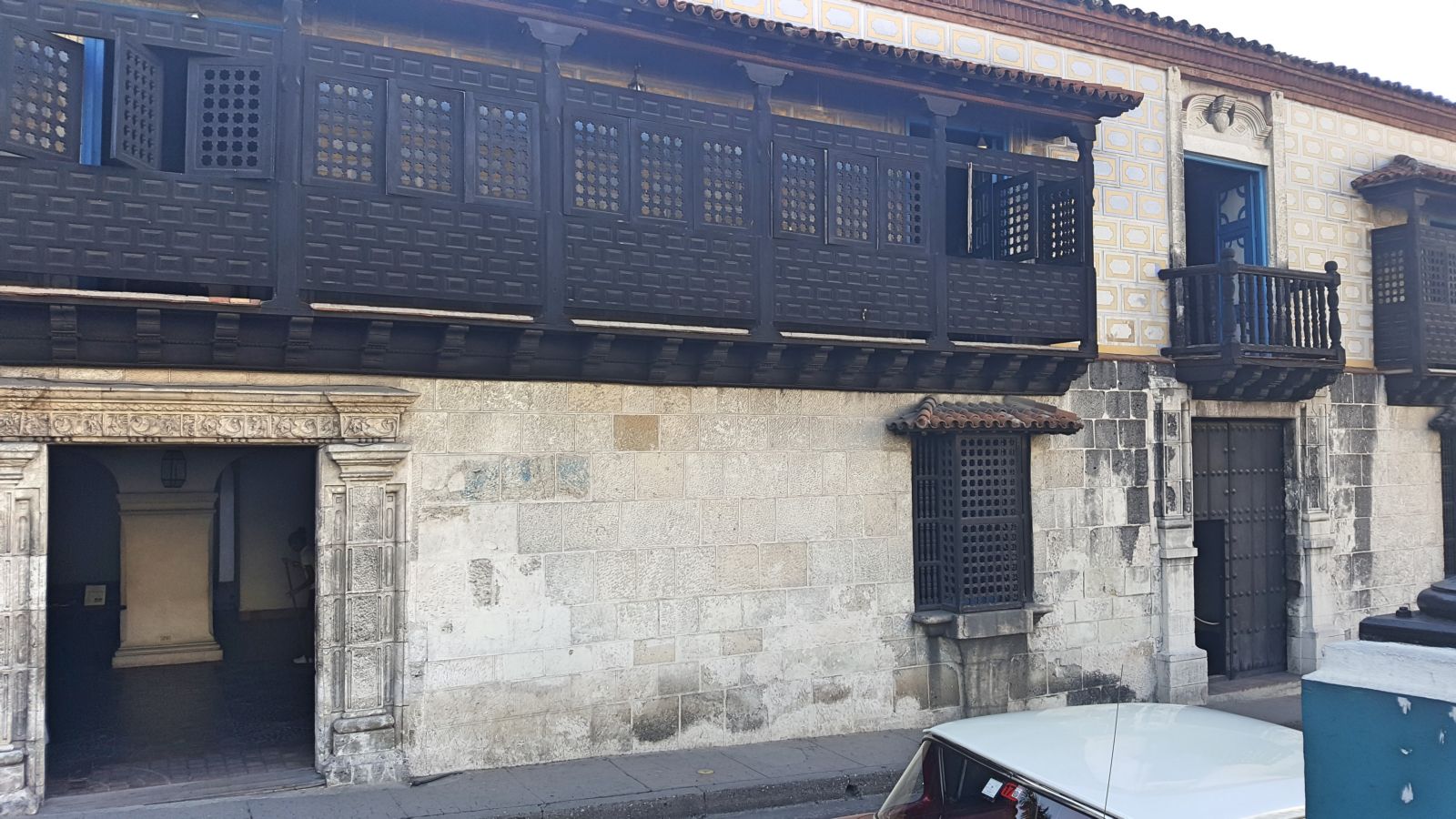
We also found the entrance to the former Royal Bank of Canada building (RBC was once the largest bank in Cuba, with 65 branches across the country in 1920)…
…and the site of the original Bacardi factory and brewery. The Bacardi bat, still used as the logo today, adorns the vibrant building walls.
As the sun started to set, we began to wind down with a walk to the waterfront and docks…
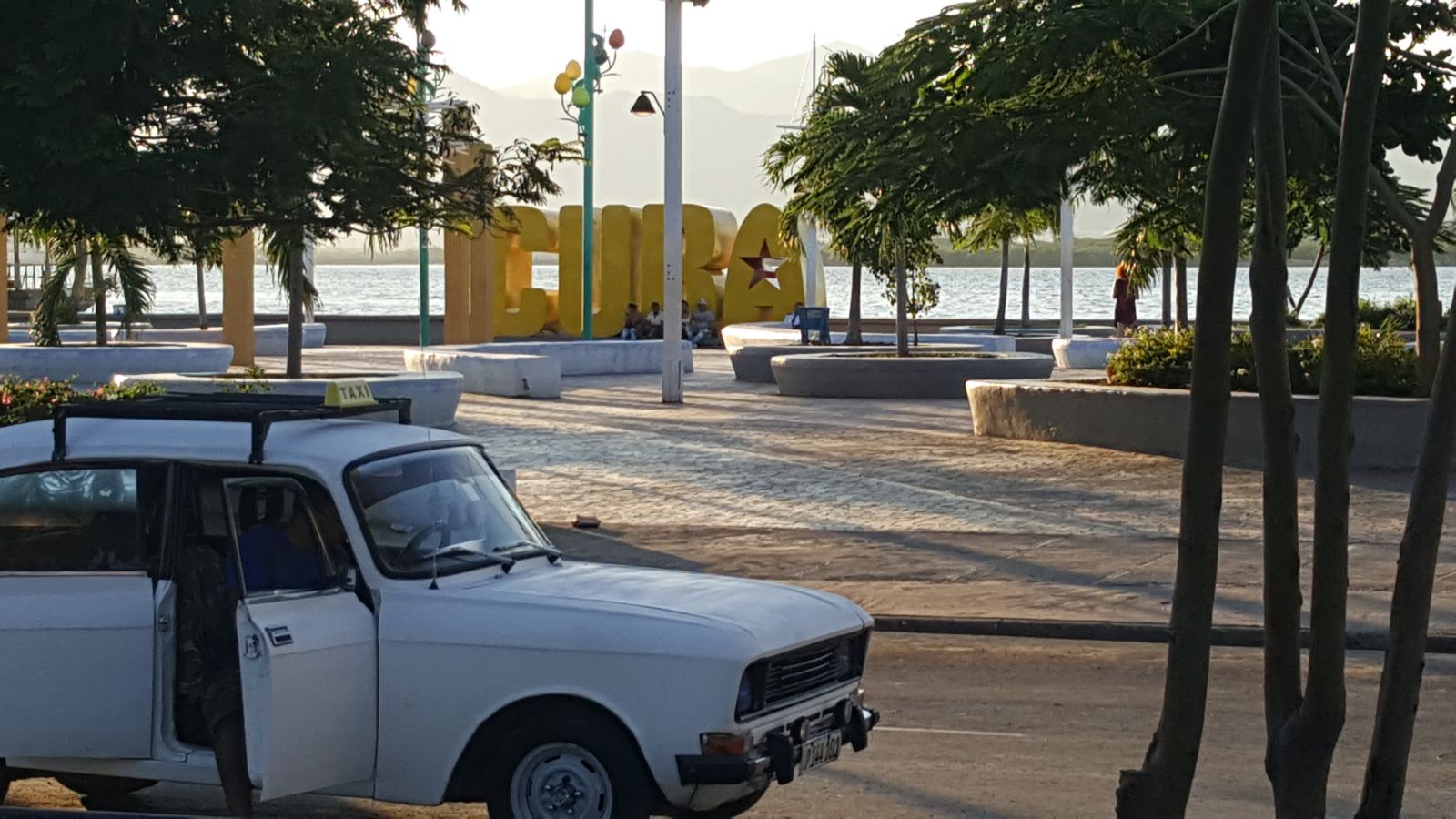
… and along the way, discovered Cuba’s unique alternative to internet dating?!
Eventually, after another full-on but fulfilling day, it was time to head back to the Melia Santiago de Cuba hotel. More European in style than many Cuban hotels, it offers a choice of restaurants, leisure facilities and of course, that fabulous roof-top bar!
Day 10: Before leaving Santiago De Cuba for Holguin, we made one final stop at the Moncada barracks. Once home to former President and dictator Batista’s troops, and the site of the attack by Fidel Castro and his revolutionaries that was regarded as the beginning of the Cuban revolution. Now a museum to the 26 July revolution, as Castro named it, the building retains bullet holes in its walls as a reminder of the conflict.
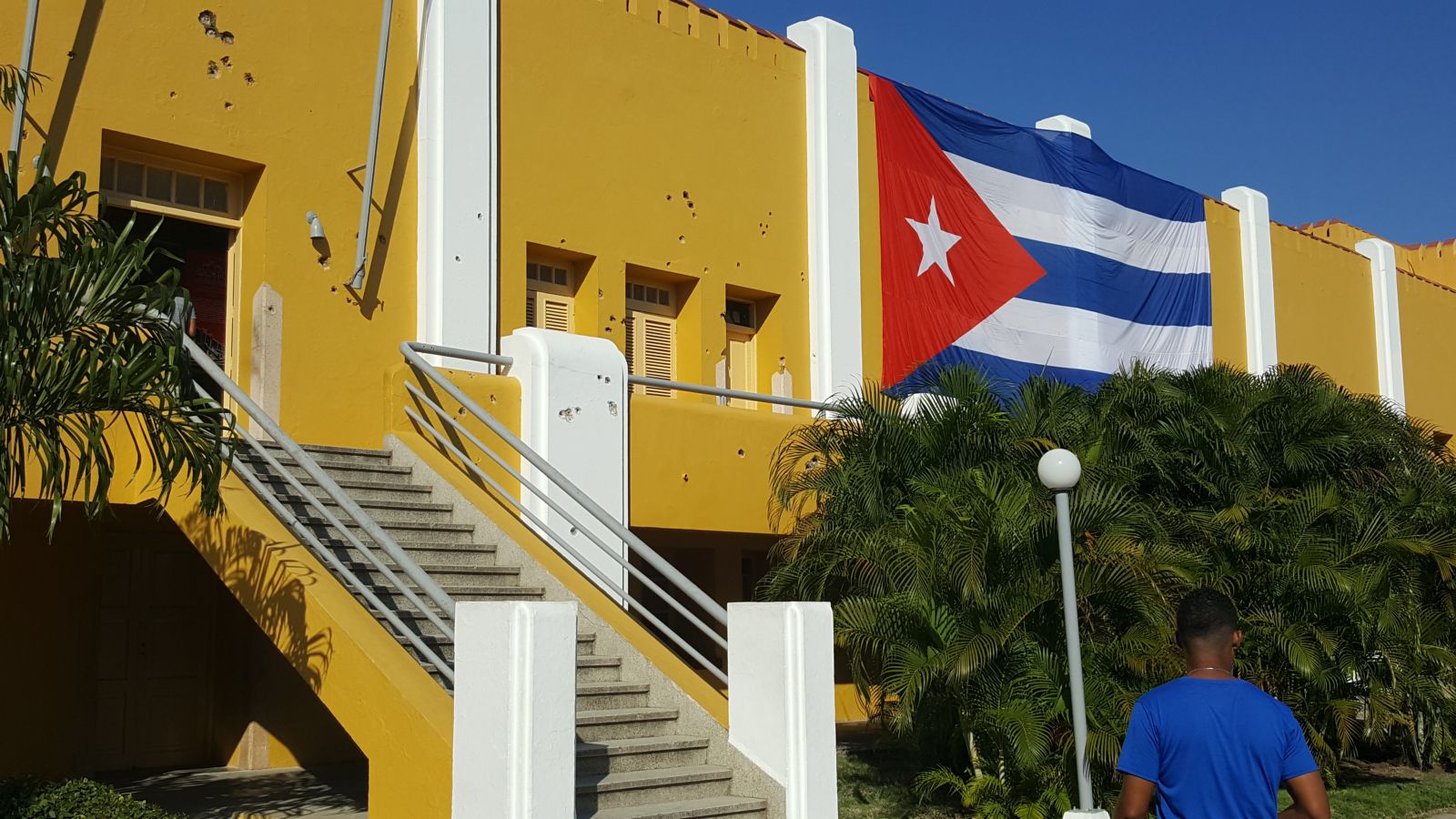
Next stop, Holguin: Cuba’s fourth largest city and known as the City of Parks. Some feat indeed, parks are everywhere in Cuba!
Here we spotted the deco-style Holguin Theatre on Parque Calixto Garcia, the city’s main plaza…
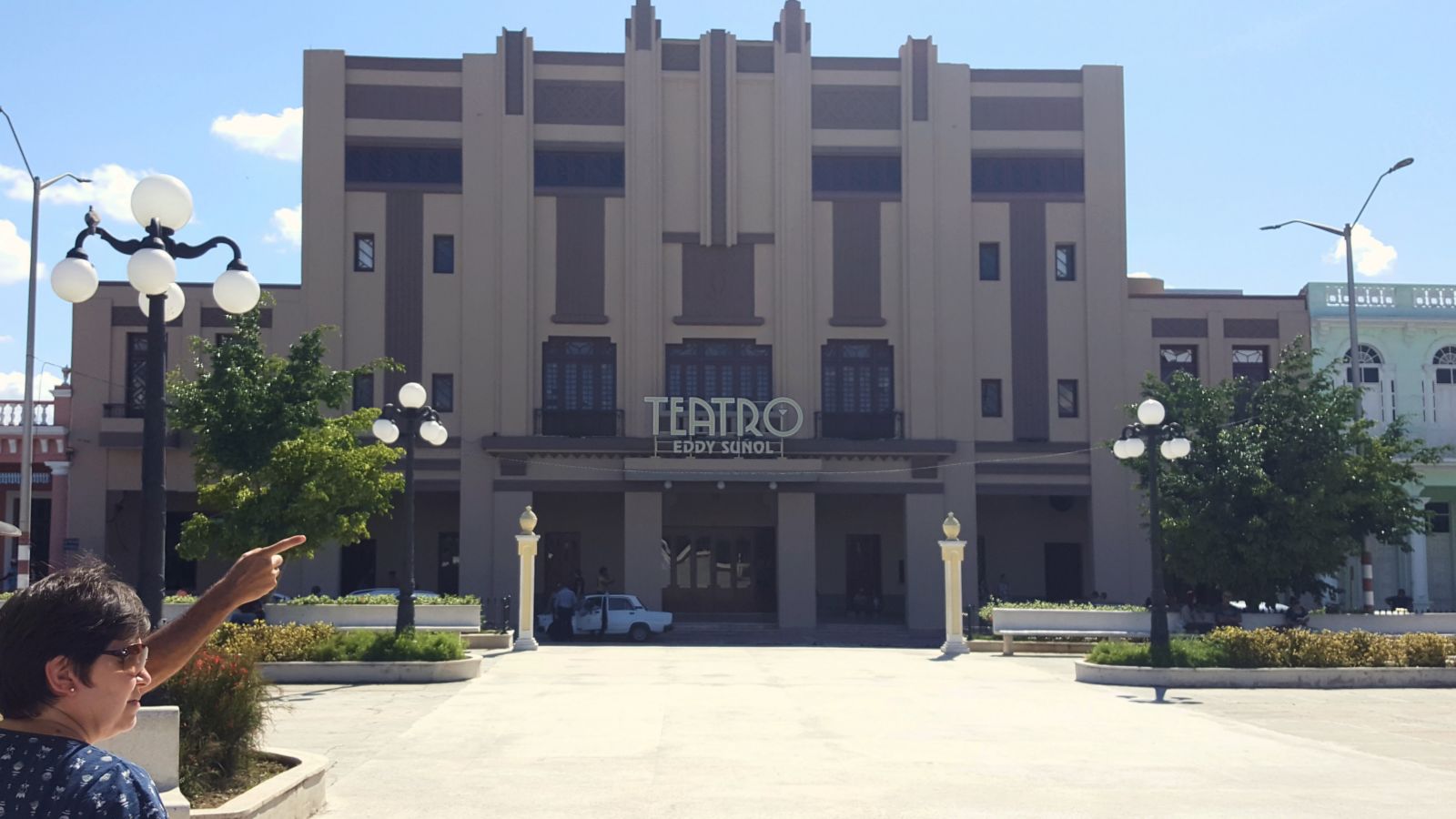
…and a large wall mural depicting the history of Cuba.
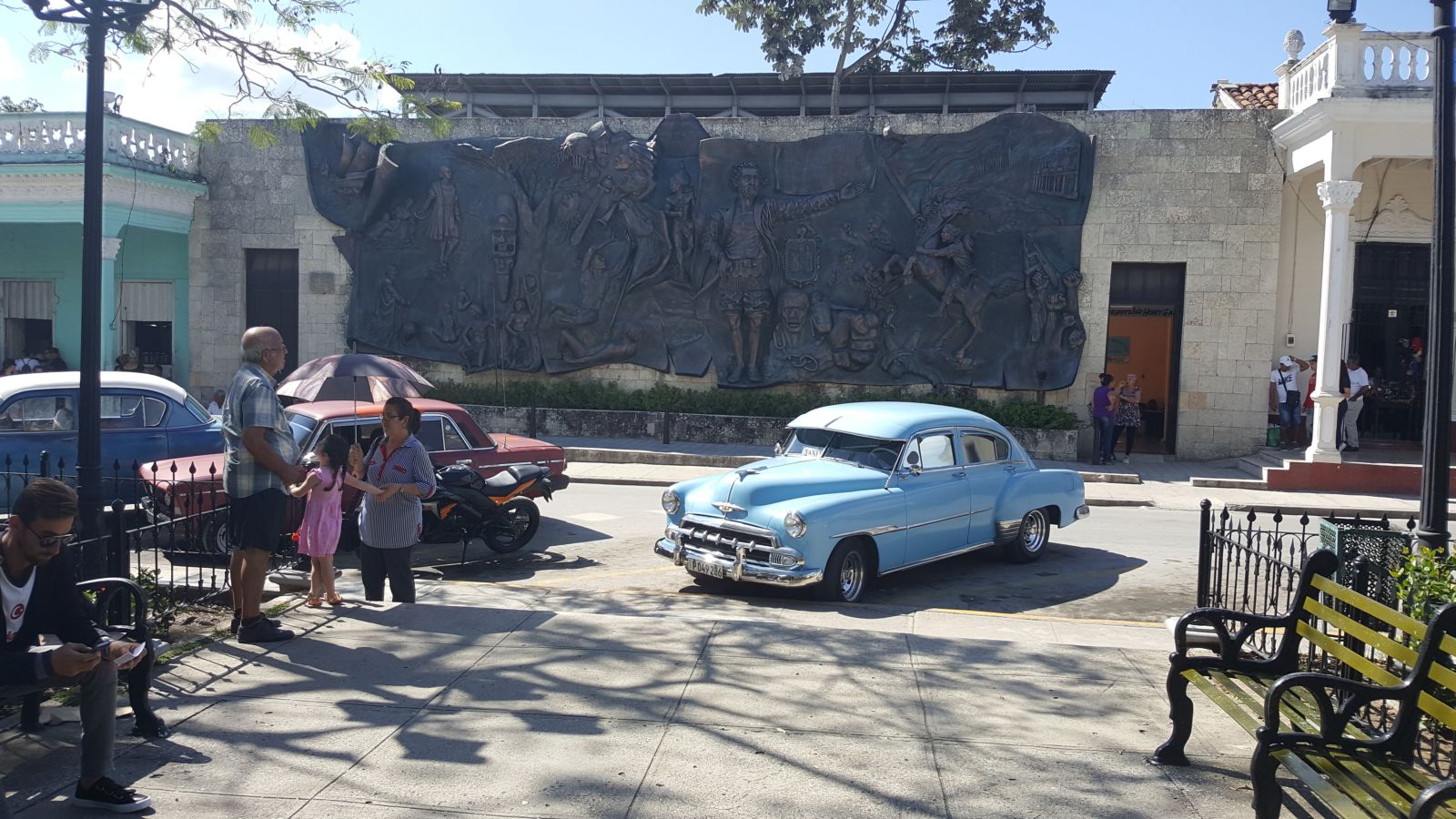
Holguin’s main shopping street is pedestrianised and incredibly attractive, proving popular with locals and tourists alike.
We stopped for lunch on the outskirts of the main town, at the delightful Parador Maragote. Being one of the hottest days on the trip, we were grateful for their fabulous iced lemon drink!
Nearby our lunch stop was the Iglesia San Jose (below). Originally completed in the early 1800’s, the church has gone through many changes in its history. The architecture is striking and unusual, in that it was once used by the Spanish army to defend the city, due to its height and central location.
Away from the main streets, Holguin is quiet and quite humble in appearance, though we did still bypass a unique candy-coloured casa or two, as well as some interesting wall art. Transportation by horse-and-cart is commonplace here, not just for tourists but locals, too. A common way to travel and transport goods.
In the top left-hand corner of the next picture, you can just make out the steps leading to one of Holguin’s main attractions, the Hill of the Cross or ‘Loma de la Cruz’. There are 458 steps to the top, which is over 250 metres above sea level. But you can take the car, which we did, and then looked back down the steps as if we’d climbed them! The wooden cross at the top of the hill is said to protect the city’s inhabitants, and beyond it are some fabulous views back over Holguin.
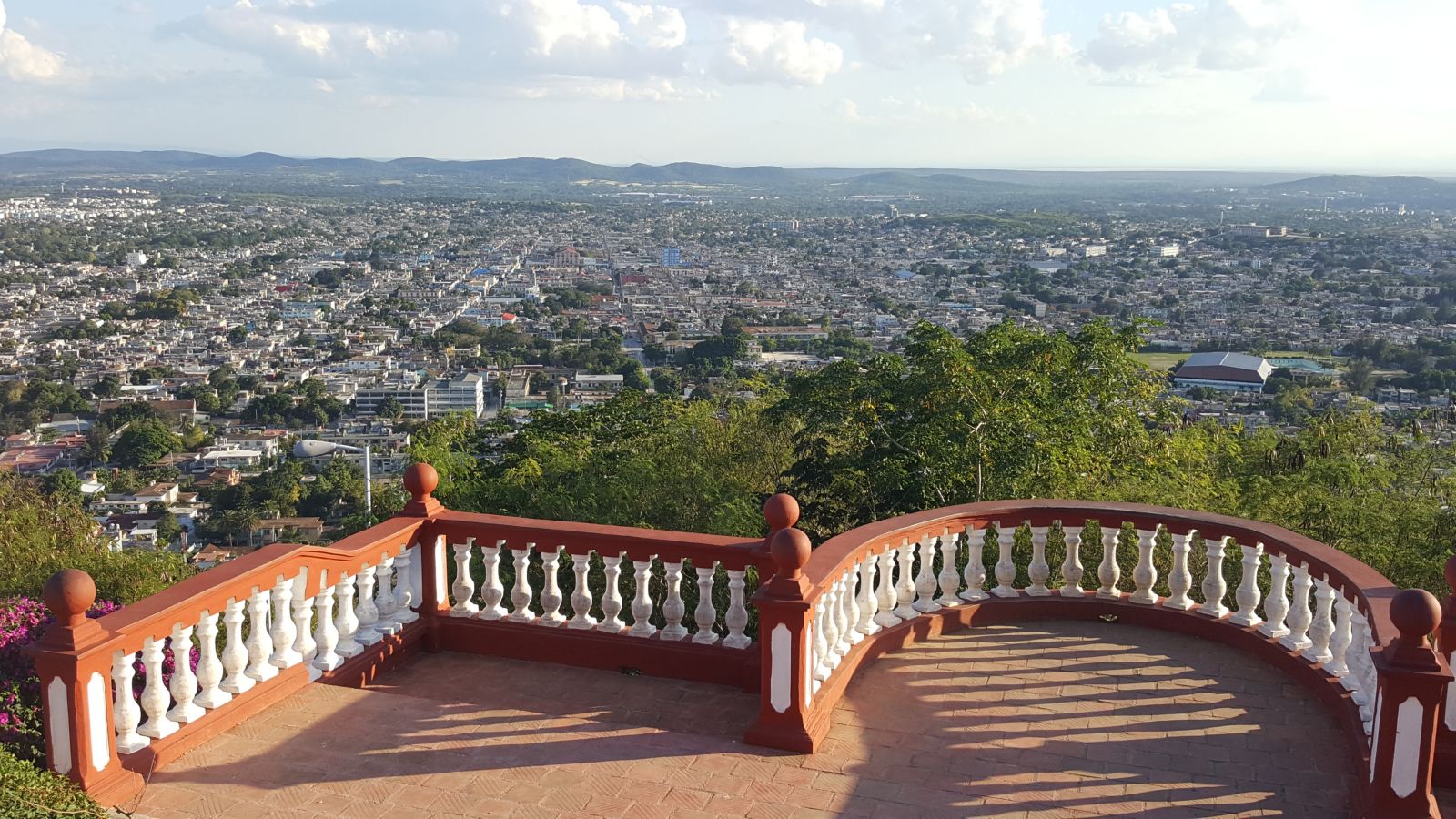
Having descended (again, on wheels rather than foot) from the Hill of the Cross, we made our way back to the city for an overnight stay at Hotel Encanto Caballeriza.
Day 11: Holguin to Santa Clara. An early breakfast at Hotel Encanto Caballeriza, before the long journey to Santa Clara via Sancti Spiritus for lunch.
Some of the streets on the outskirts of Holguin are less attractive and the artwork isn’t quite Banksy, but the message is clear!
Heading toward Sancti Spiritus for our first stop of the day, it became increasingly clear that Cuba faces challenges with its public transport infrastructure, a lack of vehicles being part of the issue. This former Soviet truck has been converted in to a bus…
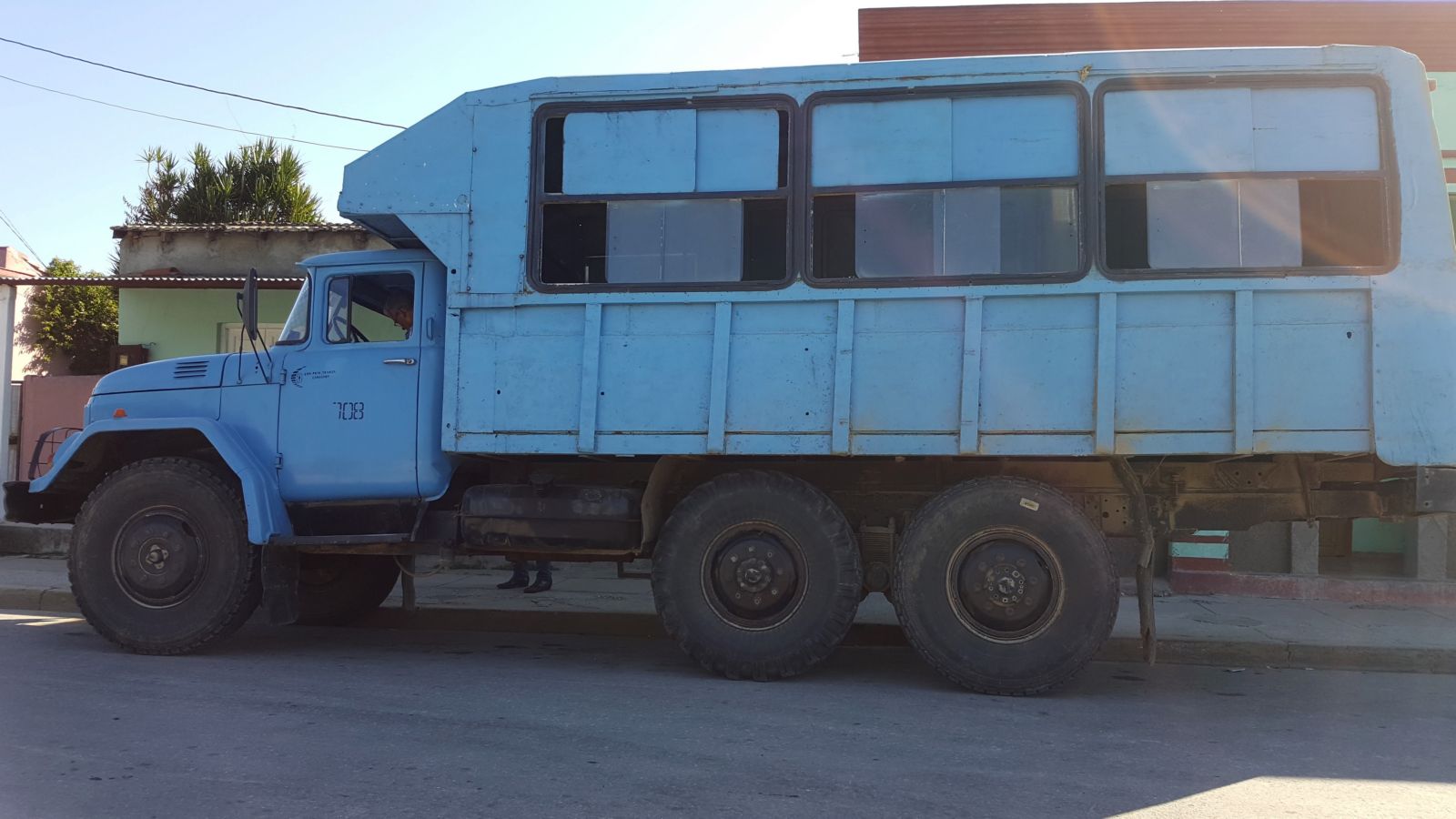
We arrive in beautiful Sancti Spiritus, and find that it is more tranquil than many towns in Cuba. Colonial style buildings once again abound, and locals roam around on bicycles, adding to the peaceful and relaxed atmosphere here.
Lunch today was at the classically decorated Paladar ‘Meson de la Plaza’, with local entertainment to accompany our meal.
Ideally, we would have loved to stay longer in Sancti Spiritus, but our schedule meant we had to leave shortly after lunch. However, we did have just enough time to visit The Parroquial Mayor, Cuba’s oldest church at over 300 years old. Stunning architecture both inside and out, the unique church was declared a National Monument in 1977. Outside stands the bust of the church’s beloved priest, Pablo T. Noya Minguez.
We arrive in Santa Clara late afternoon, with just enough time to visit the Che Guevara Mausoleum, a monument to the revolutionary in his namesake square, Plaza Che Guevara. In contrast to the modest Fidel Castro memorial we came across at the Santa Ifigenia cemetery, Cuba’s most famous revolutionary is remembered here in much grander fashion…
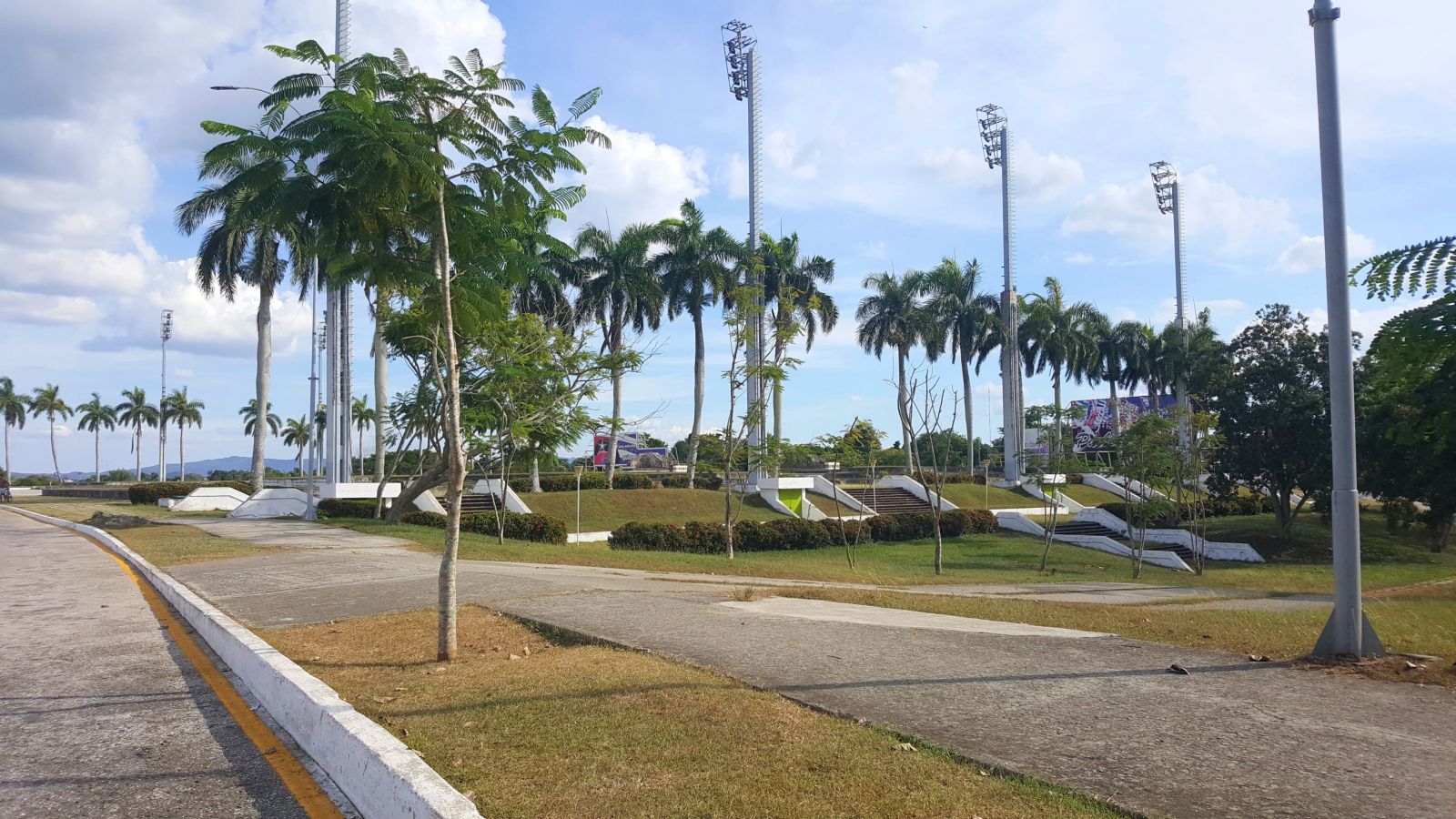
…hugely impressive, this monument was completed in 1988, with reportedly over 500,000 Santa Clara residents helping with the project.
Behind the monument is a fascinating museum chronicling the life of probably the World’s most famous revolutionary, containing interesting artefacts and a real insight into Guevara ‘the man’. Beneath the monument is the Mausoleum which houses Guevara’s remains, together with other revolutionaries killed during uprisings in Bolivia. The Mausoleum is modest but captivating, with a real sense of the reverence in which Guevara is held in Cuba.
The monument overlooks the expansive Revolution Square.
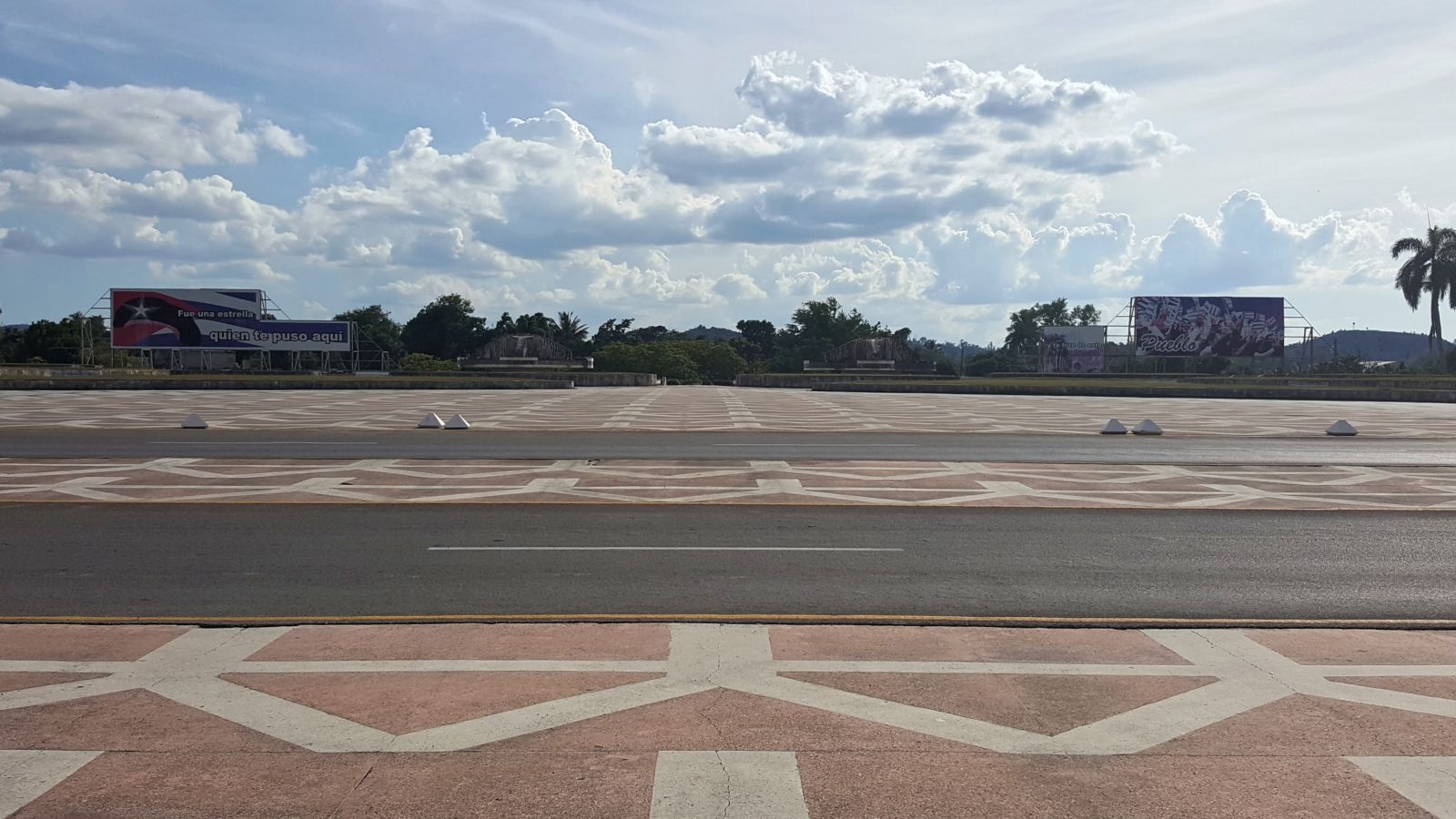
Moving into the city, we paid a visit to the site where Che Guevara led his famous assault against President Batista’s troops. This proved to be the turning point in the revolution, leading to Batista being overthrown. Though the site may not look like much, it is incredibly sobering to stand here and contemplate the history that took place on this very ground. Another point where we were grateful for our marvellous guide.
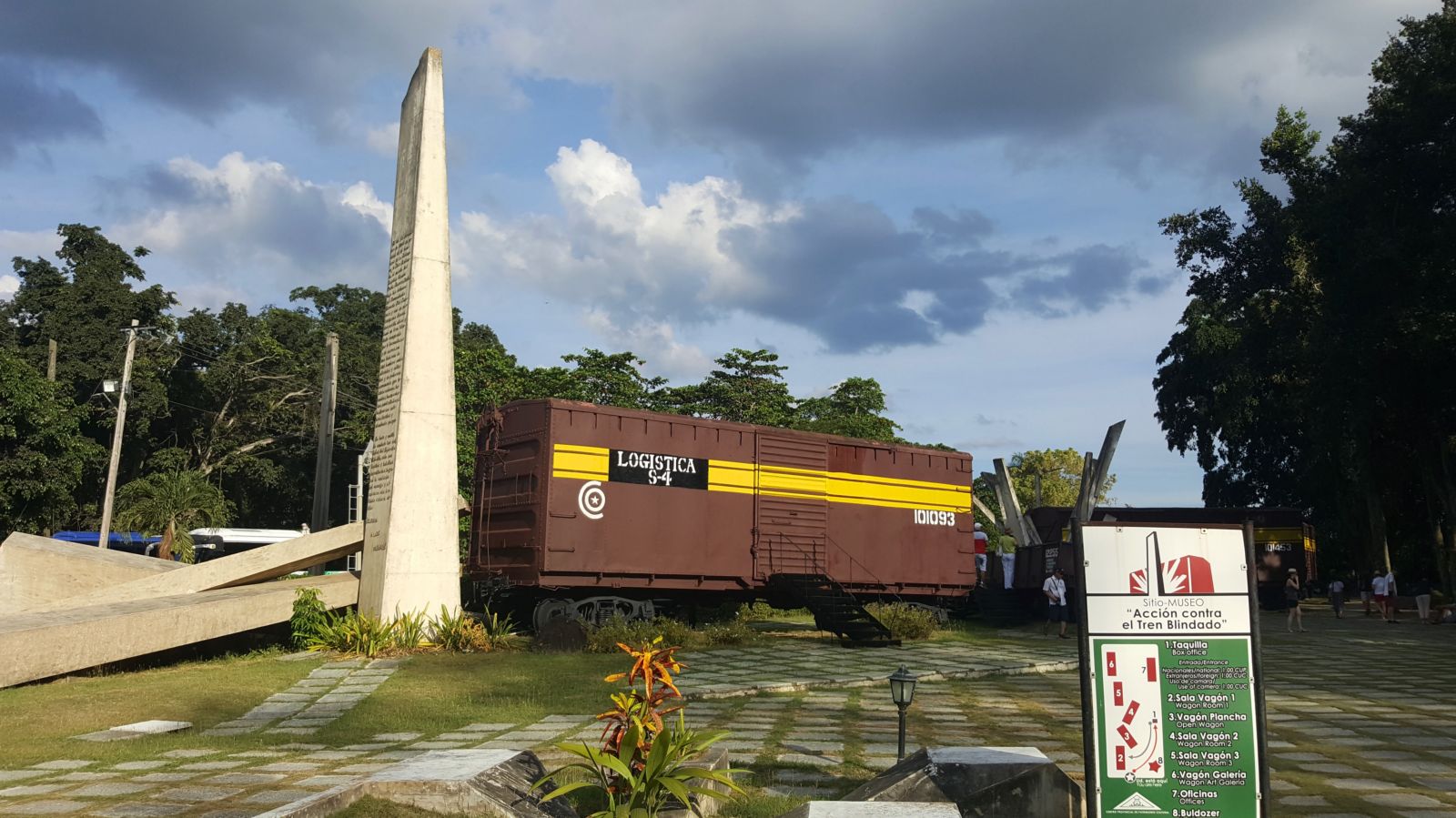
This digger (below) was used to dig up the railway tracks, which derailed the train carrying Batista’s troops. Guevara’s men then attacked the carriages, with the troops trapped inside. As Batista’s men attempted to escape the carriages they were captured, and many disillusioned soldiers switched allegiance, joining Guevara’s men. The last and decisive battle in the revolution, Batista fled Cuba less than 12 hours after the conflict.
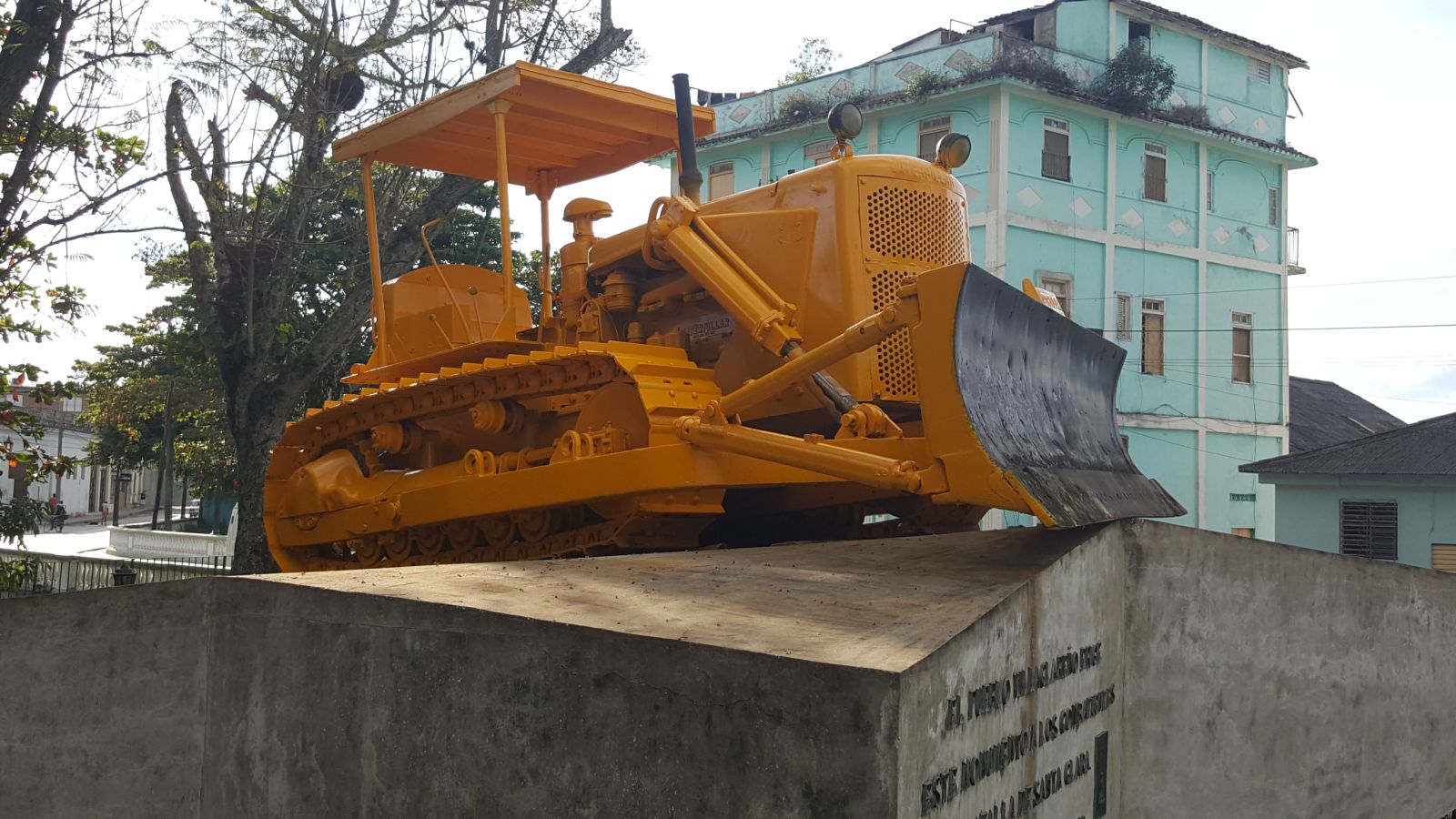
On to central Santa Clara and another beautiful plaza, Leoncio Vidal Park, surrounded by yet more stunning architecture. The Teatro La Caridad is one of the few remaining colonial theatres in Cuba, and has been declared a National Monument. The former City Hall is now the Marti Library; a fabulous building (and even more impressive at night!)
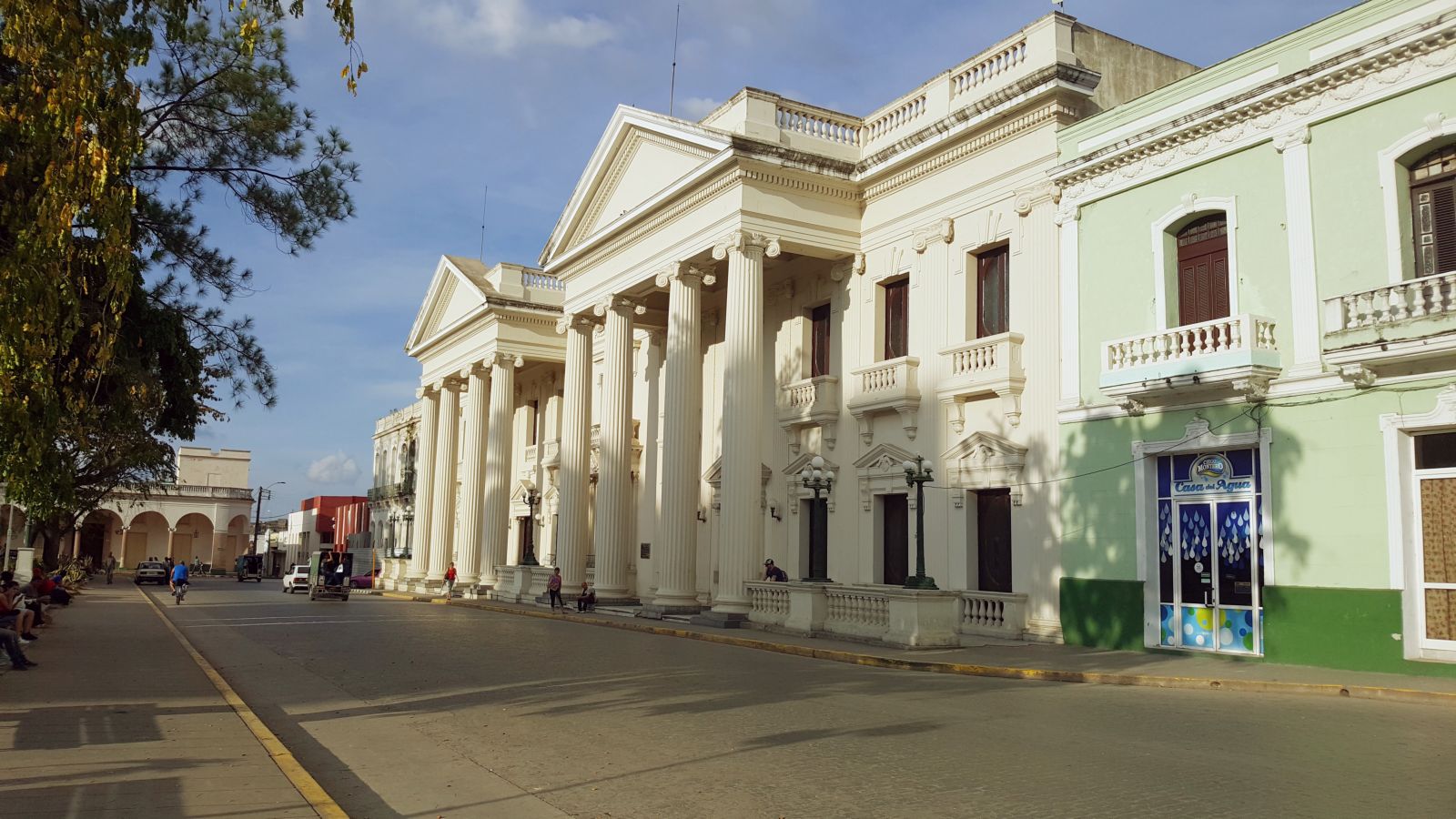
The park itself is a popular meeting point for locals and tourists alike, and a wonderful glimpse into the recreational lives of Cubans.
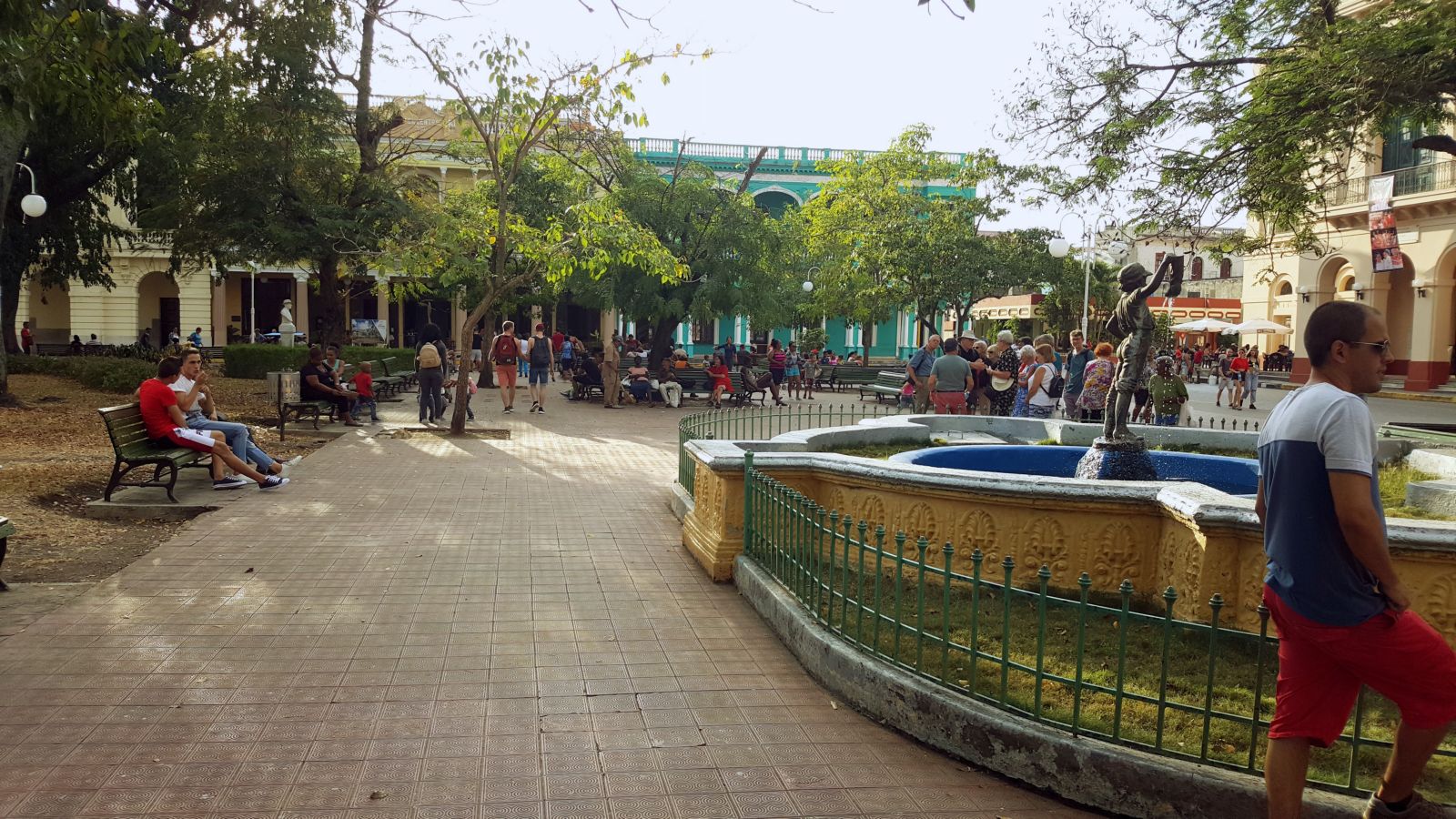
We notice beautiful bandstands, used regularly for concerts and performances…
…and more creative solutions to Cuba’s transportation challenges.
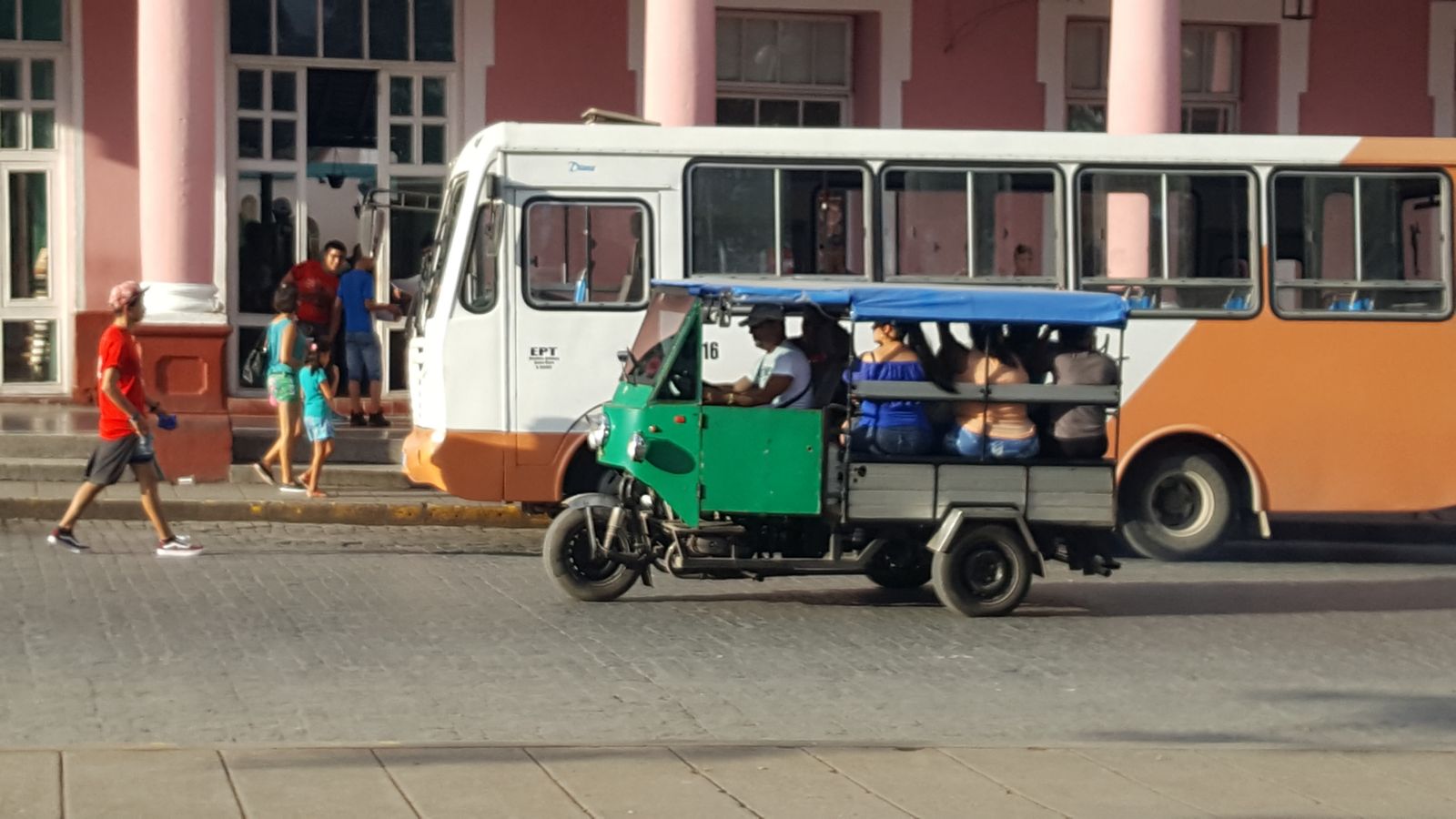
Just off the park, there’s recognition of Cuba’s gratitude for its famous former leader…
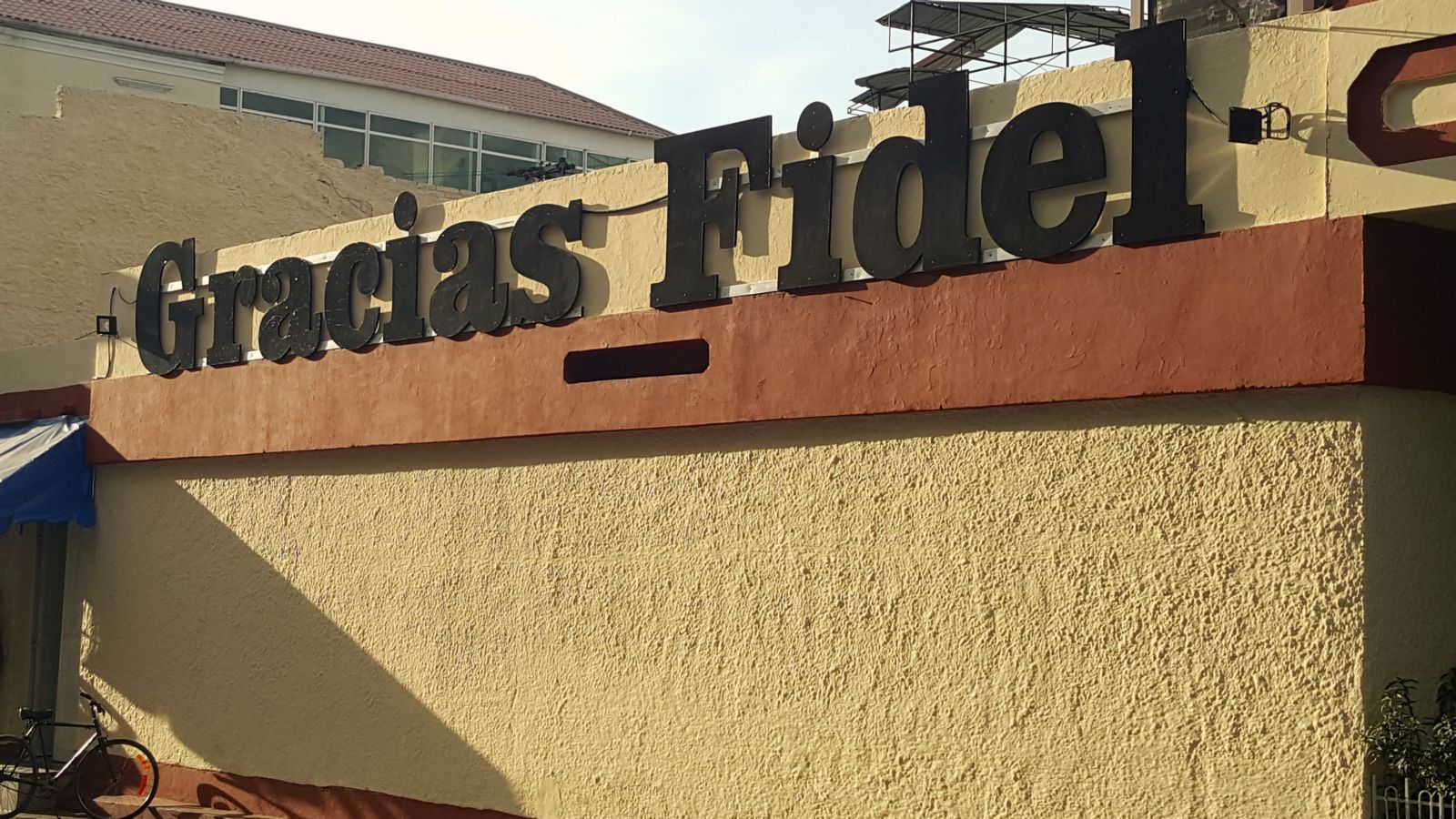
…while elsewhere, goat-powered cart rides provide entertainment for local children.
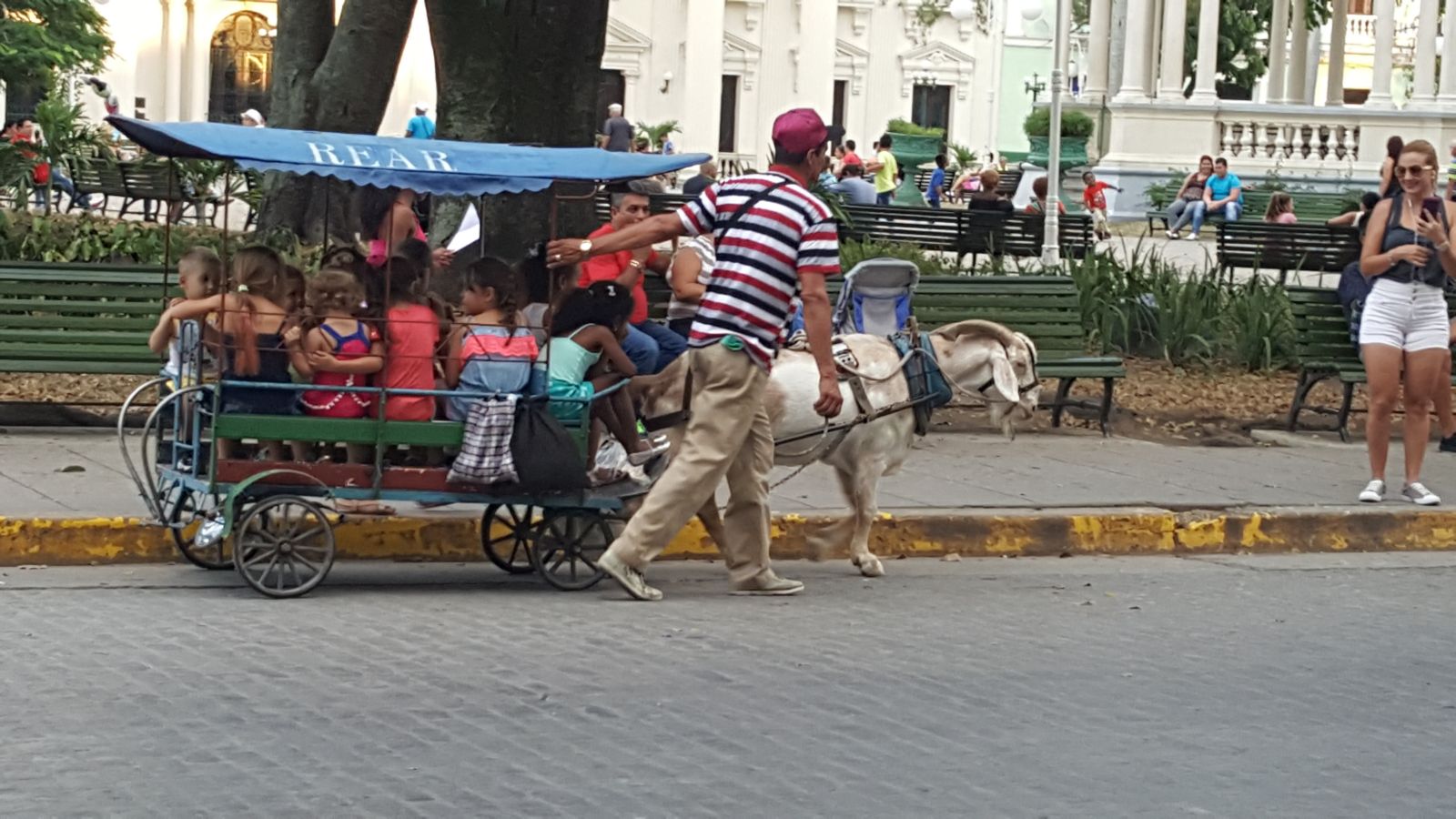
Our accommodation for the night was at the Hotel Encantro Central, right on the Leoncio Vidal Park. A great place to continue people-watching into the evening, with the welcome addition of a mojito or two…
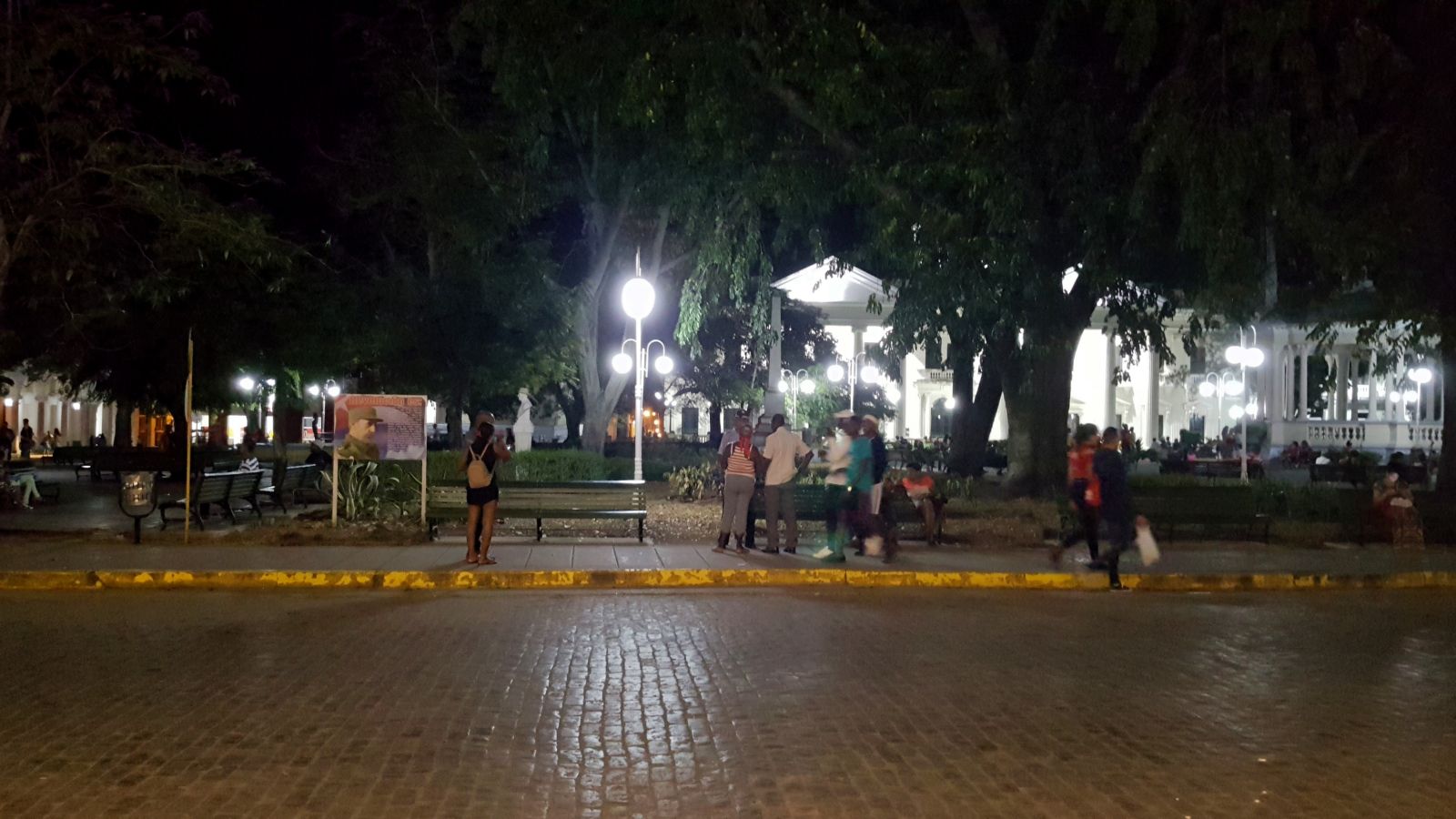
“We can’t wait to come back for A Cuban Adventure part II!”
Day 11: An early departure from Santa Clara to head back to Havana for our final day. We arrived in time for lunch (as guests of our hosts) at the amazing Vista Mar private restaurant. Right on Havana’s Malecon, the five mile esplanade stretching from the capital’s port to the other side of the city, the restaurant even has it’s own infinity pool!
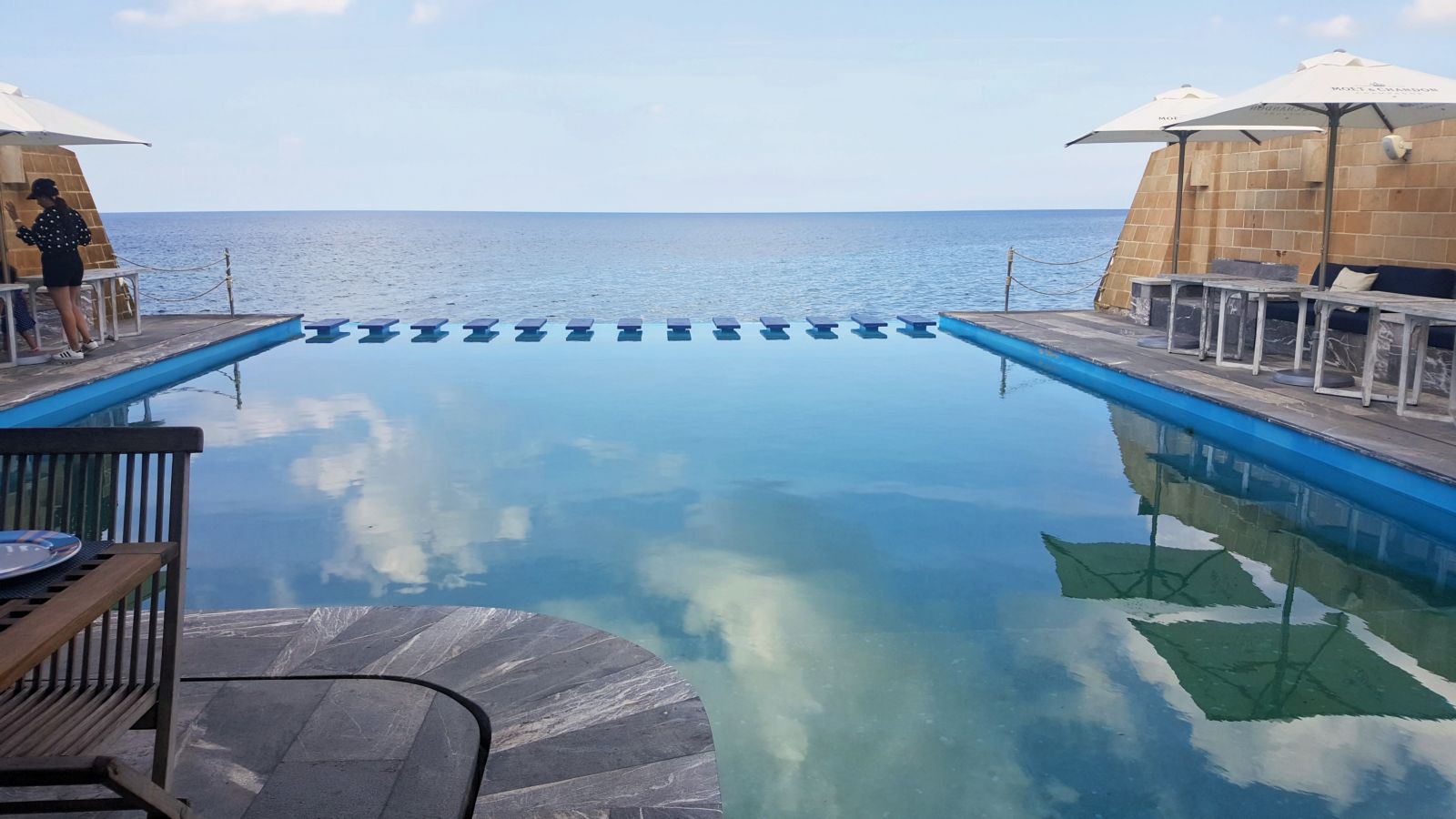
But the real star was the food! More European in style and presentation, but with undoubtable Cuban influence. A delightful way to sign off our Cuban adventure!
After a long, leisurely lunch, we were left with just a couple of hours to wander through Havana’s streets and pick up a few last minute souvenirs. It was the end of a truly amazing holiday experience. We’ve seen, learned and experienced so much. History, culture, nature, gastronomy, the lot. You might say, from the enormity of this piece, that we left no stone unturned. But, believe it or not, there’s still more to see. We can’t wait for A Cuban Adventure part II!







